Get 20% off Images & Videos—Ends Sunday! Use code: FLASH20%
Quick filters:
Sonnerat Stock Photos and Images
 Moudevi, Goddess of Discord and Misery, 1782. Creator: Pierre Sonnerat (1748-1814). Stock Photohttps://www.alamy.com/image-license-details/?v=1https://www.alamy.com/moudevi-goddess-of-discord-and-misery-1782-creator-pierre-sonnerat-1748-1814-image228930954.html
Moudevi, Goddess of Discord and Misery, 1782. Creator: Pierre Sonnerat (1748-1814). Stock Photohttps://www.alamy.com/image-license-details/?v=1https://www.alamy.com/moudevi-goddess-of-discord-and-misery-1782-creator-pierre-sonnerat-1748-1814-image228930954.htmlRMR8CKNE–Moudevi, Goddess of Discord and Misery, 1782. Creator: Pierre Sonnerat (1748-1814).
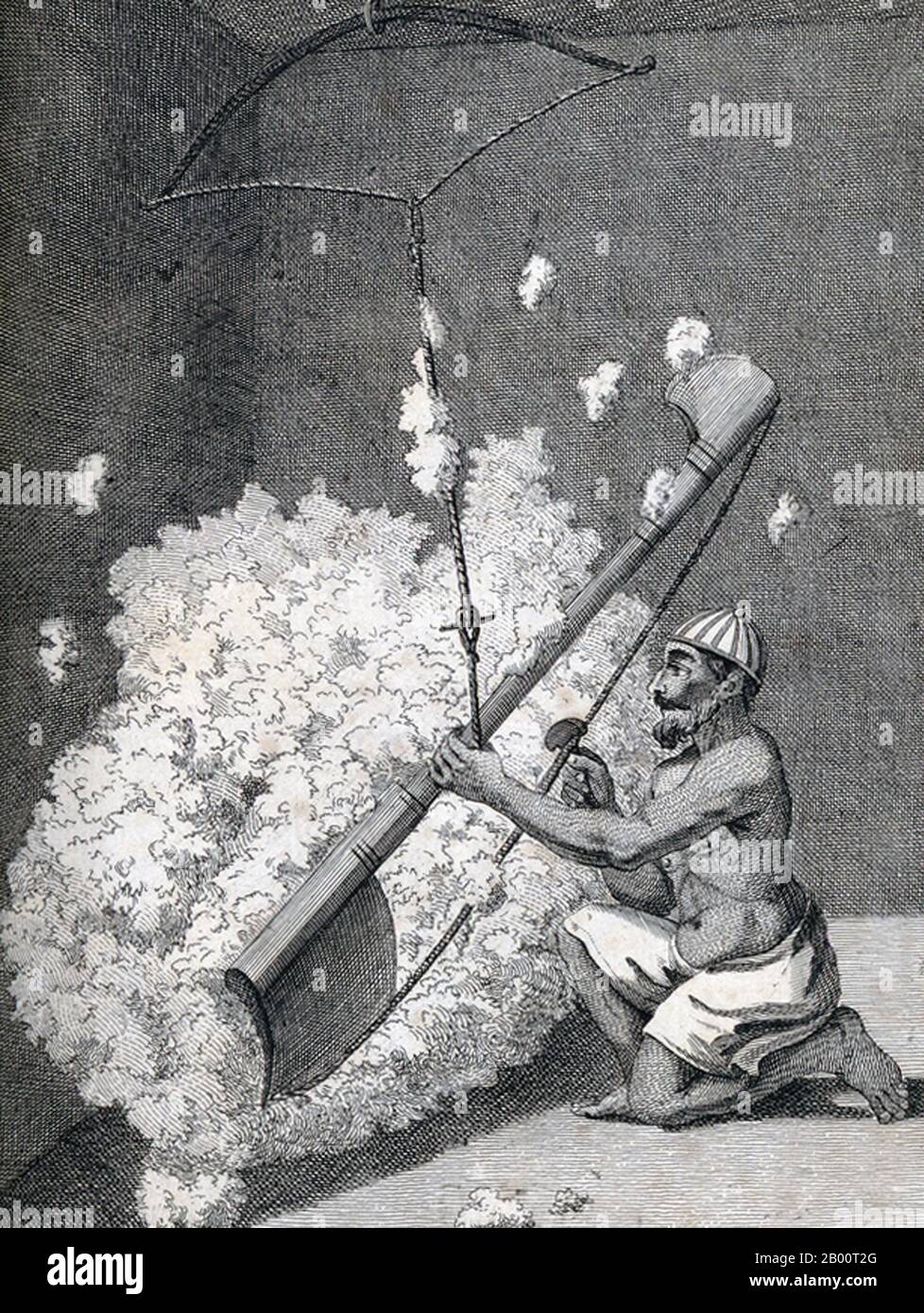 India/France: 'An Chulia (Tamil Muslim) Carding Cotton'. Engraving by Pierre Sonnerat (1748-1814), 1782. Pierre Sonnerat (1748-1814) was a French naturalist and explorer who made several voyages to Southeast Asia between 1769 and 1781. He published this two-volume account of his voyage in 1782. Volume 1 deals exclusively with India, whose culture Sonnerat very much admired, and is especially noteworthy for its extended discussion of religion in India, Hinduism in particular. Stock Photohttps://www.alamy.com/image-license-details/?v=1https://www.alamy.com/indiafrance-an-chulia-tamil-muslim-carding-cotton-engraving-by-pierre-sonnerat-1748-1814-1782-pierre-sonnerat-1748-1814-was-a-french-naturalist-and-explorer-who-made-several-voyages-to-southeast-asia-between-1769-and-1781-he-published-this-two-volume-account-of-his-voyage-in-1782-volume-1-deals-exclusively-with-india-whose-culture-sonnerat-very-much-admired-and-is-especially-noteworthy-for-its-extended-discussion-of-religion-in-india-hinduism-in-particular-image344226248.html
India/France: 'An Chulia (Tamil Muslim) Carding Cotton'. Engraving by Pierre Sonnerat (1748-1814), 1782. Pierre Sonnerat (1748-1814) was a French naturalist and explorer who made several voyages to Southeast Asia between 1769 and 1781. He published this two-volume account of his voyage in 1782. Volume 1 deals exclusively with India, whose culture Sonnerat very much admired, and is especially noteworthy for its extended discussion of religion in India, Hinduism in particular. Stock Photohttps://www.alamy.com/image-license-details/?v=1https://www.alamy.com/indiafrance-an-chulia-tamil-muslim-carding-cotton-engraving-by-pierre-sonnerat-1748-1814-1782-pierre-sonnerat-1748-1814-was-a-french-naturalist-and-explorer-who-made-several-voyages-to-southeast-asia-between-1769-and-1781-he-published-this-two-volume-account-of-his-voyage-in-1782-volume-1-deals-exclusively-with-india-whose-culture-sonnerat-very-much-admired-and-is-especially-noteworthy-for-its-extended-discussion-of-religion-in-india-hinduism-in-particular-image344226248.htmlRM2B00T2G–India/France: 'An Chulia (Tamil Muslim) Carding Cotton'. Engraving by Pierre Sonnerat (1748-1814), 1782. Pierre Sonnerat (1748-1814) was a French naturalist and explorer who made several voyages to Southeast Asia between 1769 and 1781. He published this two-volume account of his voyage in 1782. Volume 1 deals exclusively with India, whose culture Sonnerat very much admired, and is especially noteworthy for its extended discussion of religion in India, Hinduism in particular.
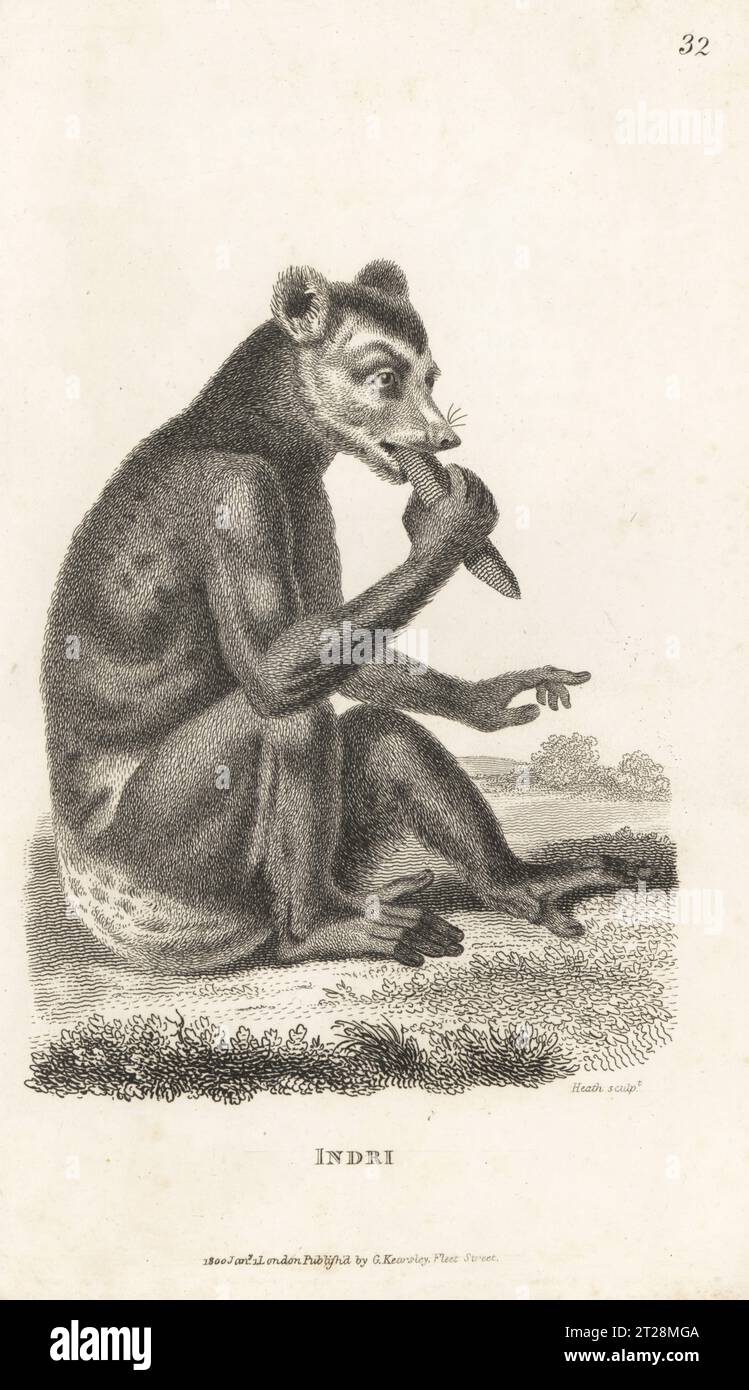 Indri or babaktoto, Indri indri, critically endangered. Indri, Lemur indri. After an illustration by Pierre Sonnerat. Copperplate engraving by James Heath from George Shaw’s General Zoology: Mammalia, G. Kearsley, Fleet Street, London, 1800. Stock Photohttps://www.alamy.com/image-license-details/?v=1https://www.alamy.com/indri-or-babaktoto-indri-indri-critically-endangered-indri-lemur-indri-after-an-illustration-by-pierre-sonnerat-copperplate-engraving-by-james-heath-from-george-shaws-general-zoology-mammalia-g-kearsley-fleet-street-london-1800-image569363210.html
Indri or babaktoto, Indri indri, critically endangered. Indri, Lemur indri. After an illustration by Pierre Sonnerat. Copperplate engraving by James Heath from George Shaw’s General Zoology: Mammalia, G. Kearsley, Fleet Street, London, 1800. Stock Photohttps://www.alamy.com/image-license-details/?v=1https://www.alamy.com/indri-or-babaktoto-indri-indri-critically-endangered-indri-lemur-indri-after-an-illustration-by-pierre-sonnerat-copperplate-engraving-by-james-heath-from-george-shaws-general-zoology-mammalia-g-kearsley-fleet-street-london-1800-image569363210.htmlRM2T28MGA–Indri or babaktoto, Indri indri, critically endangered. Indri, Lemur indri. After an illustration by Pierre Sonnerat. Copperplate engraving by James Heath from George Shaw’s General Zoology: Mammalia, G. Kearsley, Fleet Street, London, 1800.
 India: 'Trimurti - Brahma, Vishnu, and Siva'. Illustration by Pierre Sonnerat (1748-1814), 1782. Pierre Sonnerat (1748-1814) was a French naturalist and explorer who made several voyages to southeast Asia between 1769 and 1781. He published this two-volume account of his voyage of 1774-81 in 1782. Volume 1 deals exclusively with India, whose culture Sonnerat very much admired, and is especially noteworthy for its extended discussion of religion in India, Hinduism in particular. The book is illustrated with engravings based on Sonnerat’s drawings. Stock Photohttps://www.alamy.com/image-license-details/?v=1https://www.alamy.com/india-trimurti-brahma-vishnu-and-siva-illustration-by-pierre-sonnerat-1748-1814-1782-pierre-sonnerat-1748-1814-was-a-french-naturalist-and-explorer-who-made-several-voyages-to-southeast-asia-between-1769-and-1781-he-published-this-two-volume-account-of-his-voyage-of-1774-81-in-1782-volume-1-deals-exclusively-with-india-whose-culture-sonnerat-very-much-admired-and-is-especially-noteworthy-for-its-extended-discussion-of-religion-in-india-hinduism-in-particular-the-book-is-illustrated-with-engravings-based-on-sonnerats-drawings-image344226907.html
India: 'Trimurti - Brahma, Vishnu, and Siva'. Illustration by Pierre Sonnerat (1748-1814), 1782. Pierre Sonnerat (1748-1814) was a French naturalist and explorer who made several voyages to southeast Asia between 1769 and 1781. He published this two-volume account of his voyage of 1774-81 in 1782. Volume 1 deals exclusively with India, whose culture Sonnerat very much admired, and is especially noteworthy for its extended discussion of religion in India, Hinduism in particular. The book is illustrated with engravings based on Sonnerat’s drawings. Stock Photohttps://www.alamy.com/image-license-details/?v=1https://www.alamy.com/india-trimurti-brahma-vishnu-and-siva-illustration-by-pierre-sonnerat-1748-1814-1782-pierre-sonnerat-1748-1814-was-a-french-naturalist-and-explorer-who-made-several-voyages-to-southeast-asia-between-1769-and-1781-he-published-this-two-volume-account-of-his-voyage-of-1774-81-in-1782-volume-1-deals-exclusively-with-india-whose-culture-sonnerat-very-much-admired-and-is-especially-noteworthy-for-its-extended-discussion-of-religion-in-india-hinduism-in-particular-the-book-is-illustrated-with-engravings-based-on-sonnerats-drawings-image344226907.htmlRM2B00TX3–India: 'Trimurti - Brahma, Vishnu, and Siva'. Illustration by Pierre Sonnerat (1748-1814), 1782. Pierre Sonnerat (1748-1814) was a French naturalist and explorer who made several voyages to southeast Asia between 1769 and 1781. He published this two-volume account of his voyage of 1774-81 in 1782. Volume 1 deals exclusively with India, whose culture Sonnerat very much admired, and is especially noteworthy for its extended discussion of religion in India, Hinduism in particular. The book is illustrated with engravings based on Sonnerat’s drawings.
 Mauritius blue pigeon, Alectroenas nitidissimus. Extinct. Pigeon hollandais. Copperplate engraving by Fessard after an illustration by Pierre Sonnerat from his Voyage aux Indes Orientales et à la Chine (Voyage to the East Indies and China, Dentu, Paris, 1806. Stock Photohttps://www.alamy.com/image-license-details/?v=1https://www.alamy.com/mauritius-blue-pigeon-alectroenas-nitidissimus-extinct-pigeon-hollandais-copperplate-engraving-by-fessard-after-an-illustration-by-pierre-sonnerat-from-his-voyage-aux-indes-orientales-et-la-chine-voyage-to-the-east-indies-and-china-dentu-paris-1806-image618518865.html
Mauritius blue pigeon, Alectroenas nitidissimus. Extinct. Pigeon hollandais. Copperplate engraving by Fessard after an illustration by Pierre Sonnerat from his Voyage aux Indes Orientales et à la Chine (Voyage to the East Indies and China, Dentu, Paris, 1806. Stock Photohttps://www.alamy.com/image-license-details/?v=1https://www.alamy.com/mauritius-blue-pigeon-alectroenas-nitidissimus-extinct-pigeon-hollandais-copperplate-engraving-by-fessard-after-an-illustration-by-pierre-sonnerat-from-his-voyage-aux-indes-orientales-et-la-chine-voyage-to-the-east-indies-and-china-dentu-paris-1806-image618518865.htmlRM2XX7Y3D–Mauritius blue pigeon, Alectroenas nitidissimus. Extinct. Pigeon hollandais. Copperplate engraving by Fessard after an illustration by Pierre Sonnerat from his Voyage aux Indes Orientales et à la Chine (Voyage to the East Indies and China, Dentu, Paris, 1806.
 Madablota, Banisteria tetraptera, signed: P. Sonnerat pinx, Milsan sculp, pl. 135, after p. 238 (vol. 2), Sonnerat, Pierre M. (pinx.); Milsan (sculp.), 1782, Sonnerat, Pierre Stock Photohttps://www.alamy.com/image-license-details/?v=1https://www.alamy.com/madablota-banisteria-tetraptera-signed-p-sonnerat-pinx-milsan-sculp-pl-135-after-p-238-vol-2-sonnerat-pierre-m-pinx-milsan-sculp-1782-sonnerat-pierre-image328757144.html
Madablota, Banisteria tetraptera, signed: P. Sonnerat pinx, Milsan sculp, pl. 135, after p. 238 (vol. 2), Sonnerat, Pierre M. (pinx.); Milsan (sculp.), 1782, Sonnerat, Pierre Stock Photohttps://www.alamy.com/image-license-details/?v=1https://www.alamy.com/madablota-banisteria-tetraptera-signed-p-sonnerat-pinx-milsan-sculp-pl-135-after-p-238-vol-2-sonnerat-pierre-m-pinx-milsan-sculp-1782-sonnerat-pierre-image328757144.htmlRM2A2T52G–Madablota, Banisteria tetraptera, signed: P. Sonnerat pinx, Milsan sculp, pl. 135, after p. 238 (vol. 2), Sonnerat, Pierre M. (pinx.); Milsan (sculp.), 1782, Sonnerat, Pierre
 Cape Sonnerat, Glamorgan/Spring Bay, AU, Australia, Tasmania, S 42 20' 29'', N 148 20' 29'', map, Cartascapes Map published in 2024. Explore Cartascapes, a map revealing Earth's diverse landscapes, cultures, and ecosystems. Journey through time and space, discovering the interconnectedness of our planet's past, present, and future. Stock Photohttps://www.alamy.com/image-license-details/?v=1https://www.alamy.com/cape-sonnerat-glamorganspring-bay-au-australia-tasmania-s-42-20-29-n-148-20-29-map-cartascapes-map-published-in-2024-explore-cartascapes-a-map-revealing-earths-diverse-landscapes-cultures-and-ecosystems-journey-through-time-and-space-discovering-the-interconnectedness-of-our-planets-past-present-and-future-image625519568.html
Cape Sonnerat, Glamorgan/Spring Bay, AU, Australia, Tasmania, S 42 20' 29'', N 148 20' 29'', map, Cartascapes Map published in 2024. Explore Cartascapes, a map revealing Earth's diverse landscapes, cultures, and ecosystems. Journey through time and space, discovering the interconnectedness of our planet's past, present, and future. Stock Photohttps://www.alamy.com/image-license-details/?v=1https://www.alamy.com/cape-sonnerat-glamorganspring-bay-au-australia-tasmania-s-42-20-29-n-148-20-29-map-cartascapes-map-published-in-2024-explore-cartascapes-a-map-revealing-earths-diverse-landscapes-cultures-and-ecosystems-journey-through-time-and-space-discovering-the-interconnectedness-of-our-planets-past-present-and-future-image625519568.htmlRM2Y9JTGG–Cape Sonnerat, Glamorgan/Spring Bay, AU, Australia, Tasmania, S 42 20' 29'', N 148 20' 29'', map, Cartascapes Map published in 2024. Explore Cartascapes, a map revealing Earth's diverse landscapes, cultures, and ecosystems. Journey through time and space, discovering the interconnectedness of our planet's past, present, and future.
 N/A. Mauritius Blue Pigeon, drawnafter a stuffed specimen. 1782. Pierre Sonnerat 371 Columba nitidissima Stock Photohttps://www.alamy.com/image-license-details/?v=1https://www.alamy.com/na-mauritius-blue-pigeon-drawnafter-a-stuffed-specimen-1782-pierre-sonnerat-371-columba-nitidissima-image209890096.html
N/A. Mauritius Blue Pigeon, drawnafter a stuffed specimen. 1782. Pierre Sonnerat 371 Columba nitidissima Stock Photohttps://www.alamy.com/image-license-details/?v=1https://www.alamy.com/na-mauritius-blue-pigeon-drawnafter-a-stuffed-specimen-1782-pierre-sonnerat-371-columba-nitidissima-image209890096.htmlRMP5D8XT–N/A. Mauritius Blue Pigeon, drawnafter a stuffed specimen. 1782. Pierre Sonnerat 371 Columba nitidissima
 King bird of paradise, Cicinnurus regius. Illustration copied from Pierre Sonnerat. Handcoloured copperplate engraving from 'The Naturalist's Pocket Magazine,' Harrison, London, 1799. Stock Photohttps://www.alamy.com/image-license-details/?v=1https://www.alamy.com/king-bird-of-paradise-cicinnurus-regius-illustration-copied-from-pierre-sonnerat-handcoloured-copperplate-engraving-from-the-naturalists-pocket-magazine-harrison-london-1799-image210457449.html
King bird of paradise, Cicinnurus regius. Illustration copied from Pierre Sonnerat. Handcoloured copperplate engraving from 'The Naturalist's Pocket Magazine,' Harrison, London, 1799. Stock Photohttps://www.alamy.com/image-license-details/?v=1https://www.alamy.com/king-bird-of-paradise-cicinnurus-regius-illustration-copied-from-pierre-sonnerat-handcoloured-copperplate-engraving-from-the-naturalists-pocket-magazine-harrison-london-1799-image210457449.htmlRMP6B4HD–King bird of paradise, Cicinnurus regius. Illustration copied from Pierre Sonnerat. Handcoloured copperplate engraving from 'The Naturalist's Pocket Magazine,' Harrison, London, 1799.
 . Français : Nabab allant en promenade . 31 May 2011, 11:12:36. Pierre Sonnerat (1748-1814) 495 Sonnerat-3 nabab allant en promenade Stock Photohttps://www.alamy.com/image-license-details/?v=1https://www.alamy.com/franais-nabab-allant-en-promenade-31-may-2011-111236-pierre-sonnerat-1748-1814-495-sonnerat-3-nabab-allant-en-promenade-image188818320.html
. Français : Nabab allant en promenade . 31 May 2011, 11:12:36. Pierre Sonnerat (1748-1814) 495 Sonnerat-3 nabab allant en promenade Stock Photohttps://www.alamy.com/image-license-details/?v=1https://www.alamy.com/franais-nabab-allant-en-promenade-31-may-2011-111236-pierre-sonnerat-1748-1814-495-sonnerat-3-nabab-allant-en-promenade-image188818320.htmlRMMY5BKC–. Français : Nabab allant en promenade . 31 May 2011, 11:12:36. Pierre Sonnerat (1748-1814) 495 Sonnerat-3 nabab allant en promenade
 Sonnerat's Jungle Fowl (Gallus sonnerati) Stock Photohttps://www.alamy.com/image-license-details/?v=1https://www.alamy.com/sonnerats-jungle-fowl-gallus-sonnerati-image367536783.html
Sonnerat's Jungle Fowl (Gallus sonnerati) Stock Photohttps://www.alamy.com/image-license-details/?v=1https://www.alamy.com/sonnerats-jungle-fowl-gallus-sonnerati-image367536783.htmlRM2C9XMWK–Sonnerat's Jungle Fowl (Gallus sonnerati)
 Sonnerat Stock Photohttps://www.alamy.com/image-license-details/?v=1https://www.alamy.com/stock-photo-sonnerat-140495562.html
Sonnerat Stock Photohttps://www.alamy.com/image-license-details/?v=1https://www.alamy.com/stock-photo-sonnerat-140495562.htmlRMJ4G3EJ–Sonnerat
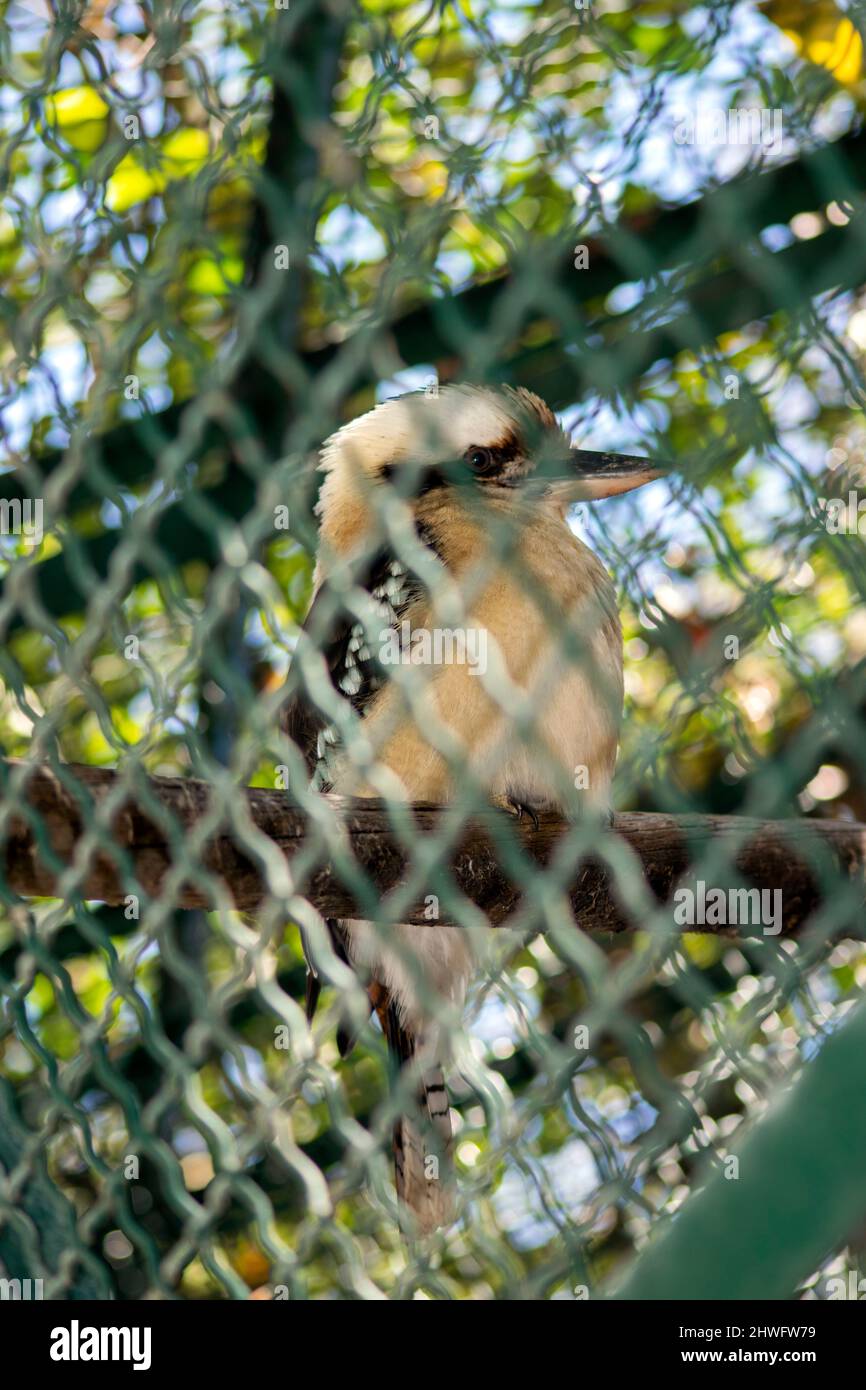 Dacelo novaeguineae. The laughing kookaburra (Dacelo novaeguineae) is a bird in the kingfisher subfamily Halcyoninae. It is a large robust kingfisher. Stock Photohttps://www.alamy.com/image-license-details/?v=1https://www.alamy.com/dacelo-novaeguineae-the-laughing-kookaburra-dacelo-novaeguineae-is-a-bird-in-the-kingfisher-subfamily-halcyoninae-it-is-a-large-robust-kingfisher-image463185053.html
Dacelo novaeguineae. The laughing kookaburra (Dacelo novaeguineae) is a bird in the kingfisher subfamily Halcyoninae. It is a large robust kingfisher. Stock Photohttps://www.alamy.com/image-license-details/?v=1https://www.alamy.com/dacelo-novaeguineae-the-laughing-kookaburra-dacelo-novaeguineae-is-a-bird-in-the-kingfisher-subfamily-halcyoninae-it-is-a-large-robust-kingfisher-image463185053.htmlRM2HWFW79–Dacelo novaeguineae. The laughing kookaburra (Dacelo novaeguineae) is a bird in the kingfisher subfamily Halcyoninae. It is a large robust kingfisher.
 Sonnerat 3 nabab allant en promenade Stock Photohttps://www.alamy.com/image-license-details/?v=1https://www.alamy.com/stock-photo-sonnerat-3-nabab-allant-en-promenade-140525493.html
Sonnerat 3 nabab allant en promenade Stock Photohttps://www.alamy.com/image-license-details/?v=1https://www.alamy.com/stock-photo-sonnerat-3-nabab-allant-en-promenade-140525493.htmlRMJ4HDKH–Sonnerat 3 nabab allant en promenade
 Sonnerat Stock Photohttps://www.alamy.com/image-license-details/?v=1https://www.alamy.com/stock-photo-sonnerat-132444811.html
Sonnerat Stock Photohttps://www.alamy.com/image-license-details/?v=1https://www.alamy.com/stock-photo-sonnerat-132444811.htmlRMHKDAKR–Sonnerat
 Rama-Sonnerat Stock Photohttps://www.alamy.com/image-license-details/?v=1https://www.alamy.com/stock-photo-rama-sonnerat-147662009.html
Rama-Sonnerat Stock Photohttps://www.alamy.com/image-license-details/?v=1https://www.alamy.com/stock-photo-rama-sonnerat-147662009.htmlRMJG6GB5–Rama-Sonnerat
 Religious Carriage of the Hindu (After Sonnerat), anonym 1867 Stock Photohttps://www.alamy.com/image-license-details/?v=1https://www.alamy.com/religious-carriage-of-the-hindu-after-sonnerat-anonym-1867-image220404966.html
Religious Carriage of the Hindu (After Sonnerat), anonym 1867 Stock Photohttps://www.alamy.com/image-license-details/?v=1https://www.alamy.com/religious-carriage-of-the-hindu-after-sonnerat-anonym-1867-image220404966.htmlRMPPG8NX–Religious Carriage of the Hindu (After Sonnerat), anonym 1867
 Rama-Sonnerat. Stock Photohttps://www.alamy.com/image-license-details/?v=1https://www.alamy.com/rama-sonnerat-image416502948.html
Rama-Sonnerat. Stock Photohttps://www.alamy.com/image-license-details/?v=1https://www.alamy.com/rama-sonnerat-image416502948.htmlRM2F5H9N8–Rama-Sonnerat.
![The aye-aye, recently added to the Zoological Society's collection, Regent's Park, 1862. 'The aye-aye (Cheiromys Madagascariensis) is one of the rarest and least known of the monkey tribe...[It] was discovered by the French traveller Sonnerat, in the forests of Madagascar...It received its name from the expression of surprise said to have been used by the natives when it was first seen...The Zoological Society have...succeeded in obtaining the first specimen...that has reached Europe alive. Edward Mellish, of the Mauritius...knowing the interest that attached itself to the aye-aye, made great Stock Photo The aye-aye, recently added to the Zoological Society's collection, Regent's Park, 1862. 'The aye-aye (Cheiromys Madagascariensis) is one of the rarest and least known of the monkey tribe...[It] was discovered by the French traveller Sonnerat, in the forests of Madagascar...It received its name from the expression of surprise said to have been used by the natives when it was first seen...The Zoological Society have...succeeded in obtaining the first specimen...that has reached Europe alive. Edward Mellish, of the Mauritius...knowing the interest that attached itself to the aye-aye, made great Stock Photo](https://c8.alamy.com/comp/2WG0JWW/the-aye-aye-recently-added-to-the-zoological-societys-collection-regents-park-1862-the-aye-aye-cheiromys-madagascariensis-is-one-of-the-rarest-and-least-known-of-the-monkey-tribe-it-was-discovered-by-the-french-traveller-sonnerat-in-the-forests-of-madagascarit-received-its-name-from-the-expression-of-surprise-said-to-have-been-used-by-the-natives-when-it-was-first-seenthe-zoological-society-havesucceeded-in-obtaining-the-first-specimenthat-has-reached-europe-alive-edward-mellish-of-the-mauritiusknowing-the-interest-that-attached-itself-to-the-aye-aye-made-great-2WG0JWW.jpg) The aye-aye, recently added to the Zoological Society's collection, Regent's Park, 1862. 'The aye-aye (Cheiromys Madagascariensis) is one of the rarest and least known of the monkey tribe...[It] was discovered by the French traveller Sonnerat, in the forests of Madagascar...It received its name from the expression of surprise said to have been used by the natives when it was first seen...The Zoological Society have...succeeded in obtaining the first specimen...that has reached Europe alive. Edward Mellish, of the Mauritius...knowing the interest that attached itself to the aye-aye, made great Stock Photohttps://www.alamy.com/image-license-details/?v=1https://www.alamy.com/the-aye-aye-recently-added-to-the-zoological-societys-collection-regents-park-1862-the-aye-aye-cheiromys-madagascariensis-is-one-of-the-rarest-and-least-known-of-the-monkey-tribe-it-was-discovered-by-the-french-traveller-sonnerat-in-the-forests-of-madagascarit-received-its-name-from-the-expression-of-surprise-said-to-have-been-used-by-the-natives-when-it-was-first-seenthe-zoological-society-havesucceeded-in-obtaining-the-first-specimenthat-has-reached-europe-alive-edward-mellish-of-the-mauritiusknowing-the-interest-that-attached-itself-to-the-aye-aye-made-great-image595001845.html
The aye-aye, recently added to the Zoological Society's collection, Regent's Park, 1862. 'The aye-aye (Cheiromys Madagascariensis) is one of the rarest and least known of the monkey tribe...[It] was discovered by the French traveller Sonnerat, in the forests of Madagascar...It received its name from the expression of surprise said to have been used by the natives when it was first seen...The Zoological Society have...succeeded in obtaining the first specimen...that has reached Europe alive. Edward Mellish, of the Mauritius...knowing the interest that attached itself to the aye-aye, made great Stock Photohttps://www.alamy.com/image-license-details/?v=1https://www.alamy.com/the-aye-aye-recently-added-to-the-zoological-societys-collection-regents-park-1862-the-aye-aye-cheiromys-madagascariensis-is-one-of-the-rarest-and-least-known-of-the-monkey-tribe-it-was-discovered-by-the-french-traveller-sonnerat-in-the-forests-of-madagascarit-received-its-name-from-the-expression-of-surprise-said-to-have-been-used-by-the-natives-when-it-was-first-seenthe-zoological-society-havesucceeded-in-obtaining-the-first-specimenthat-has-reached-europe-alive-edward-mellish-of-the-mauritiusknowing-the-interest-that-attached-itself-to-the-aye-aye-made-great-image595001845.htmlRM2WG0JWW–The aye-aye, recently added to the Zoological Society's collection, Regent's Park, 1862. 'The aye-aye (Cheiromys Madagascariensis) is one of the rarest and least known of the monkey tribe...[It] was discovered by the French traveller Sonnerat, in the forests of Madagascar...It received its name from the expression of surprise said to have been used by the natives when it was first seen...The Zoological Society have...succeeded in obtaining the first specimen...that has reached Europe alive. Edward Mellish, of the Mauritius...knowing the interest that attached itself to the aye-aye, made great
 Paeni Caori (religious devotee carrying offerings for the gods),1782. Creator: Pierre Sonnerat (1748-1814). Stock Photohttps://www.alamy.com/image-license-details/?v=1https://www.alamy.com/paeni-caori-religious-devotee-carrying-offerings-for-the-gods1782-creator-pierre-sonnerat-1748-1814-image228930956.html
Paeni Caori (religious devotee carrying offerings for the gods),1782. Creator: Pierre Sonnerat (1748-1814). Stock Photohttps://www.alamy.com/image-license-details/?v=1https://www.alamy.com/paeni-caori-religious-devotee-carrying-offerings-for-the-gods1782-creator-pierre-sonnerat-1748-1814-image228930956.htmlRMR8CKNG–Paeni Caori (religious devotee carrying offerings for the gods),1782. Creator: Pierre Sonnerat (1748-1814).
 Sonnerat. Stock Photohttps://www.alamy.com/image-license-details/?v=1https://www.alamy.com/sonnerat-image458177239.html
Sonnerat. Stock Photohttps://www.alamy.com/image-license-details/?v=1https://www.alamy.com/sonnerat-image458177239.htmlRM2HHBNMR–Sonnerat.
 A funeral procession in China: the cadaver is carried in a palanquin. Engraving by J.B.M. Poisson after P. (?) Sonnerat. Stock Photohttps://www.alamy.com/image-license-details/?v=1https://www.alamy.com/a-funeral-procession-in-china-the-cadaver-is-carried-in-a-palanquin-engraving-by-jbm-poisson-after-p-sonnerat-image450086143.html
A funeral procession in China: the cadaver is carried in a palanquin. Engraving by J.B.M. Poisson after P. (?) Sonnerat. Stock Photohttps://www.alamy.com/image-license-details/?v=1https://www.alamy.com/a-funeral-procession-in-china-the-cadaver-is-carried-in-a-palanquin-engraving-by-jbm-poisson-after-p-sonnerat-image450086143.htmlRM2H475D3–A funeral procession in China: the cadaver is carried in a palanquin. Engraving by J.B.M. Poisson after P. (?) Sonnerat.
RM2B00TX6–India: 'Seventh Avatar (incarnation) of Vishnu as Balarama, brother of Krishna'. Illustration by Pierre Sonnerat (1748-1814), 1782. Pierre Sonnerat (1748-1814) was a French naturalist and explorer who made several voyages to southeast Asia between 1769 and 1781. He published this two-volume account of his voyage of 1774-81 in 1782. Volume 1 deals exclusively with India, whose culture Sonnerat very much admired, and is especially noteworthy for its extended discussion of religion in India, Hinduism in particular. The book is illustrated with engravings based on Sonnerat’s drawings.
 Gray junglefowl or Sonnerat's junglefowl, Gallus sonneratii. Coq sauvage des Indes. Copperplate engraving by Fessart after an illustration by Pierre Sonnerat from his Voyage aux Indes Orientales et à la Chine (Voyage to the East Indies and China, Dentu, Paris, 1806. Stock Photohttps://www.alamy.com/image-license-details/?v=1https://www.alamy.com/gray-junglefowl-or-sonnerats-junglefowl-gallus-sonneratii-coq-sauvage-des-indes-copperplate-engraving-by-fessart-after-an-illustration-by-pierre-sonnerat-from-his-voyage-aux-indes-orientales-et-la-chine-voyage-to-the-east-indies-and-china-dentu-paris-1806-image618518930.html
Gray junglefowl or Sonnerat's junglefowl, Gallus sonneratii. Coq sauvage des Indes. Copperplate engraving by Fessart after an illustration by Pierre Sonnerat from his Voyage aux Indes Orientales et à la Chine (Voyage to the East Indies and China, Dentu, Paris, 1806. Stock Photohttps://www.alamy.com/image-license-details/?v=1https://www.alamy.com/gray-junglefowl-or-sonnerats-junglefowl-gallus-sonneratii-coq-sauvage-des-indes-copperplate-engraving-by-fessart-after-an-illustration-by-pierre-sonnerat-from-his-voyage-aux-indes-orientales-et-la-chine-voyage-to-the-east-indies-and-china-dentu-paris-1806-image618518930.htmlRM2XX7Y5P–Gray junglefowl or Sonnerat's junglefowl, Gallus sonneratii. Coq sauvage des Indes. Copperplate engraving by Fessart after an illustration by Pierre Sonnerat from his Voyage aux Indes Orientales et à la Chine (Voyage to the East Indies and China, Dentu, Paris, 1806.
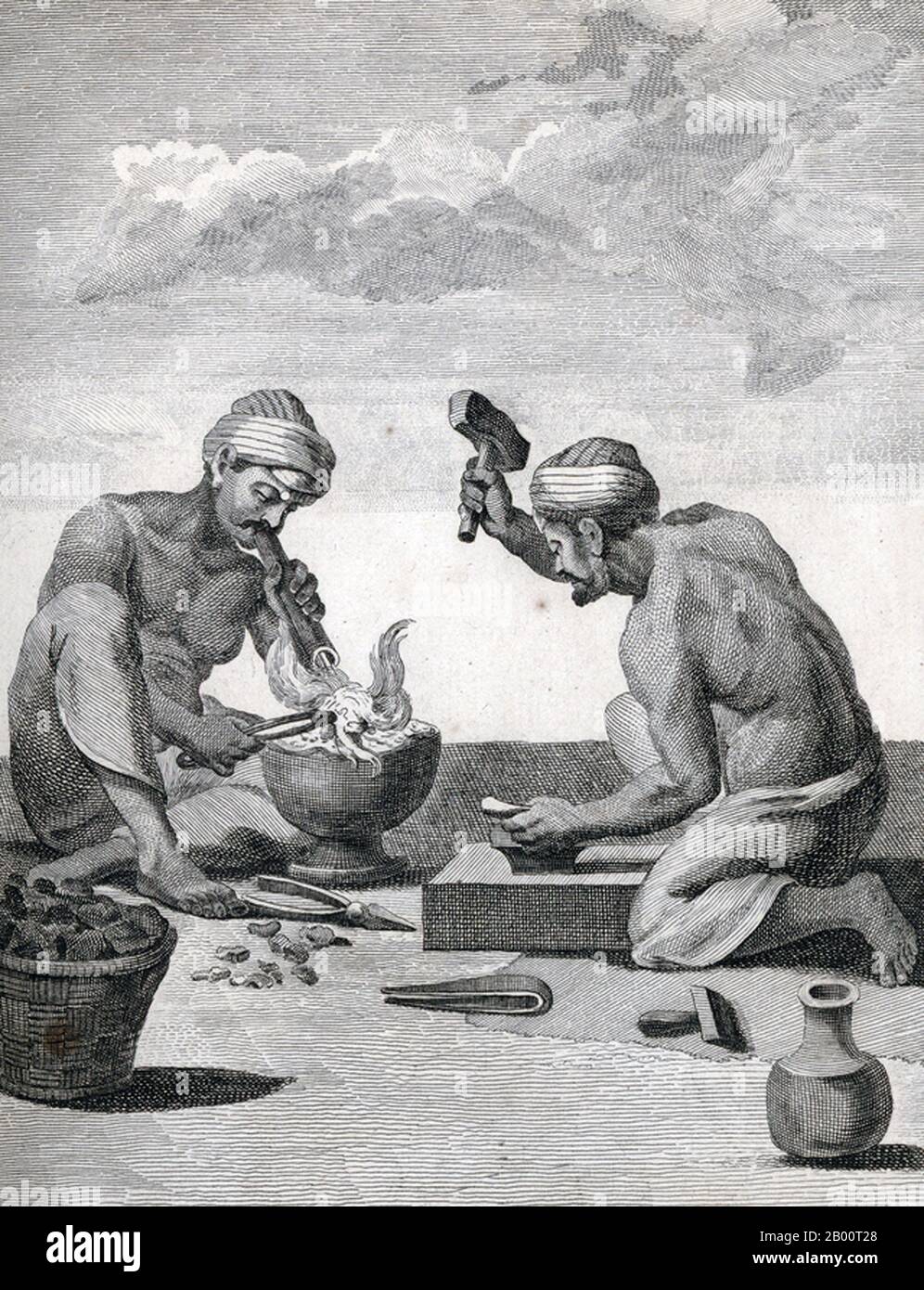 India/France: 'Two Goldsmiths'. Engraving by Pierre Sonnerat (1748-1814), 1782. Pierre Sonnerat (1748-1814) was a French naturalist and explorer who made several voyages to Southeast Asia between 1769 and 1781. He published this two-volume account of his voyage in 1782. Volume 1 deals exclusively with India, whose culture Sonnerat very much admired, and is especially noteworthy for its extended discussion of religion in India, Hinduism in particular. Volume 2 covers Sonnerat’s travels to China, Burma, Madagascar, the Maldives, Mauritius, Ceylon, Indonesia and the Philippines. Stock Photohttps://www.alamy.com/image-license-details/?v=1https://www.alamy.com/indiafrance-two-goldsmiths-engraving-by-pierre-sonnerat-1748-1814-1782-pierre-sonnerat-1748-1814-was-a-french-naturalist-and-explorer-who-made-several-voyages-to-southeast-asia-between-1769-and-1781-he-published-this-two-volume-account-of-his-voyage-in-1782-volume-1-deals-exclusively-with-india-whose-culture-sonnerat-very-much-admired-and-is-especially-noteworthy-for-its-extended-discussion-of-religion-in-india-hinduism-in-particular-volume-2-covers-sonnerats-travels-to-china-burma-madagascar-the-maldives-mauritius-ceylon-indonesia-and-the-philippines-image344226240.html
India/France: 'Two Goldsmiths'. Engraving by Pierre Sonnerat (1748-1814), 1782. Pierre Sonnerat (1748-1814) was a French naturalist and explorer who made several voyages to Southeast Asia between 1769 and 1781. He published this two-volume account of his voyage in 1782. Volume 1 deals exclusively with India, whose culture Sonnerat very much admired, and is especially noteworthy for its extended discussion of religion in India, Hinduism in particular. Volume 2 covers Sonnerat’s travels to China, Burma, Madagascar, the Maldives, Mauritius, Ceylon, Indonesia and the Philippines. Stock Photohttps://www.alamy.com/image-license-details/?v=1https://www.alamy.com/indiafrance-two-goldsmiths-engraving-by-pierre-sonnerat-1748-1814-1782-pierre-sonnerat-1748-1814-was-a-french-naturalist-and-explorer-who-made-several-voyages-to-southeast-asia-between-1769-and-1781-he-published-this-two-volume-account-of-his-voyage-in-1782-volume-1-deals-exclusively-with-india-whose-culture-sonnerat-very-much-admired-and-is-especially-noteworthy-for-its-extended-discussion-of-religion-in-india-hinduism-in-particular-volume-2-covers-sonnerats-travels-to-china-burma-madagascar-the-maldives-mauritius-ceylon-indonesia-and-the-philippines-image344226240.htmlRM2B00T28–India/France: 'Two Goldsmiths'. Engraving by Pierre Sonnerat (1748-1814), 1782. Pierre Sonnerat (1748-1814) was a French naturalist and explorer who made several voyages to Southeast Asia between 1769 and 1781. He published this two-volume account of his voyage in 1782. Volume 1 deals exclusively with India, whose culture Sonnerat very much admired, and is especially noteworthy for its extended discussion of religion in India, Hinduism in particular. Volume 2 covers Sonnerat’s travels to China, Burma, Madagascar, the Maldives, Mauritius, Ceylon, Indonesia and the Philippines.
 Wives, Wampi (Clausena lansium), signed: P. Sonnerat pinx, Milsan sculp, pl. 130, after p. 232 (vol. 2), Sonnerat, Pierre M. (pinx.); Milsan (sculp.), 1782, Sonnerat, Pierre Stock Photohttps://www.alamy.com/image-license-details/?v=1https://www.alamy.com/wives-wampi-clausena-lansium-signed-p-sonnerat-pinx-milsan-sculp-pl-130-after-p-232-vol-2-sonnerat-pierre-m-pinx-milsan-sculp-1782-sonnerat-pierre-image328757139.html
Wives, Wampi (Clausena lansium), signed: P. Sonnerat pinx, Milsan sculp, pl. 130, after p. 232 (vol. 2), Sonnerat, Pierre M. (pinx.); Milsan (sculp.), 1782, Sonnerat, Pierre Stock Photohttps://www.alamy.com/image-license-details/?v=1https://www.alamy.com/wives-wampi-clausena-lansium-signed-p-sonnerat-pinx-milsan-sculp-pl-130-after-p-232-vol-2-sonnerat-pierre-m-pinx-milsan-sculp-1782-sonnerat-pierre-image328757139.htmlRM2A2T52B–Wives, Wampi (Clausena lansium), signed: P. Sonnerat pinx, Milsan sculp, pl. 130, after p. 232 (vol. 2), Sonnerat, Pierre M. (pinx.); Milsan (sculp.), 1782, Sonnerat, Pierre
 Sonnerat-3 nabab allant en promenade. Stock Photohttps://www.alamy.com/image-license-details/?v=1https://www.alamy.com/sonnerat-3-nabab-allant-en-promenade-image458177308.html
Sonnerat-3 nabab allant en promenade. Stock Photohttps://www.alamy.com/image-license-details/?v=1https://www.alamy.com/sonnerat-3-nabab-allant-en-promenade-image458177308.htmlRM2HHBNR8–Sonnerat-3 nabab allant en promenade.
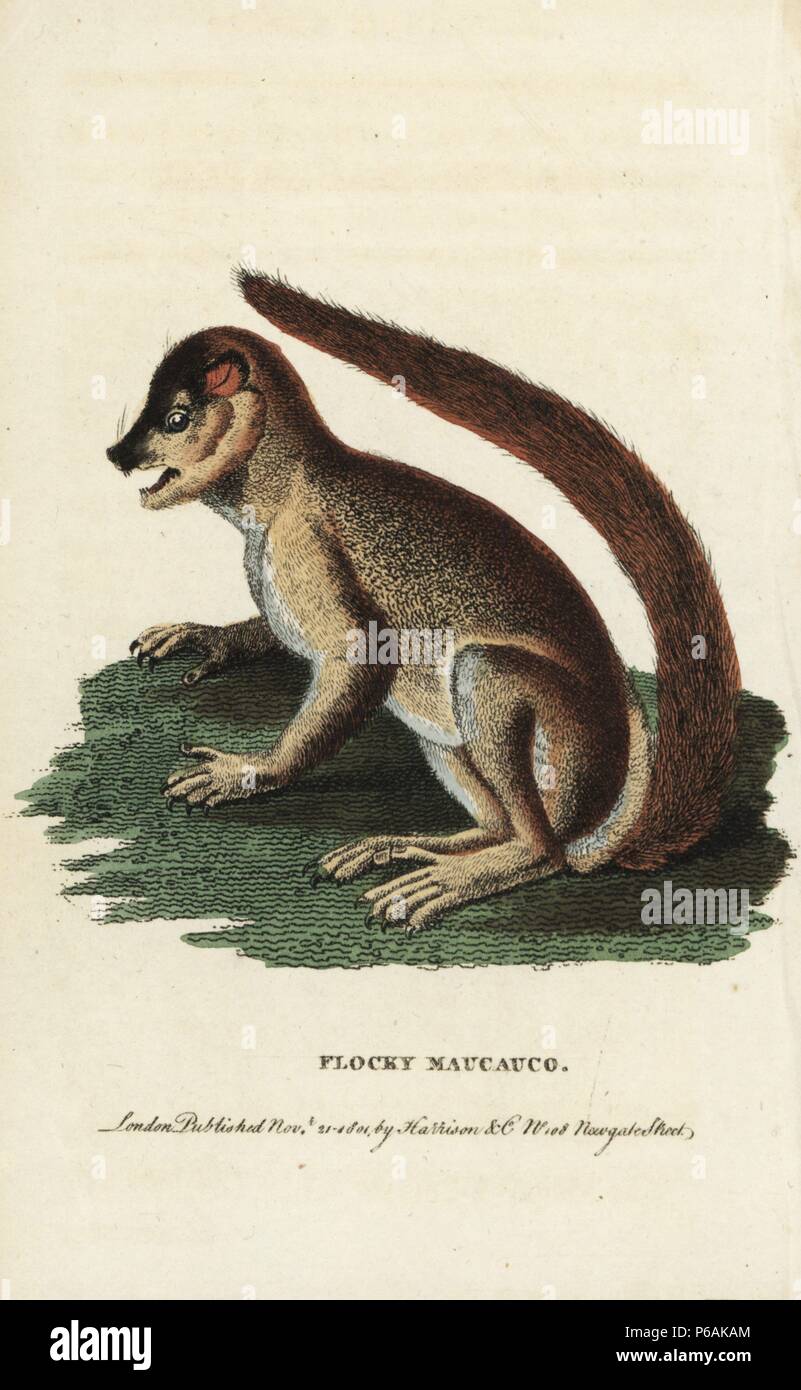 Flocky maucauco or woolly lemur or indri, Lemur laniger. Illustration copied from Pierre Sonnerat. Handcoloured copperplate engraving from 'The Naturalist's Pocket Magazine,' Harrison, London, 1801. Stock Photohttps://www.alamy.com/image-license-details/?v=1https://www.alamy.com/flocky-maucauco-or-woolly-lemur-or-indri-lemur-laniger-illustration-copied-from-pierre-sonnerat-handcoloured-copperplate-engraving-from-the-naturalists-pocket-magazine-harrison-london-1801-image210447068.html
Flocky maucauco or woolly lemur or indri, Lemur laniger. Illustration copied from Pierre Sonnerat. Handcoloured copperplate engraving from 'The Naturalist's Pocket Magazine,' Harrison, London, 1801. Stock Photohttps://www.alamy.com/image-license-details/?v=1https://www.alamy.com/flocky-maucauco-or-woolly-lemur-or-indri-lemur-laniger-illustration-copied-from-pierre-sonnerat-handcoloured-copperplate-engraving-from-the-naturalists-pocket-magazine-harrison-london-1801-image210447068.htmlRMP6AKAM–Flocky maucauco or woolly lemur or indri, Lemur laniger. Illustration copied from Pierre Sonnerat. Handcoloured copperplate engraving from 'The Naturalist's Pocket Magazine,' Harrison, London, 1801.
 . Français : Nabab allant en promenade . 31 May 2011, 11:12:36. Pierre Sonnerat (1748-1814) 567 Sonnerat-3 nabab allant en promenade Stock Photohttps://www.alamy.com/image-license-details/?v=1https://www.alamy.com/franais-nabab-allant-en-promenade-31-may-2011-111236-pierre-sonnerat-1748-1814-567-sonnerat-3-nabab-allant-en-promenade-image188087160.html
. Français : Nabab allant en promenade . 31 May 2011, 11:12:36. Pierre Sonnerat (1748-1814) 567 Sonnerat-3 nabab allant en promenade Stock Photohttps://www.alamy.com/image-license-details/?v=1https://www.alamy.com/franais-nabab-allant-en-promenade-31-may-2011-111236-pierre-sonnerat-1748-1814-567-sonnerat-3-nabab-allant-en-promenade-image188087160.htmlRMMX032G–. Français : Nabab allant en promenade . 31 May 2011, 11:12:36. Pierre Sonnerat (1748-1814) 567 Sonnerat-3 nabab allant en promenade
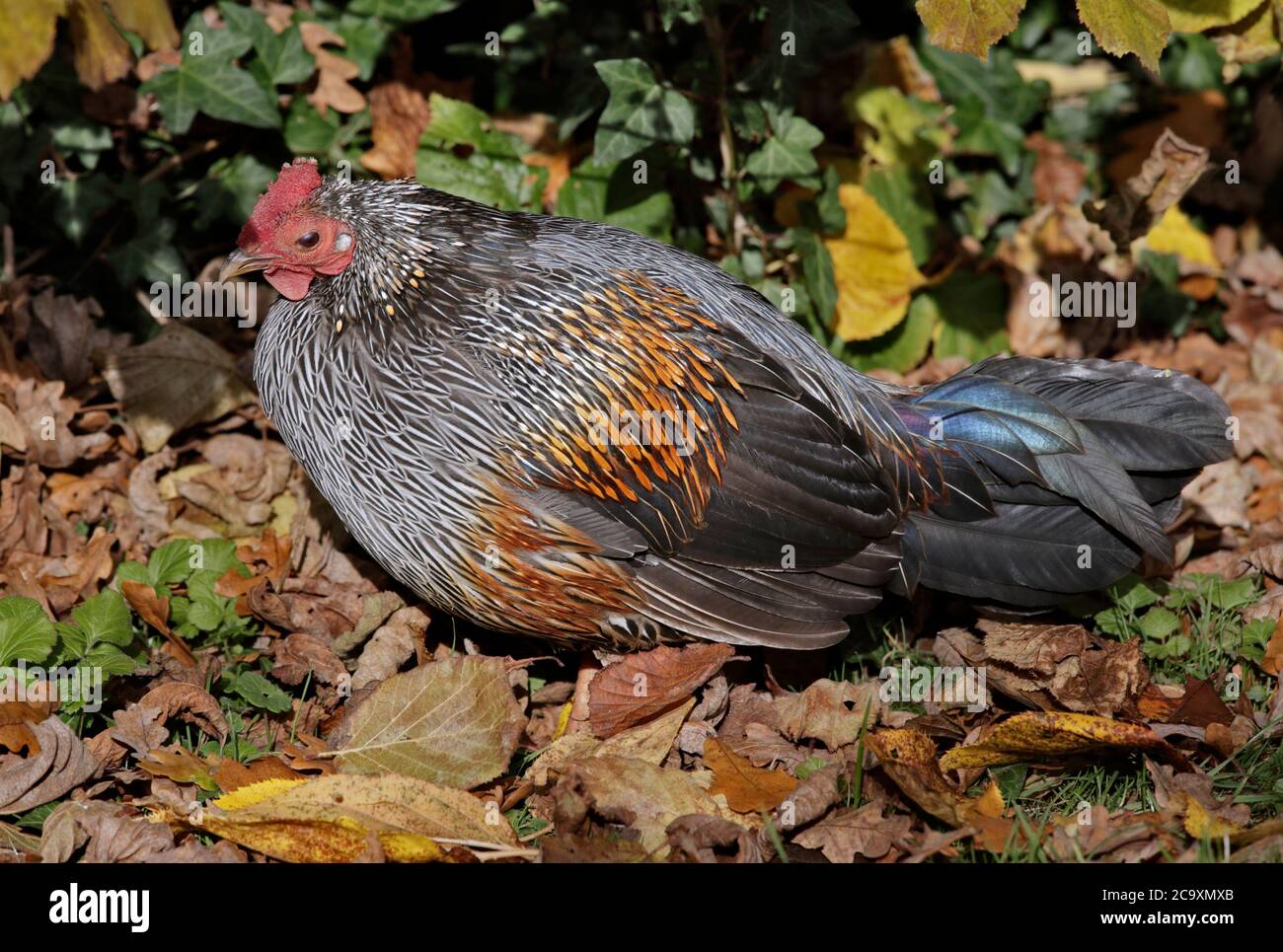 Sonnerat's Jungle Fowl (Gallus sonnerati) Stock Photohttps://www.alamy.com/image-license-details/?v=1https://www.alamy.com/sonnerats-jungle-fowl-gallus-sonnerati-image367536803.html
Sonnerat's Jungle Fowl (Gallus sonnerati) Stock Photohttps://www.alamy.com/image-license-details/?v=1https://www.alamy.com/sonnerats-jungle-fowl-gallus-sonnerati-image367536803.htmlRM2C9XMXB–Sonnerat's Jungle Fowl (Gallus sonnerati)
 Puidoux, Puidoux, Switzerland. 14th Apr, 2024. Combremont-Le-Petit Switzerland, 04/14/2024: MAXIM SONNERAT of Gasgas team #348 during MX Payerne 2024. MX Payerne 2024 and which is the 4th event of the 2024 Swiss motocross championship. MX Payerne 2024, which took place at Valbroye in Combremont-Le-Petit. (Credit Image: © Eric Dubost/ZUMA Press Wire) EDITORIAL USAGE ONLY! Not for Commercial USAGE! Credit: ZUMA Press, Inc./Alamy Live News Stock Photohttps://www.alamy.com/image-license-details/?v=1https://www.alamy.com/puidoux-puidoux-switzerland-14th-apr-2024-combremont-le-petit-switzerland-04142024-maxim-sonnerat-of-gasgas-team-348-during-mx-payerne-2024-mx-payerne-2024-and-which-is-the-4th-event-of-the-2024-swiss-motocross-championship-mx-payerne-2024-which-took-place-at-valbroye-in-combremont-le-petit-credit-image-eric-dubostzuma-press-wire-editorial-usage-only!-not-for-commercial-usage!-credit-zuma-press-incalamy-live-news-image602977302.html
Puidoux, Puidoux, Switzerland. 14th Apr, 2024. Combremont-Le-Petit Switzerland, 04/14/2024: MAXIM SONNERAT of Gasgas team #348 during MX Payerne 2024. MX Payerne 2024 and which is the 4th event of the 2024 Swiss motocross championship. MX Payerne 2024, which took place at Valbroye in Combremont-Le-Petit. (Credit Image: © Eric Dubost/ZUMA Press Wire) EDITORIAL USAGE ONLY! Not for Commercial USAGE! Credit: ZUMA Press, Inc./Alamy Live News Stock Photohttps://www.alamy.com/image-license-details/?v=1https://www.alamy.com/puidoux-puidoux-switzerland-14th-apr-2024-combremont-le-petit-switzerland-04142024-maxim-sonnerat-of-gasgas-team-348-during-mx-payerne-2024-mx-payerne-2024-and-which-is-the-4th-event-of-the-2024-swiss-motocross-championship-mx-payerne-2024-which-took-place-at-valbroye-in-combremont-le-petit-credit-image-eric-dubostzuma-press-wire-editorial-usage-only!-not-for-commercial-usage!-credit-zuma-press-incalamy-live-news-image602977302.htmlRM2X0YYKJ–Puidoux, Puidoux, Switzerland. 14th Apr, 2024. Combremont-Le-Petit Switzerland, 04/14/2024: MAXIM SONNERAT of Gasgas team #348 during MX Payerne 2024. MX Payerne 2024 and which is the 4th event of the 2024 Swiss motocross championship. MX Payerne 2024, which took place at Valbroye in Combremont-Le-Petit. (Credit Image: © Eric Dubost/ZUMA Press Wire) EDITORIAL USAGE ONLY! Not for Commercial USAGE! Credit: ZUMA Press, Inc./Alamy Live News
 The Grey Jungle Fowl or Sonnerat's Junglefowl, Gallus Sonnerati. Stock Photohttps://www.alamy.com/image-license-details/?v=1https://www.alamy.com/the-grey-jungle-fowl-or-sonnerats-junglefowl-gallus-sonnerati-image7143421.html
The Grey Jungle Fowl or Sonnerat's Junglefowl, Gallus Sonnerati. Stock Photohttps://www.alamy.com/image-license-details/?v=1https://www.alamy.com/the-grey-jungle-fowl-or-sonnerats-junglefowl-gallus-sonnerati-image7143421.htmlRMAA3BYE–The Grey Jungle Fowl or Sonnerat's Junglefowl, Gallus Sonnerati.
 Live stock : a cyclopedia for the farmer and stock owner including the breeding, care, feeding and management of horses, cattle, swine, sheep and poultry with a special department on dairying : being also a complete stock doctor : with one thousand explanatory engravings . enings of the forests, rather than of the denseforest itself; there are a number of species. A variety closely resem-bling our common barn yard fowl, is the Sonnerat fowl, ( Gallus Son-neratii) a native of the Ghautes, separating Malabar from Coromandel.Damphier, previous to the discovery of Sonnerat, found wild fowlsclosely Stock Photohttps://www.alamy.com/image-license-details/?v=1https://www.alamy.com/live-stock-a-cyclopedia-for-the-farmer-and-stock-owner-including-the-breeding-care-feeding-and-management-of-horses-cattle-swine-sheep-and-poultry-with-a-special-department-on-dairying-being-also-a-complete-stock-doctor-with-one-thousand-explanatory-engravings-enings-of-the-forests-rather-than-of-the-denseforest-itself-there-are-a-number-of-species-a-variety-closely-resem-bling-our-common-barn-yard-fowl-is-the-sonnerat-fowl-gallus-son-neratii-a-native-of-the-ghautes-separating-malabar-from-coromandeldamphier-previous-to-the-discovery-of-sonnerat-found-wild-fowlsclosely-image342846977.html
Live stock : a cyclopedia for the farmer and stock owner including the breeding, care, feeding and management of horses, cattle, swine, sheep and poultry with a special department on dairying : being also a complete stock doctor : with one thousand explanatory engravings . enings of the forests, rather than of the denseforest itself; there are a number of species. A variety closely resem-bling our common barn yard fowl, is the Sonnerat fowl, ( Gallus Son-neratii) a native of the Ghautes, separating Malabar from Coromandel.Damphier, previous to the discovery of Sonnerat, found wild fowlsclosely Stock Photohttps://www.alamy.com/image-license-details/?v=1https://www.alamy.com/live-stock-a-cyclopedia-for-the-farmer-and-stock-owner-including-the-breeding-care-feeding-and-management-of-horses-cattle-swine-sheep-and-poultry-with-a-special-department-on-dairying-being-also-a-complete-stock-doctor-with-one-thousand-explanatory-engravings-enings-of-the-forests-rather-than-of-the-denseforest-itself-there-are-a-number-of-species-a-variety-closely-resem-bling-our-common-barn-yard-fowl-is-the-sonnerat-fowl-gallus-son-neratii-a-native-of-the-ghautes-separating-malabar-from-coromandeldamphier-previous-to-the-discovery-of-sonnerat-found-wild-fowlsclosely-image342846977.htmlRM2AWP0PW–Live stock : a cyclopedia for the farmer and stock owner including the breeding, care, feeding and management of horses, cattle, swine, sheep and poultry with a special department on dairying : being also a complete stock doctor : with one thousand explanatory engravings . enings of the forests, rather than of the denseforest itself; there are a number of species. A variety closely resem-bling our common barn yard fowl, is the Sonnerat fowl, ( Gallus Son-neratii) a native of the Ghautes, separating Malabar from Coromandel.Damphier, previous to the discovery of Sonnerat, found wild fowlsclosely
 Forgeron sonnerat Stock Photohttps://www.alamy.com/image-license-details/?v=1https://www.alamy.com/stock-photo-forgeron-sonnerat-132500682.html
Forgeron sonnerat Stock Photohttps://www.alamy.com/image-license-details/?v=1https://www.alamy.com/stock-photo-forgeron-sonnerat-132500682.htmlRMHKFWY6–Forgeron sonnerat
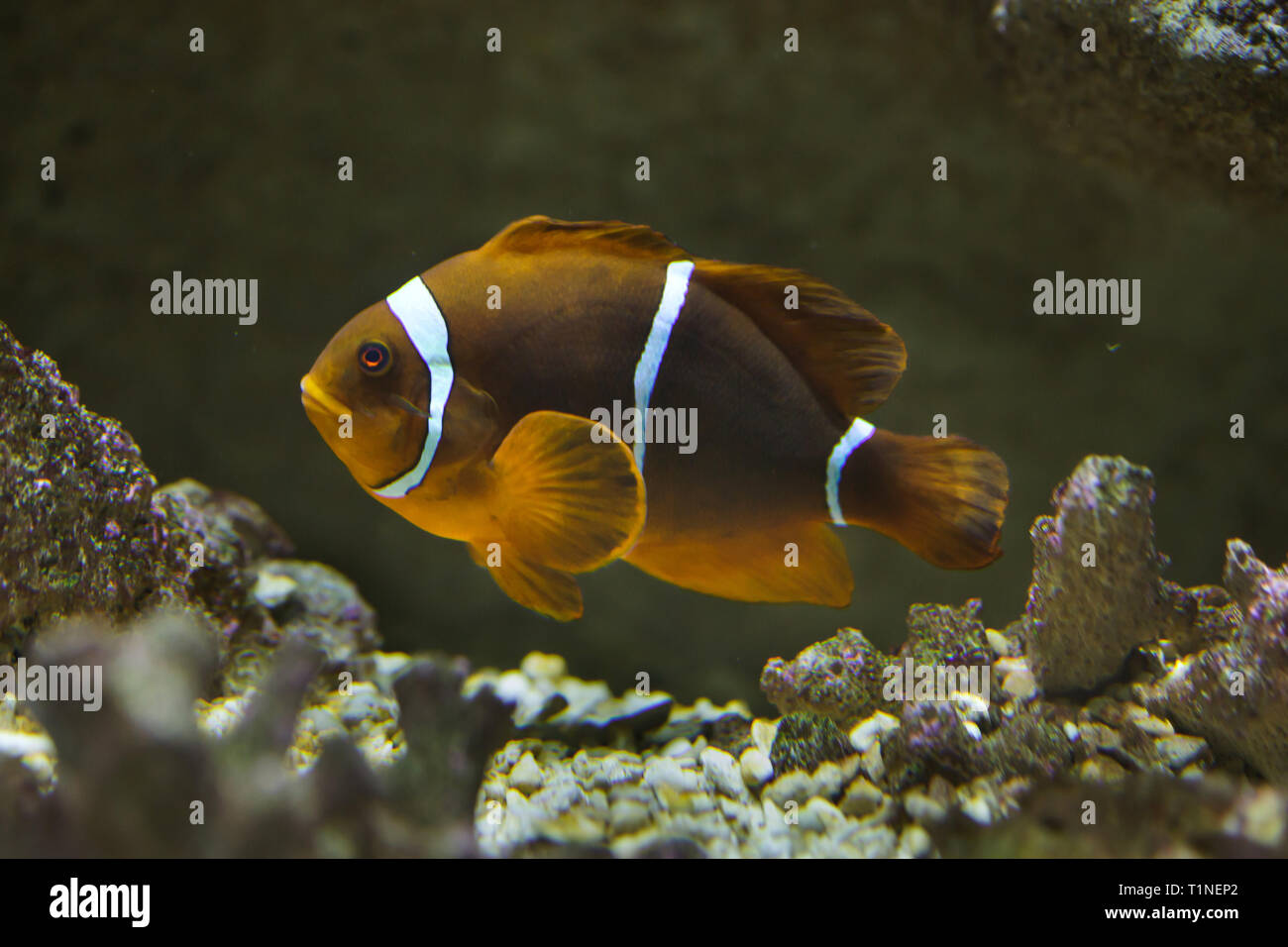 Spine-cheeked anemonefish (Premnas biaculeatus), also known as the maroon clownfish. Stock Photohttps://www.alamy.com/image-license-details/?v=1https://www.alamy.com/spine-cheeked-anemonefish-premnas-biaculeatus-also-known-as-the-maroon-clownfish-image242032394.html
Spine-cheeked anemonefish (Premnas biaculeatus), also known as the maroon clownfish. Stock Photohttps://www.alamy.com/image-license-details/?v=1https://www.alamy.com/spine-cheeked-anemonefish-premnas-biaculeatus-also-known-as-the-maroon-clownfish-image242032394.htmlRMT1NEP2–Spine-cheeked anemonefish (Premnas biaculeatus), also known as the maroon clownfish.
 Sonnerat's Jungle Fowl (Gallus sonnerati) Stock Photohttps://www.alamy.com/image-license-details/?v=1https://www.alamy.com/stock-photo-sonnerats-jungle-fowl-gallus-sonnerati-20835271.html
Sonnerat's Jungle Fowl (Gallus sonnerati) Stock Photohttps://www.alamy.com/image-license-details/?v=1https://www.alamy.com/stock-photo-sonnerats-jungle-fowl-gallus-sonnerati-20835271.htmlRMB5W3GR–Sonnerat's Jungle Fowl (Gallus sonnerati)
 The Laughing Kookaburra, an Australian tree Kingfisher Stock Photohttps://www.alamy.com/image-license-details/?v=1https://www.alamy.com/the-laughing-kookaburra-an-australian-tree-kingfisher-image445946722.html
The Laughing Kookaburra, an Australian tree Kingfisher Stock Photohttps://www.alamy.com/image-license-details/?v=1https://www.alamy.com/the-laughing-kookaburra-an-australian-tree-kingfisher-image445946722.htmlRF2GWEHGJ–The Laughing Kookaburra, an Australian tree Kingfisher
 1838 engraving of an aye-aye (now classified as Daubentonia madagascariensis; formerly Cheiromys madagascariensis), Madagascar Stock Photohttps://www.alamy.com/image-license-details/?v=1https://www.alamy.com/stock-photo-1838-engraving-of-an-aye-aye-now-classified-as-daubentonia-madagascariensis-21956120.html
1838 engraving of an aye-aye (now classified as Daubentonia madagascariensis; formerly Cheiromys madagascariensis), Madagascar Stock Photohttps://www.alamy.com/image-license-details/?v=1https://www.alamy.com/stock-photo-1838-engraving-of-an-aye-aye-now-classified-as-daubentonia-madagascariensis-21956120.htmlRMB7M574–1838 engraving of an aye-aye (now classified as Daubentonia madagascariensis; formerly Cheiromys madagascariensis), Madagascar
 Carding cotton, 1782. Creator: Pierre Sonnerat (1745-1814). Stock Photohttps://www.alamy.com/image-license-details/?v=1https://www.alamy.com/carding-cotton-1782-creator-pierre-sonnerat-1745-1814-image228931201.html
Carding cotton, 1782. Creator: Pierre Sonnerat (1745-1814). Stock Photohttps://www.alamy.com/image-license-details/?v=1https://www.alamy.com/carding-cotton-1782-creator-pierre-sonnerat-1745-1814-image228931201.htmlRMR8CM29–Carding cotton, 1782. Creator: Pierre Sonnerat (1745-1814).
 Group of Lychee fruit, food still-life Stock Photohttps://www.alamy.com/image-license-details/?v=1https://www.alamy.com/group-of-lychee-fruit-food-still-life-image233815331.html
Group of Lychee fruit, food still-life Stock Photohttps://www.alamy.com/image-license-details/?v=1https://www.alamy.com/group-of-lychee-fruit-food-still-life-image233815331.htmlRMRGB5RF–Group of Lychee fruit, food still-life
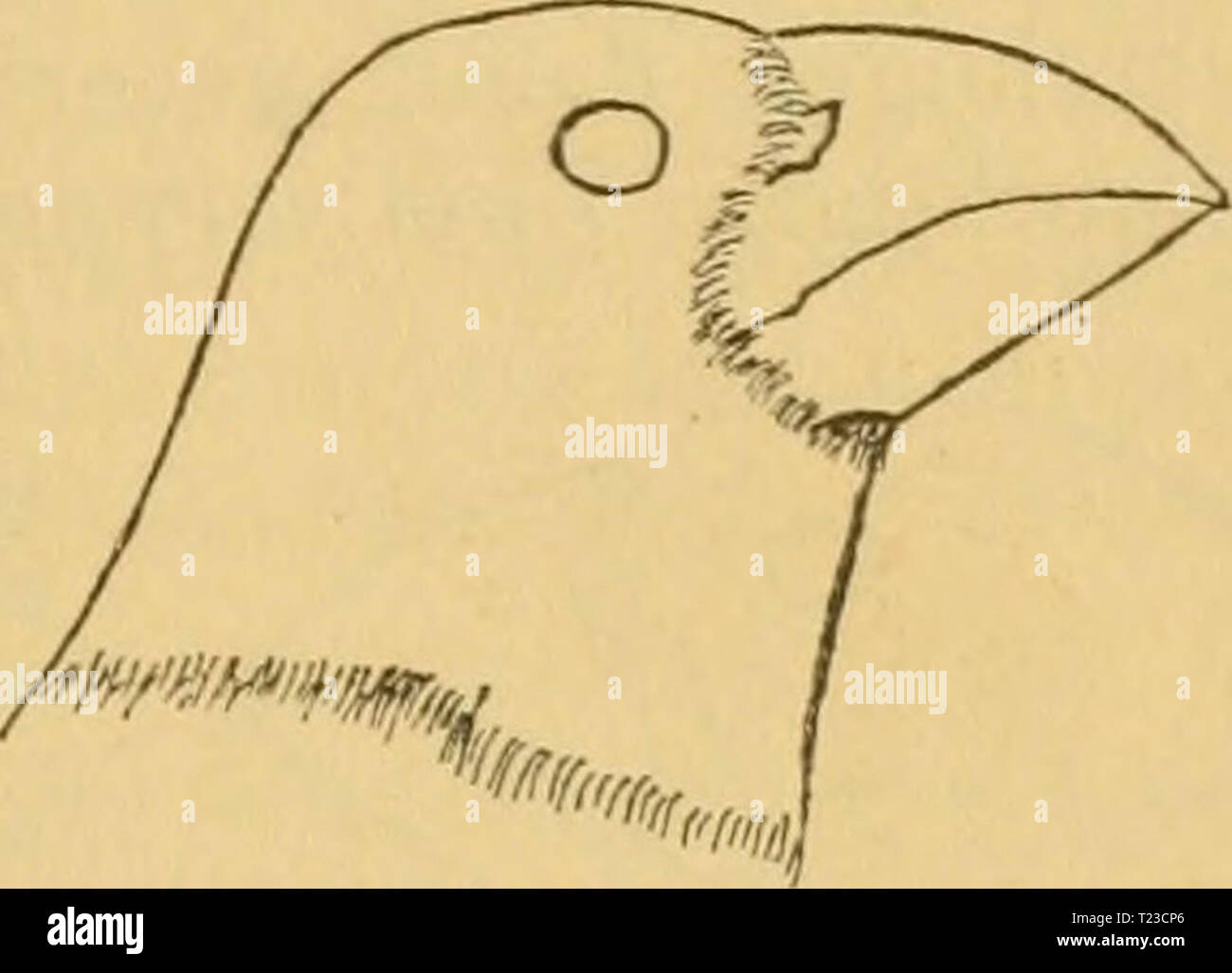 Archive image from page 120 of Die Vögel der paläarktischen Fauna Die Vögel der paläarktischen Fauna systematische Übersicht der in Europa, Nord-Asien und der Mittelmeerregion vorkommenden Vögel dievgelderpal01hart Year: 1910 Frinffillidae. 59 95. Eophona melanura melanura (Gm.). (Fig. 16.) l.oxia melanura Griuelin, Syst. Nat. I, p.853 (1788— Ex Sonnerat & Latliam — „Habitat in Sina'). dad. Kopf, Kopfseiten und ganze Kehle schwarz mit stahlblauem Schimmer. Oberseite graubraun, Hinterhals und Bürzel bräunlichgrau, nach dem Schwänze zu fast weißlich. Schwingen schwarz, Handschwingen mit etw Stock Photohttps://www.alamy.com/image-license-details/?v=1https://www.alamy.com/archive-image-from-page-120-of-die-vgel-der-palarktischen-fauna-die-vgel-der-palarktischen-fauna-systematische-bersicht-der-in-europa-nord-asien-und-der-mittelmeerregion-vorkommenden-vgel-dievgelderpal01hart-year-1910-frinffillidae-59-95-eophona-melanura-melanura-gm-fig-16-loxia-melanura-griuelin-syst-nat-i-p853-1788-ex-sonnerat-latliam-habitat-in-sina-dad-kopf-kopfseiten-und-ganze-kehle-schwarz-mit-stahlblauem-schimmer-oberseite-graubraun-hinterhals-und-brzel-brunlichgrau-nach-dem-schwnze-zu-fast-weilich-schwingen-schwarz-handschwingen-mit-etw-image242250350.html
Archive image from page 120 of Die Vögel der paläarktischen Fauna Die Vögel der paläarktischen Fauna systematische Übersicht der in Europa, Nord-Asien und der Mittelmeerregion vorkommenden Vögel dievgelderpal01hart Year: 1910 Frinffillidae. 59 95. Eophona melanura melanura (Gm.). (Fig. 16.) l.oxia melanura Griuelin, Syst. Nat. I, p.853 (1788— Ex Sonnerat & Latliam — „Habitat in Sina'). dad. Kopf, Kopfseiten und ganze Kehle schwarz mit stahlblauem Schimmer. Oberseite graubraun, Hinterhals und Bürzel bräunlichgrau, nach dem Schwänze zu fast weißlich. Schwingen schwarz, Handschwingen mit etw Stock Photohttps://www.alamy.com/image-license-details/?v=1https://www.alamy.com/archive-image-from-page-120-of-die-vgel-der-palarktischen-fauna-die-vgel-der-palarktischen-fauna-systematische-bersicht-der-in-europa-nord-asien-und-der-mittelmeerregion-vorkommenden-vgel-dievgelderpal01hart-year-1910-frinffillidae-59-95-eophona-melanura-melanura-gm-fig-16-loxia-melanura-griuelin-syst-nat-i-p853-1788-ex-sonnerat-latliam-habitat-in-sina-dad-kopf-kopfseiten-und-ganze-kehle-schwarz-mit-stahlblauem-schimmer-oberseite-graubraun-hinterhals-und-brzel-brunlichgrau-nach-dem-schwnze-zu-fast-weilich-schwingen-schwarz-handschwingen-mit-etw-image242250350.htmlRMT23CP6–Archive image from page 120 of Die Vögel der paläarktischen Fauna Die Vögel der paläarktischen Fauna systematische Übersicht der in Europa, Nord-Asien und der Mittelmeerregion vorkommenden Vögel dievgelderpal01hart Year: 1910 Frinffillidae. 59 95. Eophona melanura melanura (Gm.). (Fig. 16.) l.oxia melanura Griuelin, Syst. Nat. I, p.853 (1788— Ex Sonnerat & Latliam — „Habitat in Sina'). dad. Kopf, Kopfseiten und ganze Kehle schwarz mit stahlblauem Schimmer. Oberseite graubraun, Hinterhals und Bürzel bräunlichgrau, nach dem Schwänze zu fast weißlich. Schwingen schwarz, Handschwingen mit etw
 Indian gray hornbill, Ocyceros birostris. Calao de Gingi. Copperplate engraving by J. J. Avril after an illustration by Pierre Sonnerat from his Voyage aux Indes Orientales et à la Chine (Voyage to the East Indies and China, Dentu, Paris, 1806. Stock Photohttps://www.alamy.com/image-license-details/?v=1https://www.alamy.com/indian-gray-hornbill-ocyceros-birostris-calao-de-gingi-copperplate-engraving-by-j-j-avril-after-an-illustration-by-pierre-sonnerat-from-his-voyage-aux-indes-orientales-et-la-chine-voyage-to-the-east-indies-and-china-dentu-paris-1806-image618518787.html
Indian gray hornbill, Ocyceros birostris. Calao de Gingi. Copperplate engraving by J. J. Avril after an illustration by Pierre Sonnerat from his Voyage aux Indes Orientales et à la Chine (Voyage to the East Indies and China, Dentu, Paris, 1806. Stock Photohttps://www.alamy.com/image-license-details/?v=1https://www.alamy.com/indian-gray-hornbill-ocyceros-birostris-calao-de-gingi-copperplate-engraving-by-j-j-avril-after-an-illustration-by-pierre-sonnerat-from-his-voyage-aux-indes-orientales-et-la-chine-voyage-to-the-east-indies-and-china-dentu-paris-1806-image618518787.htmlRM2XX7Y0K–Indian gray hornbill, Ocyceros birostris. Calao de Gingi. Copperplate engraving by J. J. Avril after an illustration by Pierre Sonnerat from his Voyage aux Indes Orientales et à la Chine (Voyage to the East Indies and China, Dentu, Paris, 1806.
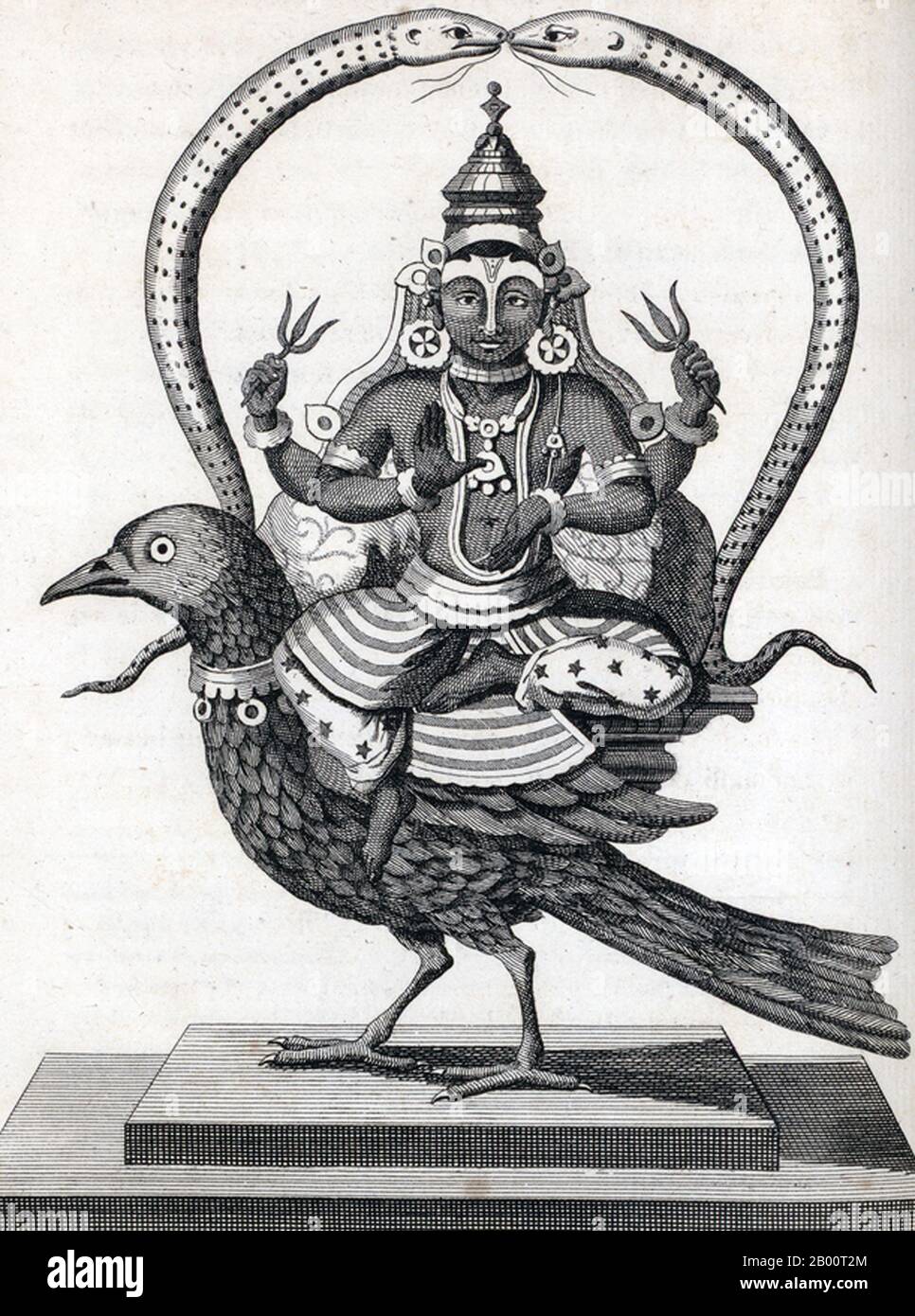 India/France: 'Shani Dev'. Engraving by Pierre Sonnerat (1748-1814), 1782. Pierre Sonnerat (1748-1814) was a French naturalist and explorer who made several voyages to Southeast Asia between 1769 and 1781. He published this two-volume account of his voyage in 1782. Volume 1 deals exclusively with India, whose culture Sonnerat very much admired, and is especially noteworthy for its extended discussion of religion in India, Hinduism in particular. Volume 2 covers Sonnerat’s travels to China, Burma, Madagascar, the Maldives, Mauritius, Ceylon, Indonesia and the Philippines. Stock Photohttps://www.alamy.com/image-license-details/?v=1https://www.alamy.com/indiafrance-shani-dev-engraving-by-pierre-sonnerat-1748-1814-1782-pierre-sonnerat-1748-1814-was-a-french-naturalist-and-explorer-who-made-several-voyages-to-southeast-asia-between-1769-and-1781-he-published-this-two-volume-account-of-his-voyage-in-1782-volume-1-deals-exclusively-with-india-whose-culture-sonnerat-very-much-admired-and-is-especially-noteworthy-for-its-extended-discussion-of-religion-in-india-hinduism-in-particular-volume-2-covers-sonnerats-travels-to-china-burma-madagascar-the-maldives-mauritius-ceylon-indonesia-and-the-philippines-image344226252.html
India/France: 'Shani Dev'. Engraving by Pierre Sonnerat (1748-1814), 1782. Pierre Sonnerat (1748-1814) was a French naturalist and explorer who made several voyages to Southeast Asia between 1769 and 1781. He published this two-volume account of his voyage in 1782. Volume 1 deals exclusively with India, whose culture Sonnerat very much admired, and is especially noteworthy for its extended discussion of religion in India, Hinduism in particular. Volume 2 covers Sonnerat’s travels to China, Burma, Madagascar, the Maldives, Mauritius, Ceylon, Indonesia and the Philippines. Stock Photohttps://www.alamy.com/image-license-details/?v=1https://www.alamy.com/indiafrance-shani-dev-engraving-by-pierre-sonnerat-1748-1814-1782-pierre-sonnerat-1748-1814-was-a-french-naturalist-and-explorer-who-made-several-voyages-to-southeast-asia-between-1769-and-1781-he-published-this-two-volume-account-of-his-voyage-in-1782-volume-1-deals-exclusively-with-india-whose-culture-sonnerat-very-much-admired-and-is-especially-noteworthy-for-its-extended-discussion-of-religion-in-india-hinduism-in-particular-volume-2-covers-sonnerats-travels-to-china-burma-madagascar-the-maldives-mauritius-ceylon-indonesia-and-the-philippines-image344226252.htmlRM2B00T2M–India/France: 'Shani Dev'. Engraving by Pierre Sonnerat (1748-1814), 1782. Pierre Sonnerat (1748-1814) was a French naturalist and explorer who made several voyages to Southeast Asia between 1769 and 1781. He published this two-volume account of his voyage in 1782. Volume 1 deals exclusively with India, whose culture Sonnerat very much admired, and is especially noteworthy for its extended discussion of religion in India, Hinduism in particular. Volume 2 covers Sonnerat’s travels to China, Burma, Madagascar, the Maldives, Mauritius, Ceylon, Indonesia and the Philippines.
 Dutch Pigeon, A Dutch dove, Signed: P. Sonnerat pinx, Féssart sculp, Pl. 101, after p. 176 (Vol. 2), Sonnerat, Pierre M. (pinx.); Féssart (sculp.), 1782, Sonnerat, Pierre Stock Photohttps://www.alamy.com/image-license-details/?v=1https://www.alamy.com/dutch-pigeon-a-dutch-dove-signed-p-sonnerat-pinx-fssart-sculp-pl-101-after-p-176-vol-2-sonnerat-pierre-m-pinx-fssart-sculp-1782-sonnerat-pierre-image328757108.html
Dutch Pigeon, A Dutch dove, Signed: P. Sonnerat pinx, Féssart sculp, Pl. 101, after p. 176 (Vol. 2), Sonnerat, Pierre M. (pinx.); Féssart (sculp.), 1782, Sonnerat, Pierre Stock Photohttps://www.alamy.com/image-license-details/?v=1https://www.alamy.com/dutch-pigeon-a-dutch-dove-signed-p-sonnerat-pinx-fssart-sculp-pl-101-after-p-176-vol-2-sonnerat-pierre-m-pinx-fssart-sculp-1782-sonnerat-pierre-image328757108.htmlRM2A2T518–Dutch Pigeon, A Dutch dove, Signed: P. Sonnerat pinx, Féssart sculp, Pl. 101, after p. 176 (Vol. 2), Sonnerat, Pierre M. (pinx.); Féssart (sculp.), 1782, Sonnerat, Pierre
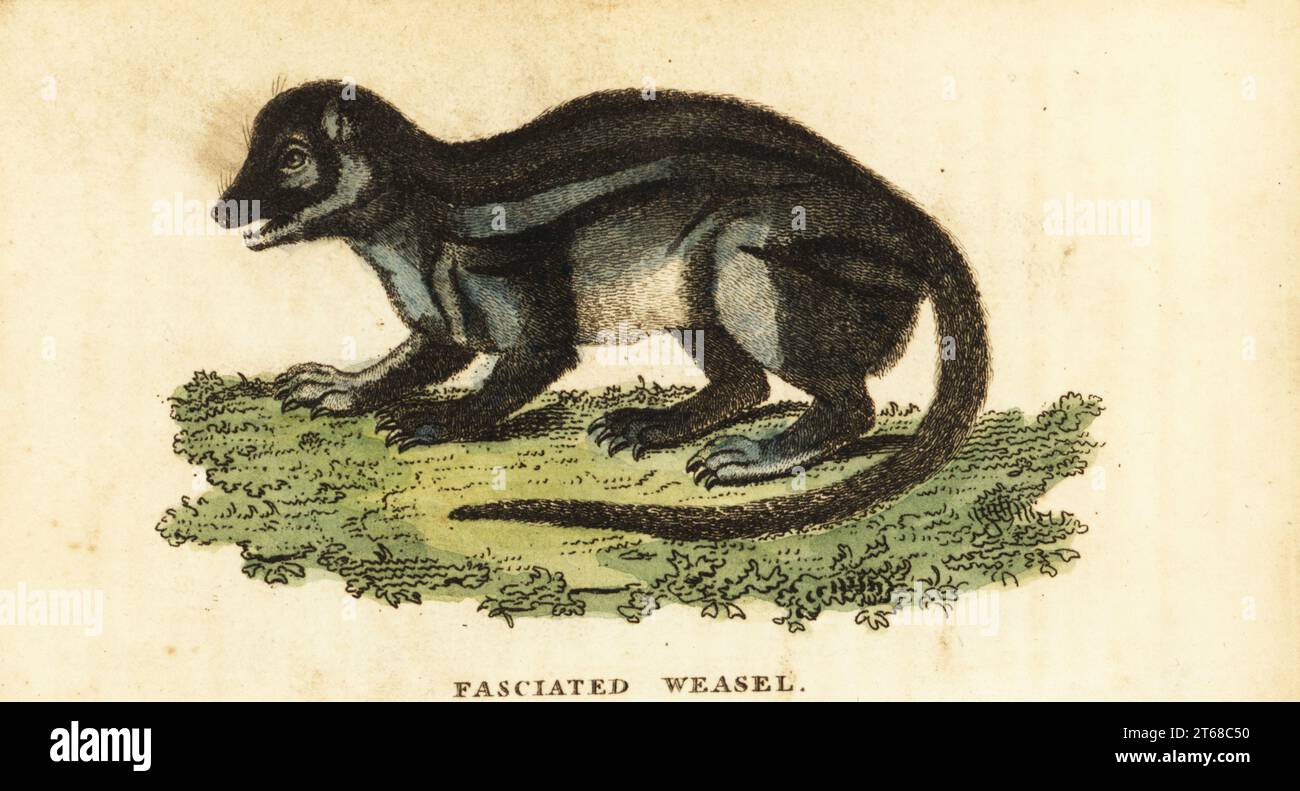 Broad-striped Malagasy mongoose, Galidictis fasciata. Fasciated weasel, Viverra fasciata. Handcolored copperplate engraving after an illustration by Pierre Sonnerat from The Naturalists Pocket Magazine, Harrison, Fleet Street, London, 1800. Stock Photohttps://www.alamy.com/image-license-details/?v=1https://www.alamy.com/broad-striped-malagasy-mongoose-galidictis-fasciata-fasciated-weasel-viverra-fasciata-handcolored-copperplate-engraving-after-an-illustration-by-pierre-sonnerat-from-the-naturalists-pocket-magazine-harrison-fleet-street-london-1800-image571815244.html
Broad-striped Malagasy mongoose, Galidictis fasciata. Fasciated weasel, Viverra fasciata. Handcolored copperplate engraving after an illustration by Pierre Sonnerat from The Naturalists Pocket Magazine, Harrison, Fleet Street, London, 1800. Stock Photohttps://www.alamy.com/image-license-details/?v=1https://www.alamy.com/broad-striped-malagasy-mongoose-galidictis-fasciata-fasciated-weasel-viverra-fasciata-handcolored-copperplate-engraving-after-an-illustration-by-pierre-sonnerat-from-the-naturalists-pocket-magazine-harrison-fleet-street-london-1800-image571815244.htmlRM2T68C50–Broad-striped Malagasy mongoose, Galidictis fasciata. Fasciated weasel, Viverra fasciata. Handcolored copperplate engraving after an illustration by Pierre Sonnerat from The Naturalists Pocket Magazine, Harrison, Fleet Street, London, 1800.
 . Français : Nabab allant en promenade . 31 May 2011, 11:12:36. Pierre Sonnerat (1748-1814) 567 Sonnerat-3 nabab allant en promenade Stock Photohttps://www.alamy.com/image-license-details/?v=1https://www.alamy.com/franais-nabab-allant-en-promenade-31-may-2011-111236-pierre-sonnerat-1748-1814-567-sonnerat-3-nabab-allant-en-promenade-image187563181.html
. Français : Nabab allant en promenade . 31 May 2011, 11:12:36. Pierre Sonnerat (1748-1814) 567 Sonnerat-3 nabab allant en promenade Stock Photohttps://www.alamy.com/image-license-details/?v=1https://www.alamy.com/franais-nabab-allant-en-promenade-31-may-2011-111236-pierre-sonnerat-1748-1814-567-sonnerat-3-nabab-allant-en-promenade-image187563181.htmlRMMW46N1–. Français : Nabab allant en promenade . 31 May 2011, 11:12:36. Pierre Sonnerat (1748-1814) 567 Sonnerat-3 nabab allant en promenade
 . English: An engraving by Poison after a painting by Pierre Sonnerat (1748-1814). According to the photo caption at the web site, 'Women who had lost their husbands and who had no sons to support them were often treated as outcasts in Indian society. They were no longer permitted to wear the traditional 'choli' or blouse under their saris. Illustration from Sonnerat's 'Voyage aux Indes Orientales et a la Chine, fait par ordre du roi, depuis 1774 jusqu'en 1781' ('Voyage to the East Indies and China, made by order of the king, from 1774 to 1781'), published in 1782.' Uploaded by Fowler&fowler«T Stock Photohttps://www.alamy.com/image-license-details/?v=1https://www.alamy.com/english-an-engraving-by-poison-after-a-painting-by-pierre-sonnerat-1748-1814-according-to-the-photo-caption-at-the-web-site-women-who-had-lost-their-husbands-and-who-had-no-sons-to-support-them-were-often-treated-as-outcasts-in-indian-society-they-were-no-longer-permitted-to-wear-the-traditional-choli-or-blouse-under-their-saris-illustration-from-sonnerats-voyage-aux-indes-orientales-et-a-la-chine-fait-par-ordre-du-roi-depuis-1774-jusquen-1781-voyage-to-the-east-indies-and-china-made-by-order-of-the-king-from-1774-to-1781-published-in-1782-uploaded-by-fowlerfowlert-image185612413.html
. English: An engraving by Poison after a painting by Pierre Sonnerat (1748-1814). According to the photo caption at the web site, 'Women who had lost their husbands and who had no sons to support them were often treated as outcasts in Indian society. They were no longer permitted to wear the traditional 'choli' or blouse under their saris. Illustration from Sonnerat's 'Voyage aux Indes Orientales et a la Chine, fait par ordre du roi, depuis 1774 jusqu'en 1781' ('Voyage to the East Indies and China, made by order of the king, from 1774 to 1781'), published in 1782.' Uploaded by Fowler&fowler«T Stock Photohttps://www.alamy.com/image-license-details/?v=1https://www.alamy.com/english-an-engraving-by-poison-after-a-painting-by-pierre-sonnerat-1748-1814-according-to-the-photo-caption-at-the-web-site-women-who-had-lost-their-husbands-and-who-had-no-sons-to-support-them-were-often-treated-as-outcasts-in-indian-society-they-were-no-longer-permitted-to-wear-the-traditional-choli-or-blouse-under-their-saris-illustration-from-sonnerats-voyage-aux-indes-orientales-et-a-la-chine-fait-par-ordre-du-roi-depuis-1774-jusquen-1781-voyage-to-the-east-indies-and-china-made-by-order-of-the-king-from-1774-to-1781-published-in-1782-uploaded-by-fowlerfowlert-image185612413.htmlRMMNYAEN–. English: An engraving by Poison after a painting by Pierre Sonnerat (1748-1814). According to the photo caption at the web site, 'Women who had lost their husbands and who had no sons to support them were often treated as outcasts in Indian society. They were no longer permitted to wear the traditional 'choli' or blouse under their saris. Illustration from Sonnerat's 'Voyage aux Indes Orientales et a la Chine, fait par ordre du roi, depuis 1774 jusqu'en 1781' ('Voyage to the East Indies and China, made by order of the king, from 1774 to 1781'), published in 1782.' Uploaded by Fowler&fowler«T
 Combremont-Le-Petit, Vaud, Switzerland. 14th Apr, 2024. Combremont-Le-Petit Switzerland, 04/14/2024: MAXIM SONNERAT of Gasgas team #348 during MX Payerne 2024. MX Payerne 2024 and which is the 4th event of the 2024 Swiss motocross championship. MX Payerne 2024, which took place at Valbroye in Combremont-Le-Petit. (Credit Image: © Eric Dubost/ZUMA Press Wire) EDITORIAL USAGE ONLY! Not for Commercial USAGE! Credit: ZUMA Press, Inc./Alamy Live News Stock Photohttps://www.alamy.com/image-license-details/?v=1https://www.alamy.com/combremont-le-petit-vaud-switzerland-14th-apr-2024-combremont-le-petit-switzerland-04142024-maxim-sonnerat-of-gasgas-team-348-during-mx-payerne-2024-mx-payerne-2024-and-which-is-the-4th-event-of-the-2024-swiss-motocross-championship-mx-payerne-2024-which-took-place-at-valbroye-in-combremont-le-petit-credit-image-eric-dubostzuma-press-wire-editorial-usage-only!-not-for-commercial-usage!-credit-zuma-press-incalamy-live-news-image602977531.html
Combremont-Le-Petit, Vaud, Switzerland. 14th Apr, 2024. Combremont-Le-Petit Switzerland, 04/14/2024: MAXIM SONNERAT of Gasgas team #348 during MX Payerne 2024. MX Payerne 2024 and which is the 4th event of the 2024 Swiss motocross championship. MX Payerne 2024, which took place at Valbroye in Combremont-Le-Petit. (Credit Image: © Eric Dubost/ZUMA Press Wire) EDITORIAL USAGE ONLY! Not for Commercial USAGE! Credit: ZUMA Press, Inc./Alamy Live News Stock Photohttps://www.alamy.com/image-license-details/?v=1https://www.alamy.com/combremont-le-petit-vaud-switzerland-14th-apr-2024-combremont-le-petit-switzerland-04142024-maxim-sonnerat-of-gasgas-team-348-during-mx-payerne-2024-mx-payerne-2024-and-which-is-the-4th-event-of-the-2024-swiss-motocross-championship-mx-payerne-2024-which-took-place-at-valbroye-in-combremont-le-petit-credit-image-eric-dubostzuma-press-wire-editorial-usage-only!-not-for-commercial-usage!-credit-zuma-press-incalamy-live-news-image602977531.htmlRM2X0YYYR–Combremont-Le-Petit, Vaud, Switzerland. 14th Apr, 2024. Combremont-Le-Petit Switzerland, 04/14/2024: MAXIM SONNERAT of Gasgas team #348 during MX Payerne 2024. MX Payerne 2024 and which is the 4th event of the 2024 Swiss motocross championship. MX Payerne 2024, which took place at Valbroye in Combremont-Le-Petit. (Credit Image: © Eric Dubost/ZUMA Press Wire) EDITORIAL USAGE ONLY! Not for Commercial USAGE! Credit: ZUMA Press, Inc./Alamy Live News
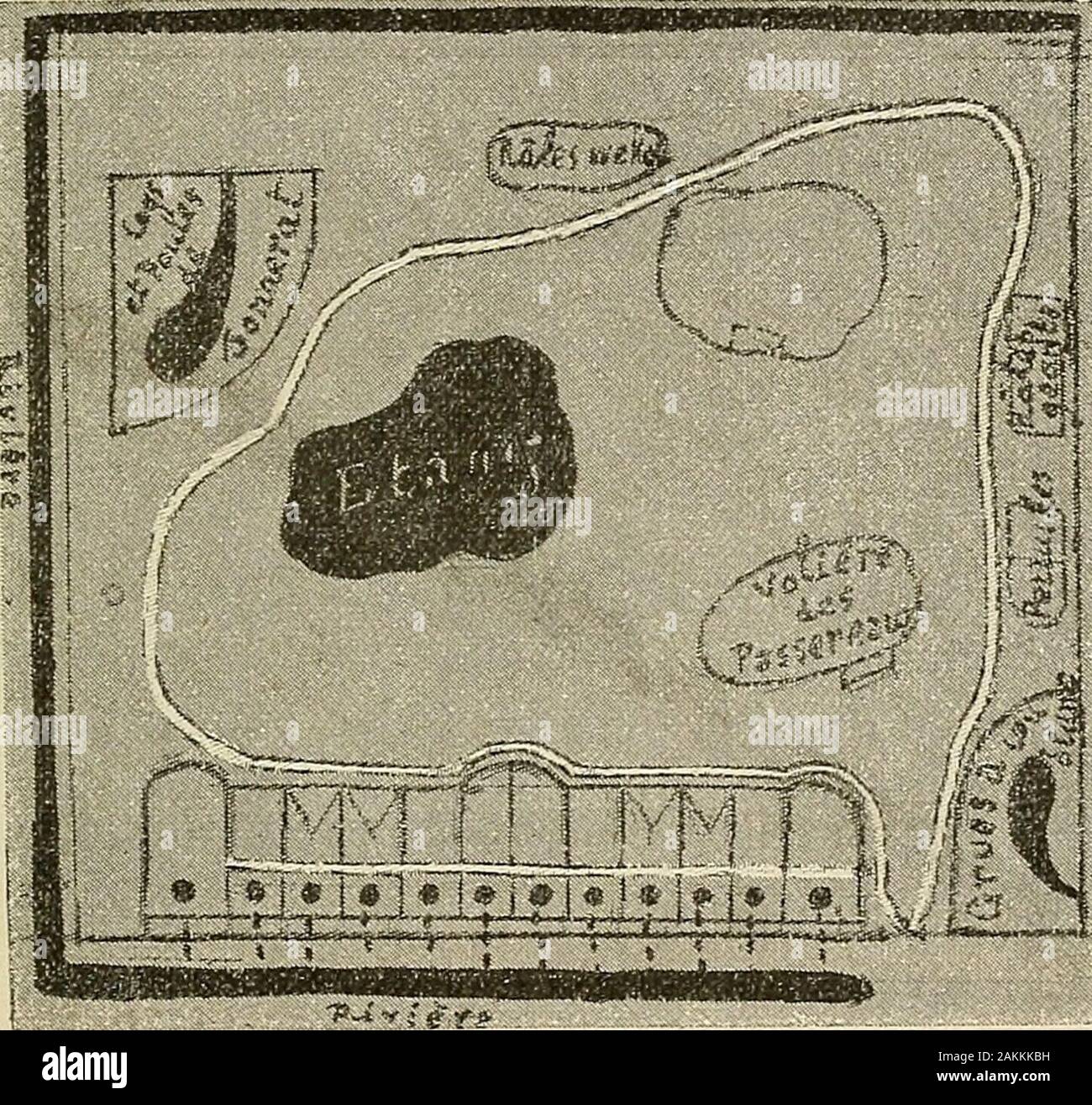 Bulletin de la Société nationale d'acclimatation de France . c un fossé rempli deau qui, à son tour, com-munique avec leau de lextérieur du grand parc. A mesure donc que leau de lextérieur monte ou descend, leniveau change dans les petits étangs et se trouve automatique-ment renouvelée. Quatre des douze parquets sont couverts degrillage et forment des volières spacieuses. En outre des douze parquets déjà décrits, il y a encore uncoin du jardin entièrement couvert de grillages. Cette volièresert dhabitaiion aux Coqs et Poules de Sonnerat et a servi LES ELEVAGES DU PARC DE GOOILUST 3 pendant sei Stock Photohttps://www.alamy.com/image-license-details/?v=1https://www.alamy.com/bulletin-de-la-socit-nationale-dacclimatation-de-france-c-un-foss-rempli-deau-qui-son-tour-com-munique-avec-leau-de-lextrieur-du-grand-parc-a-mesure-donc-que-leau-de-lextrieur-monte-ou-descend-leniveau-change-dans-les-petits-tangs-et-se-trouve-automatique-ment-renouvele-quatre-des-douze-parquets-sont-couverts-degrillage-et-forment-des-volires-spacieuses-en-outre-des-douze-parquets-dj-dcrits-il-y-a-encore-uncoin-du-jardin-entirement-couvert-de-grillages-cette-voliresert-dhabitaiion-aux-coqs-et-poules-de-sonnerat-et-a-servi-les-elevages-du-parc-de-gooilust-3-pendant-sei-image339107765.html
Bulletin de la Société nationale d'acclimatation de France . c un fossé rempli deau qui, à son tour, com-munique avec leau de lextérieur du grand parc. A mesure donc que leau de lextérieur monte ou descend, leniveau change dans les petits étangs et se trouve automatique-ment renouvelée. Quatre des douze parquets sont couverts degrillage et forment des volières spacieuses. En outre des douze parquets déjà décrits, il y a encore uncoin du jardin entièrement couvert de grillages. Cette volièresert dhabitaiion aux Coqs et Poules de Sonnerat et a servi LES ELEVAGES DU PARC DE GOOILUST 3 pendant sei Stock Photohttps://www.alamy.com/image-license-details/?v=1https://www.alamy.com/bulletin-de-la-socit-nationale-dacclimatation-de-france-c-un-foss-rempli-deau-qui-son-tour-com-munique-avec-leau-de-lextrieur-du-grand-parc-a-mesure-donc-que-leau-de-lextrieur-monte-ou-descend-leniveau-change-dans-les-petits-tangs-et-se-trouve-automatique-ment-renouvele-quatre-des-douze-parquets-sont-couverts-degrillage-et-forment-des-volires-spacieuses-en-outre-des-douze-parquets-dj-dcrits-il-y-a-encore-uncoin-du-jardin-entirement-couvert-de-grillages-cette-voliresert-dhabitaiion-aux-coqs-et-poules-de-sonnerat-et-a-servi-les-elevages-du-parc-de-gooilust-3-pendant-sei-image339107765.htmlRM2AKKKBH–Bulletin de la Société nationale d'acclimatation de France . c un fossé rempli deau qui, à son tour, com-munique avec leau de lextérieur du grand parc. A mesure donc que leau de lextérieur monte ou descend, leniveau change dans les petits étangs et se trouve automatique-ment renouvelée. Quatre des douze parquets sont couverts degrillage et forment des volières spacieuses. En outre des douze parquets déjà décrits, il y a encore uncoin du jardin entièrement couvert de grillages. Cette volièresert dhabitaiion aux Coqs et Poules de Sonnerat et a servi LES ELEVAGES DU PARC DE GOOILUST 3 pendant sei
 Litchi Sonnerat Stock Photohttps://www.alamy.com/image-license-details/?v=1https://www.alamy.com/stock-photo-litchi-sonnerat-132500696.html
Litchi Sonnerat Stock Photohttps://www.alamy.com/image-license-details/?v=1https://www.alamy.com/stock-photo-litchi-sonnerat-132500696.htmlRMHKFWYM–Litchi Sonnerat
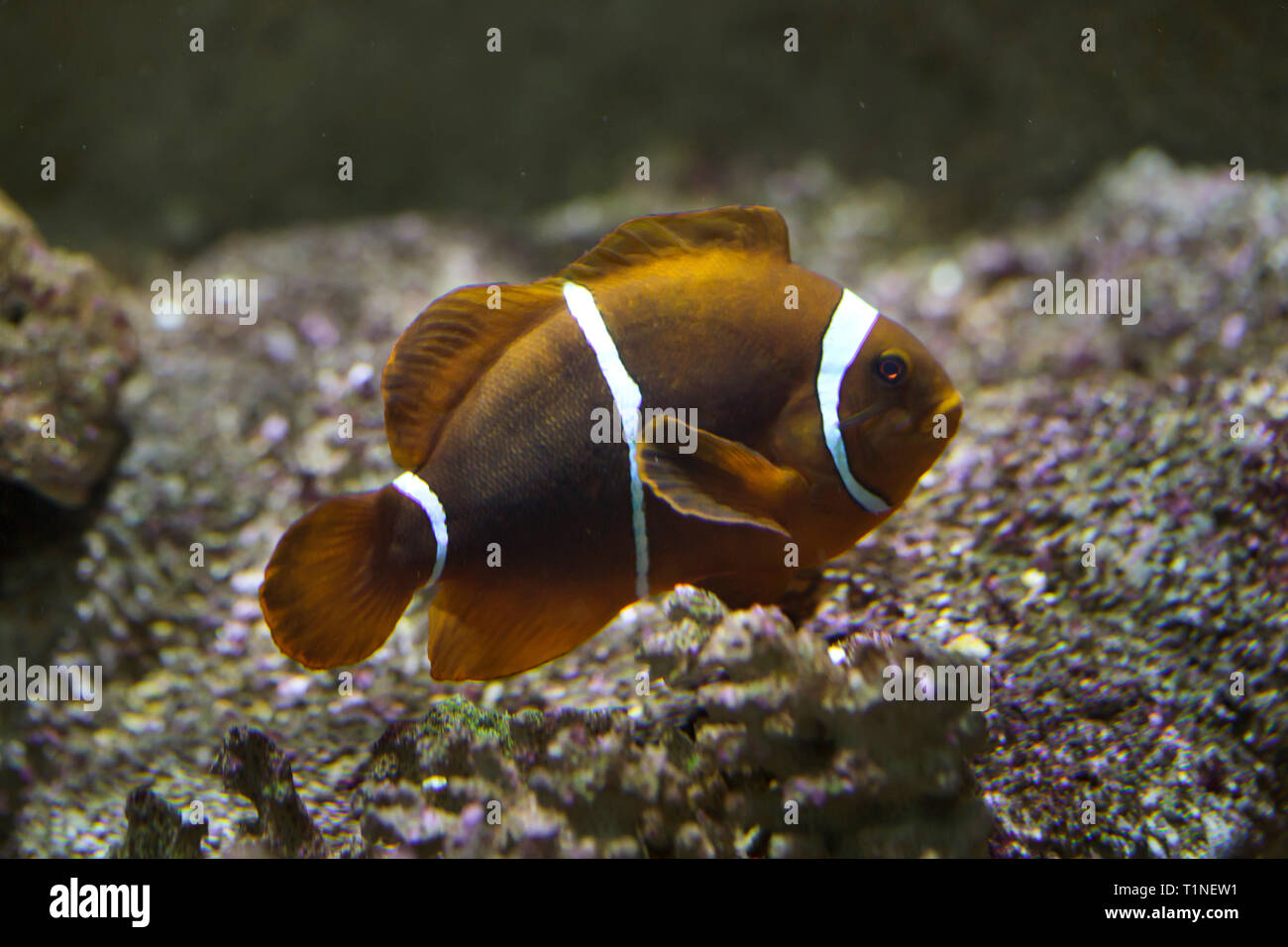 Spine-cheeked anemonefish (Premnas biaculeatus), also known as the maroon clownfish. Stock Photohttps://www.alamy.com/image-license-details/?v=1https://www.alamy.com/spine-cheeked-anemonefish-premnas-biaculeatus-also-known-as-the-maroon-clownfish-image242032477.html
Spine-cheeked anemonefish (Premnas biaculeatus), also known as the maroon clownfish. Stock Photohttps://www.alamy.com/image-license-details/?v=1https://www.alamy.com/spine-cheeked-anemonefish-premnas-biaculeatus-also-known-as-the-maroon-clownfish-image242032477.htmlRMT1NEW1–Spine-cheeked anemonefish (Premnas biaculeatus), also known as the maroon clownfish.
 Weaver of cloth,1782. Creator: Pierre Sonnerat (after) (1745-1814). Stock Photohttps://www.alamy.com/image-license-details/?v=1https://www.alamy.com/weaver-of-cloth1782-creator-pierre-sonnerat-after-1745-1814-image228930981.html
Weaver of cloth,1782. Creator: Pierre Sonnerat (after) (1745-1814). Stock Photohttps://www.alamy.com/image-license-details/?v=1https://www.alamy.com/weaver-of-cloth1782-creator-pierre-sonnerat-after-1745-1814-image228930981.htmlRMR8CKPD–Weaver of cloth,1782. Creator: Pierre Sonnerat (after) (1745-1814).
 Lychees, fruit food still-life photograph Stock Photohttps://www.alamy.com/image-license-details/?v=1https://www.alamy.com/lychees-fruit-food-still-life-photograph-image233815359.html
Lychees, fruit food still-life photograph Stock Photohttps://www.alamy.com/image-license-details/?v=1https://www.alamy.com/lychees-fruit-food-still-life-photograph-image233815359.htmlRMRGB5TF–Lychees, fruit food still-life photograph
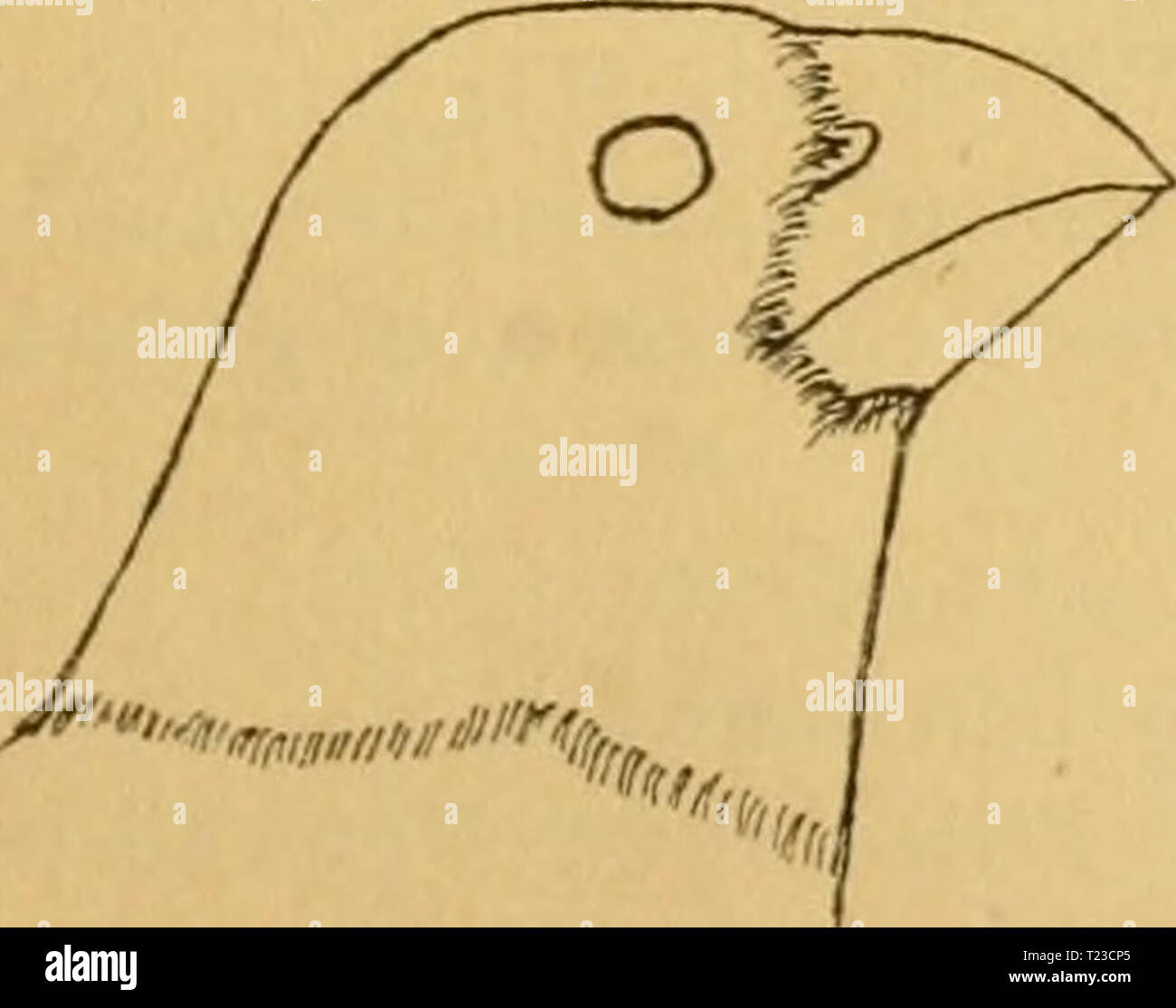 Archive image from page 120 of Die Vögel der paläarktischen Fauna Die Vögel der paläarktischen Fauna systematische Übersicht der in Europa, Nord-Asien und der Mittelmeerregion vorkommenden Vögel dievgelderpal01hart Year: 1910 95. Eophona melanura melanura (Gm.). (Fig. 16.) l.oxia melanura Griuelin, Syst. Nat. I, p.853 (1788— Ex Sonnerat & Latliam — „Habitat in Sina'). dad. Kopf, Kopfseiten und ganze Kehle schwarz mit stahlblauem Schimmer. Oberseite graubraun, Hinterhals und Bürzel bräunlichgrau, nach dem Schwänze zu fast weißlich. Schwingen schwarz, Handschwingen mit etwa 2 cm langen weißen Stock Photohttps://www.alamy.com/image-license-details/?v=1https://www.alamy.com/archive-image-from-page-120-of-die-vgel-der-palarktischen-fauna-die-vgel-der-palarktischen-fauna-systematische-bersicht-der-in-europa-nord-asien-und-der-mittelmeerregion-vorkommenden-vgel-dievgelderpal01hart-year-1910-95-eophona-melanura-melanura-gm-fig-16-loxia-melanura-griuelin-syst-nat-i-p853-1788-ex-sonnerat-latliam-habitat-in-sina-dad-kopf-kopfseiten-und-ganze-kehle-schwarz-mit-stahlblauem-schimmer-oberseite-graubraun-hinterhals-und-brzel-brunlichgrau-nach-dem-schwnze-zu-fast-weilich-schwingen-schwarz-handschwingen-mit-etwa-2-cm-langen-weien-image242250349.html
Archive image from page 120 of Die Vögel der paläarktischen Fauna Die Vögel der paläarktischen Fauna systematische Übersicht der in Europa, Nord-Asien und der Mittelmeerregion vorkommenden Vögel dievgelderpal01hart Year: 1910 95. Eophona melanura melanura (Gm.). (Fig. 16.) l.oxia melanura Griuelin, Syst. Nat. I, p.853 (1788— Ex Sonnerat & Latliam — „Habitat in Sina'). dad. Kopf, Kopfseiten und ganze Kehle schwarz mit stahlblauem Schimmer. Oberseite graubraun, Hinterhals und Bürzel bräunlichgrau, nach dem Schwänze zu fast weißlich. Schwingen schwarz, Handschwingen mit etwa 2 cm langen weißen Stock Photohttps://www.alamy.com/image-license-details/?v=1https://www.alamy.com/archive-image-from-page-120-of-die-vgel-der-palarktischen-fauna-die-vgel-der-palarktischen-fauna-systematische-bersicht-der-in-europa-nord-asien-und-der-mittelmeerregion-vorkommenden-vgel-dievgelderpal01hart-year-1910-95-eophona-melanura-melanura-gm-fig-16-loxia-melanura-griuelin-syst-nat-i-p853-1788-ex-sonnerat-latliam-habitat-in-sina-dad-kopf-kopfseiten-und-ganze-kehle-schwarz-mit-stahlblauem-schimmer-oberseite-graubraun-hinterhals-und-brzel-brunlichgrau-nach-dem-schwnze-zu-fast-weilich-schwingen-schwarz-handschwingen-mit-etwa-2-cm-langen-weien-image242250349.htmlRMT23CP5–Archive image from page 120 of Die Vögel der paläarktischen Fauna Die Vögel der paläarktischen Fauna systematische Übersicht der in Europa, Nord-Asien und der Mittelmeerregion vorkommenden Vögel dievgelderpal01hart Year: 1910 95. Eophona melanura melanura (Gm.). (Fig. 16.) l.oxia melanura Griuelin, Syst. Nat. I, p.853 (1788— Ex Sonnerat & Latliam — „Habitat in Sina'). dad. Kopf, Kopfseiten und ganze Kehle schwarz mit stahlblauem Schimmer. Oberseite graubraun, Hinterhals und Bürzel bräunlichgrau, nach dem Schwänze zu fast weißlich. Schwingen schwarz, Handschwingen mit etwa 2 cm langen weißen
 Lowland streaked tenrec, Hemicentetes semispinosus. Petit tandrek de Madagascar, Erinaceus setosus. Copperplate engraving by Desmoulins after an illustration by Pierre Sonnerat from his Voyage aux Indes Orientales et à la Chine (Voyage to the East Indies and China, Dentu, Paris, 1806. Stock Photohttps://www.alamy.com/image-license-details/?v=1https://www.alamy.com/lowland-streaked-tenrec-hemicentetes-semispinosus-petit-tandrek-de-madagascar-erinaceus-setosus-copperplate-engraving-by-desmoulins-after-an-illustration-by-pierre-sonnerat-from-his-voyage-aux-indes-orientales-et-la-chine-voyage-to-the-east-indies-and-china-dentu-paris-1806-image618518713.html
Lowland streaked tenrec, Hemicentetes semispinosus. Petit tandrek de Madagascar, Erinaceus setosus. Copperplate engraving by Desmoulins after an illustration by Pierre Sonnerat from his Voyage aux Indes Orientales et à la Chine (Voyage to the East Indies and China, Dentu, Paris, 1806. Stock Photohttps://www.alamy.com/image-license-details/?v=1https://www.alamy.com/lowland-streaked-tenrec-hemicentetes-semispinosus-petit-tandrek-de-madagascar-erinaceus-setosus-copperplate-engraving-by-desmoulins-after-an-illustration-by-pierre-sonnerat-from-his-voyage-aux-indes-orientales-et-la-chine-voyage-to-the-east-indies-and-china-dentu-paris-1806-image618518713.htmlRM2XX7XX1–Lowland streaked tenrec, Hemicentetes semispinosus. Petit tandrek de Madagascar, Erinaceus setosus. Copperplate engraving by Desmoulins after an illustration by Pierre Sonnerat from his Voyage aux Indes Orientales et à la Chine (Voyage to the East Indies and China, Dentu, Paris, 1806.
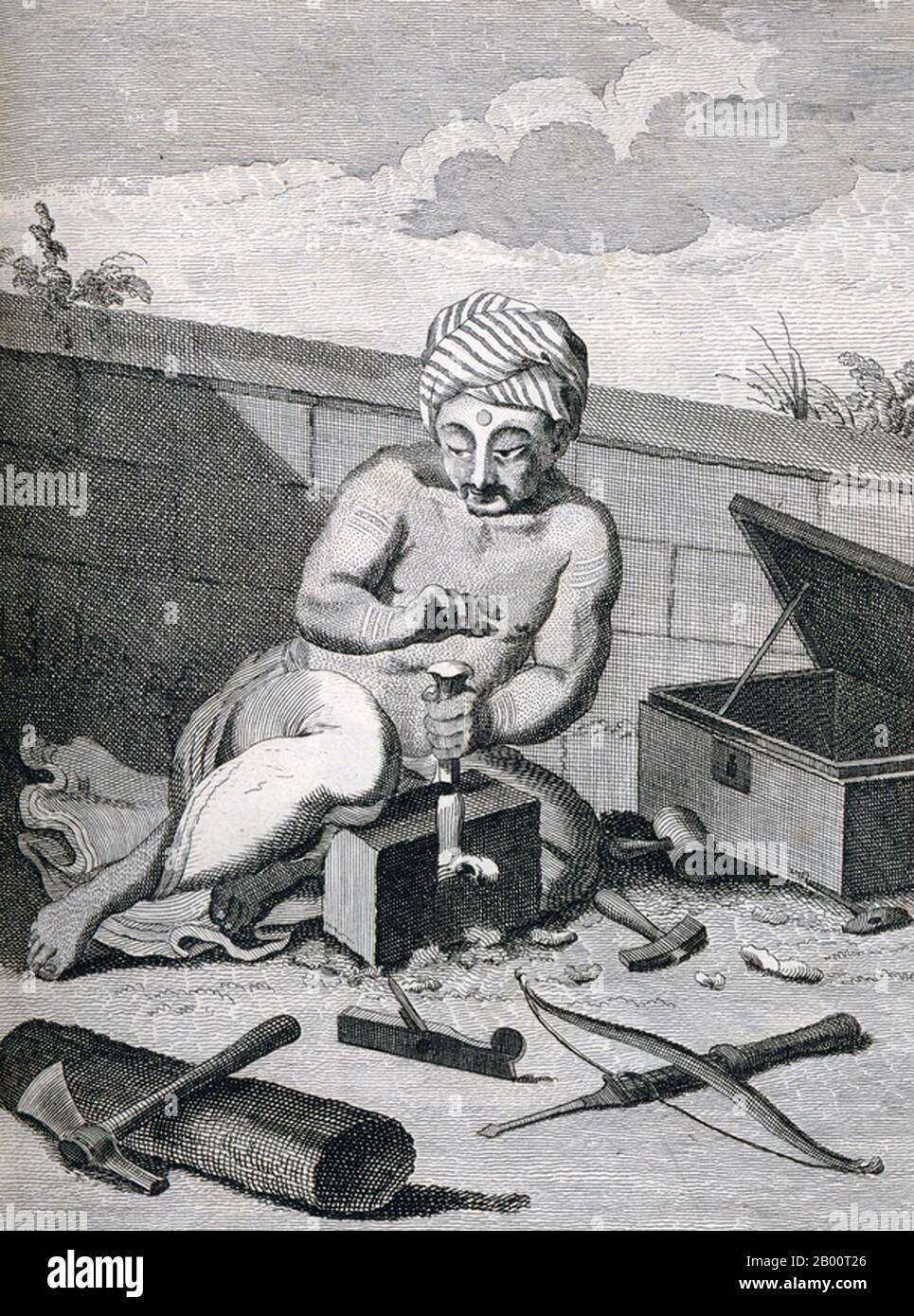 India/France: 'A Carpenter'. Engraving by Pierre Sonnerat (1748-1814), 1782. Pierre Sonnerat (1748-1814) was a French naturalist and explorer who made several voyages to Southeast Asia between 1769 and 1781. He published this two-volume account of his voyage in 1782. Volume 1 deals exclusively with India, whose culture Sonnerat very much admired, and is especially noteworthy for its extended discussion of religion in India, Hinduism in particular. Volume 2 covers Sonnerat’s travels to China, Burma, Madagascar, the Maldives, Mauritius, Ceylon, Indonesia and the Philippines. Stock Photohttps://www.alamy.com/image-license-details/?v=1https://www.alamy.com/indiafrance-a-carpenter-engraving-by-pierre-sonnerat-1748-1814-1782-pierre-sonnerat-1748-1814-was-a-french-naturalist-and-explorer-who-made-several-voyages-to-southeast-asia-between-1769-and-1781-he-published-this-two-volume-account-of-his-voyage-in-1782-volume-1-deals-exclusively-with-india-whose-culture-sonnerat-very-much-admired-and-is-especially-noteworthy-for-its-extended-discussion-of-religion-in-india-hinduism-in-particular-volume-2-covers-sonnerats-travels-to-china-burma-madagascar-the-maldives-mauritius-ceylon-indonesia-and-the-philippines-image344226238.html
India/France: 'A Carpenter'. Engraving by Pierre Sonnerat (1748-1814), 1782. Pierre Sonnerat (1748-1814) was a French naturalist and explorer who made several voyages to Southeast Asia between 1769 and 1781. He published this two-volume account of his voyage in 1782. Volume 1 deals exclusively with India, whose culture Sonnerat very much admired, and is especially noteworthy for its extended discussion of religion in India, Hinduism in particular. Volume 2 covers Sonnerat’s travels to China, Burma, Madagascar, the Maldives, Mauritius, Ceylon, Indonesia and the Philippines. Stock Photohttps://www.alamy.com/image-license-details/?v=1https://www.alamy.com/indiafrance-a-carpenter-engraving-by-pierre-sonnerat-1748-1814-1782-pierre-sonnerat-1748-1814-was-a-french-naturalist-and-explorer-who-made-several-voyages-to-southeast-asia-between-1769-and-1781-he-published-this-two-volume-account-of-his-voyage-in-1782-volume-1-deals-exclusively-with-india-whose-culture-sonnerat-very-much-admired-and-is-especially-noteworthy-for-its-extended-discussion-of-religion-in-india-hinduism-in-particular-volume-2-covers-sonnerats-travels-to-china-burma-madagascar-the-maldives-mauritius-ceylon-indonesia-and-the-philippines-image344226238.htmlRM2B00T26–India/France: 'A Carpenter'. Engraving by Pierre Sonnerat (1748-1814), 1782. Pierre Sonnerat (1748-1814) was a French naturalist and explorer who made several voyages to Southeast Asia between 1769 and 1781. He published this two-volume account of his voyage in 1782. Volume 1 deals exclusively with India, whose culture Sonnerat very much admired, and is especially noteworthy for its extended discussion of religion in India, Hinduism in particular. Volume 2 covers Sonnerat’s travels to China, Burma, Madagascar, the Maldives, Mauritius, Ceylon, Indonesia and the Philippines.
 Marse'na, Marshland Marsana (Marsana buxifolia), signed: P. Sonnerat pinx, Milsan sculp, pl. 139, before p. 245 (vol. 2), Sonnerat, Pierre M. (pinx.); Milsan (sculp.), 1782, Sonnerat, Pierre Stock Photohttps://www.alamy.com/image-license-details/?v=1https://www.alamy.com/marsena-marshland-marsana-marsana-buxifolia-signed-p-sonnerat-pinx-milsan-sculp-pl-139-before-p-245-vol-2-sonnerat-pierre-m-pinx-milsan-sculp-1782-sonnerat-pierre-image328757149.html
Marse'na, Marshland Marsana (Marsana buxifolia), signed: P. Sonnerat pinx, Milsan sculp, pl. 139, before p. 245 (vol. 2), Sonnerat, Pierre M. (pinx.); Milsan (sculp.), 1782, Sonnerat, Pierre Stock Photohttps://www.alamy.com/image-license-details/?v=1https://www.alamy.com/marsena-marshland-marsana-marsana-buxifolia-signed-p-sonnerat-pinx-milsan-sculp-pl-139-before-p-245-vol-2-sonnerat-pierre-m-pinx-milsan-sculp-1782-sonnerat-pierre-image328757149.htmlRM2A2T52N–Marse'na, Marshland Marsana (Marsana buxifolia), signed: P. Sonnerat pinx, Milsan sculp, pl. 139, before p. 245 (vol. 2), Sonnerat, Pierre M. (pinx.); Milsan (sculp.), 1782, Sonnerat, Pierre
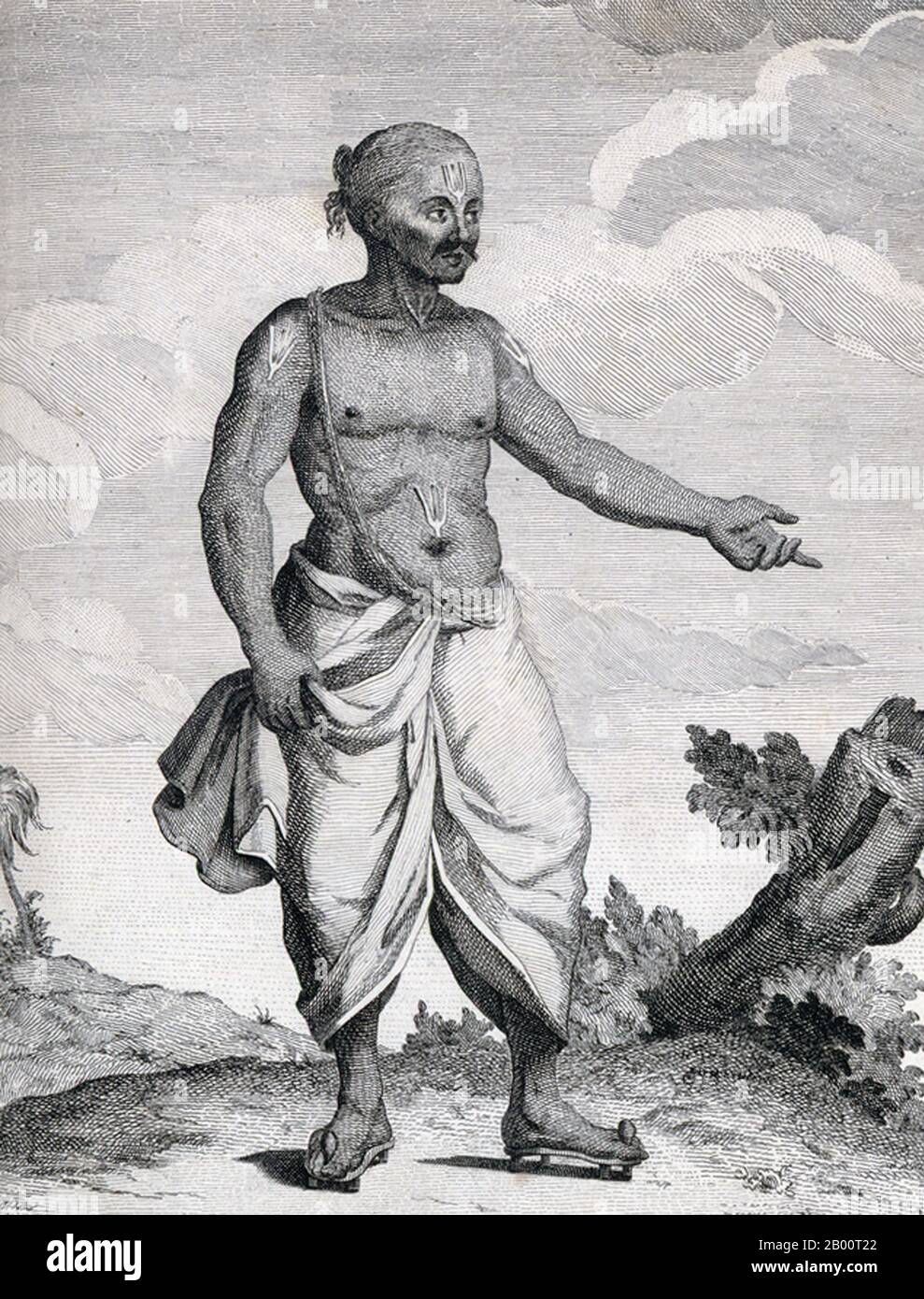 India/France: 'An Brahmin follower of Vishnu'. Engraving by Pierre Sonnerat (1748-1814), 1782. Pierre Sonnerat (1748-1814) was a French naturalist and explorer who made several voyages to Southeast Asia between 1769 and 1781. He published this two-volume account of his voyage in 1782. Volume 1 deals exclusively with India, whose culture Sonnerat very much admired, and is especially noteworthy for its extended discussion of religion in India, Hinduism in particular. Volume 2 covers Sonnerat’s travels to China, Burma, Madagascar, the Maldives, Mauritius, Ceylon, Indonesia and the Philippines. Stock Photohttps://www.alamy.com/image-license-details/?v=1https://www.alamy.com/indiafrance-an-brahmin-follower-of-vishnu-engraving-by-pierre-sonnerat-1748-1814-1782-pierre-sonnerat-1748-1814-was-a-french-naturalist-and-explorer-who-made-several-voyages-to-southeast-asia-between-1769-and-1781-he-published-this-two-volume-account-of-his-voyage-in-1782-volume-1-deals-exclusively-with-india-whose-culture-sonnerat-very-much-admired-and-is-especially-noteworthy-for-its-extended-discussion-of-religion-in-india-hinduism-in-particular-volume-2-covers-sonnerats-travels-to-china-burma-madagascar-the-maldives-mauritius-ceylon-indonesia-and-the-philippines-image344226234.html
India/France: 'An Brahmin follower of Vishnu'. Engraving by Pierre Sonnerat (1748-1814), 1782. Pierre Sonnerat (1748-1814) was a French naturalist and explorer who made several voyages to Southeast Asia between 1769 and 1781. He published this two-volume account of his voyage in 1782. Volume 1 deals exclusively with India, whose culture Sonnerat very much admired, and is especially noteworthy for its extended discussion of religion in India, Hinduism in particular. Volume 2 covers Sonnerat’s travels to China, Burma, Madagascar, the Maldives, Mauritius, Ceylon, Indonesia and the Philippines. Stock Photohttps://www.alamy.com/image-license-details/?v=1https://www.alamy.com/indiafrance-an-brahmin-follower-of-vishnu-engraving-by-pierre-sonnerat-1748-1814-1782-pierre-sonnerat-1748-1814-was-a-french-naturalist-and-explorer-who-made-several-voyages-to-southeast-asia-between-1769-and-1781-he-published-this-two-volume-account-of-his-voyage-in-1782-volume-1-deals-exclusively-with-india-whose-culture-sonnerat-very-much-admired-and-is-especially-noteworthy-for-its-extended-discussion-of-religion-in-india-hinduism-in-particular-volume-2-covers-sonnerats-travels-to-china-burma-madagascar-the-maldives-mauritius-ceylon-indonesia-and-the-philippines-image344226234.htmlRM2B00T22–India/France: 'An Brahmin follower of Vishnu'. Engraving by Pierre Sonnerat (1748-1814), 1782. Pierre Sonnerat (1748-1814) was a French naturalist and explorer who made several voyages to Southeast Asia between 1769 and 1781. He published this two-volume account of his voyage in 1782. Volume 1 deals exclusively with India, whose culture Sonnerat very much admired, and is especially noteworthy for its extended discussion of religion in India, Hinduism in particular. Volume 2 covers Sonnerat’s travels to China, Burma, Madagascar, the Maldives, Mauritius, Ceylon, Indonesia and the Philippines.
 Indri or babaktoto, Indri indri, critically endangered. Indri, Lemur indri. After an illustration by Pierre Sonnerat. Copperplate engraving by James Heath from George Shaws General Zoology: Mammalia, G. Kearsley, Fleet Street, London, 1800. Stock Photohttps://www.alamy.com/image-license-details/?v=1https://www.alamy.com/indri-or-babaktoto-indri-indri-critically-endangered-indri-lemur-indri-after-an-illustration-by-pierre-sonnerat-copperplate-engraving-by-james-heath-from-george-shaws-general-zoology-mammalia-g-kearsley-fleet-street-london-1800-image571821993.html
Indri or babaktoto, Indri indri, critically endangered. Indri, Lemur indri. After an illustration by Pierre Sonnerat. Copperplate engraving by James Heath from George Shaws General Zoology: Mammalia, G. Kearsley, Fleet Street, London, 1800. Stock Photohttps://www.alamy.com/image-license-details/?v=1https://www.alamy.com/indri-or-babaktoto-indri-indri-critically-endangered-indri-lemur-indri-after-an-illustration-by-pierre-sonnerat-copperplate-engraving-by-james-heath-from-george-shaws-general-zoology-mammalia-g-kearsley-fleet-street-london-1800-image571821993.htmlRM2T68MP1–Indri or babaktoto, Indri indri, critically endangered. Indri, Lemur indri. After an illustration by Pierre Sonnerat. Copperplate engraving by James Heath from George Shaws General Zoology: Mammalia, G. Kearsley, Fleet Street, London, 1800.
 567 Sonnerat Stock Photohttps://www.alamy.com/image-license-details/?v=1https://www.alamy.com/567-sonnerat-image213991126.html
567 Sonnerat Stock Photohttps://www.alamy.com/image-license-details/?v=1https://www.alamy.com/567-sonnerat-image213991126.htmlRMPC43T6–567 Sonnerat
 . Natural history of birds : their architecture habits and faculties . enderthe entrance into the nest easy, the little cell is notfound; and, besides, I found several of these nestswith two or three perches, and others in which theperch had little of the form of a small nest. In general, these perch-cells are so narrow thatthe bird, small as it is, could not well rest uponthem; and it would be much more difficult for thebird to which Sonnerat attributes this nest. Besides,as I have already stated, I examined the proceedingsof these birds whenever an opportunity occurred,and never once observe Stock Photohttps://www.alamy.com/image-license-details/?v=1https://www.alamy.com/natural-history-of-birds-their-architecture-habits-and-faculties-enderthe-entrance-into-the-nest-easy-the-little-cell-is-notfound-and-besides-i-found-several-of-these-nestswith-two-or-three-perches-and-others-in-which-theperch-had-little-of-the-form-of-a-small-nest-in-general-these-perch-cells-are-so-narrow-thatthe-bird-small-as-it-is-could-not-well-rest-uponthem-and-it-would-be-much-more-difficult-for-thebird-to-which-sonnerat-attributes-this-nest-besidesas-i-have-already-stated-i-examined-the-proceedingsof-these-birds-whenever-an-opportunity-occurredand-never-once-observe-image375337265.html
. Natural history of birds : their architecture habits and faculties . enderthe entrance into the nest easy, the little cell is notfound; and, besides, I found several of these nestswith two or three perches, and others in which theperch had little of the form of a small nest. In general, these perch-cells are so narrow thatthe bird, small as it is, could not well rest uponthem; and it would be much more difficult for thebird to which Sonnerat attributes this nest. Besides,as I have already stated, I examined the proceedingsof these birds whenever an opportunity occurred,and never once observe Stock Photohttps://www.alamy.com/image-license-details/?v=1https://www.alamy.com/natural-history-of-birds-their-architecture-habits-and-faculties-enderthe-entrance-into-the-nest-easy-the-little-cell-is-notfound-and-besides-i-found-several-of-these-nestswith-two-or-three-perches-and-others-in-which-theperch-had-little-of-the-form-of-a-small-nest-in-general-these-perch-cells-are-so-narrow-thatthe-bird-small-as-it-is-could-not-well-rest-uponthem-and-it-would-be-much-more-difficult-for-thebird-to-which-sonnerat-attributes-this-nest-besidesas-i-have-already-stated-i-examined-the-proceedingsof-these-birds-whenever-an-opportunity-occurredand-never-once-observe-image375337265.htmlRM2CPJ2E9–. Natural history of birds : their architecture habits and faculties . enderthe entrance into the nest easy, the little cell is notfound; and, besides, I found several of these nestswith two or three perches, and others in which theperch had little of the form of a small nest. In general, these perch-cells are so narrow thatthe bird, small as it is, could not well rest uponthem; and it would be much more difficult for thebird to which Sonnerat attributes this nest. Besides,as I have already stated, I examined the proceedingsof these birds whenever an opportunity occurred,and never once observe
 Pagapate Sonnerat Stock Photohttps://www.alamy.com/image-license-details/?v=1https://www.alamy.com/stock-photo-pagapate-sonnerat-132500684.html
Pagapate Sonnerat Stock Photohttps://www.alamy.com/image-license-details/?v=1https://www.alamy.com/stock-photo-pagapate-sonnerat-132500684.htmlRMHKFWY8–Pagapate Sonnerat
 Lychees, fruit food still-life photograph Stock Photohttps://www.alamy.com/image-license-details/?v=1https://www.alamy.com/lychees-fruit-food-still-life-photograph-image233815439.html
Lychees, fruit food still-life photograph Stock Photohttps://www.alamy.com/image-license-details/?v=1https://www.alamy.com/lychees-fruit-food-still-life-photograph-image233815439.htmlRMRGB5YB–Lychees, fruit food still-life photograph
![Encyclopédie d'histoire naturelle; ou, Traité Encyclopédie d'histoire naturelle; ou, Traité complet de cette science d'après les travaux des naturalistes les plus éminents de tous les pays et de toutes les époques: Buffon, Daubenton, Lacépède, G. Cuvier, F. Cuvier, Geoffroy Saint-Hilaire, Latreille, De Jussieu, Brongniart, etc. etc encyclopdiedhi01chen Year: [1850?-1861?] niSKAUX. S9 Deux espèces : l'une de Madagascar, et dont on ne possède encore qu'un seul individu rapporté par Sonnerat, et déposé au Muséum d'histoire naturelle de Paris; l'autre espèce du cap de Bonne- Espéra Stock Photo Encyclopédie d'histoire naturelle; ou, Traité Encyclopédie d'histoire naturelle; ou, Traité complet de cette science d'après les travaux des naturalistes les plus éminents de tous les pays et de toutes les époques: Buffon, Daubenton, Lacépède, G. Cuvier, F. Cuvier, Geoffroy Saint-Hilaire, Latreille, De Jussieu, Brongniart, etc. etc encyclopdiedhi01chen Year: [1850?-1861?] niSKAUX. S9 Deux espèces : l'une de Madagascar, et dont on ne possède encore qu'un seul individu rapporté par Sonnerat, et déposé au Muséum d'histoire naturelle de Paris; l'autre espèce du cap de Bonne- Espéra Stock Photo](https://c8.alamy.com/comp/RWNKJW/encyclopdie-dhistoire-naturelle-ou-trait-encyclopdie-dhistoire-naturelle-ou-trait-complet-de-cette-science-daprs-les-travaux-des-naturalistes-les-plus-minents-de-tous-les-pays-et-de-toutes-les-poques-buffon-daubenton-lacpde-g-cuvier-f-cuvier-geoffroy-saint-hilaire-latreille-de-jussieu-brongniart-etc-etc-encyclopdiedhi01chen-year-1850-1861-niskaux-s9-deux-espces-lune-de-madagascar-et-dont-on-ne-possde-encore-quun-seul-individu-rapport-par-sonnerat-et-dpos-au-musum-dhistoire-naturelle-de-paris-lautre-espce-du-cap-de-bonne-espra-RWNKJW.jpg) Encyclopédie d'histoire naturelle; ou, Traité Encyclopédie d'histoire naturelle; ou, Traité complet de cette science d'après les travaux des naturalistes les plus éminents de tous les pays et de toutes les époques: Buffon, Daubenton, Lacépède, G. Cuvier, F. Cuvier, Geoffroy Saint-Hilaire, Latreille, De Jussieu, Brongniart, etc. etc encyclopdiedhi01chen Year: [1850?-1861?] niSKAUX. S9 Deux espèces : l'une de Madagascar, et dont on ne possède encore qu'un seul individu rapporté par Sonnerat, et déposé au Muséum d'histoire naturelle de Paris; l'autre espèce du cap de Bonne- Espéra Stock Photohttps://www.alamy.com/image-license-details/?v=1https://www.alamy.com/encyclopdie-dhistoire-naturelle-ou-trait-encyclopdie-dhistoire-naturelle-ou-trait-complet-de-cette-science-daprs-les-travaux-des-naturalistes-les-plus-minents-de-tous-les-pays-et-de-toutes-les-poques-buffon-daubenton-lacpde-g-cuvier-f-cuvier-geoffroy-saint-hilaire-latreille-de-jussieu-brongniart-etc-etc-encyclopdiedhi01chen-year-1850-1861-niskaux-s9-deux-espces-lune-de-madagascar-et-dont-on-ne-possde-encore-quun-seul-individu-rapport-par-sonnerat-et-dpos-au-musum-dhistoire-naturelle-de-paris-lautre-espce-du-cap-de-bonne-espra-image239577601.html
Encyclopédie d'histoire naturelle; ou, Traité Encyclopédie d'histoire naturelle; ou, Traité complet de cette science d'après les travaux des naturalistes les plus éminents de tous les pays et de toutes les époques: Buffon, Daubenton, Lacépède, G. Cuvier, F. Cuvier, Geoffroy Saint-Hilaire, Latreille, De Jussieu, Brongniart, etc. etc encyclopdiedhi01chen Year: [1850?-1861?] niSKAUX. S9 Deux espèces : l'une de Madagascar, et dont on ne possède encore qu'un seul individu rapporté par Sonnerat, et déposé au Muséum d'histoire naturelle de Paris; l'autre espèce du cap de Bonne- Espéra Stock Photohttps://www.alamy.com/image-license-details/?v=1https://www.alamy.com/encyclopdie-dhistoire-naturelle-ou-trait-encyclopdie-dhistoire-naturelle-ou-trait-complet-de-cette-science-daprs-les-travaux-des-naturalistes-les-plus-minents-de-tous-les-pays-et-de-toutes-les-poques-buffon-daubenton-lacpde-g-cuvier-f-cuvier-geoffroy-saint-hilaire-latreille-de-jussieu-brongniart-etc-etc-encyclopdiedhi01chen-year-1850-1861-niskaux-s9-deux-espces-lune-de-madagascar-et-dont-on-ne-possde-encore-quun-seul-individu-rapport-par-sonnerat-et-dpos-au-musum-dhistoire-naturelle-de-paris-lautre-espce-du-cap-de-bonne-espra-image239577601.htmlRMRWNKJW–Encyclopédie d'histoire naturelle; ou, Traité Encyclopédie d'histoire naturelle; ou, Traité complet de cette science d'après les travaux des naturalistes les plus éminents de tous les pays et de toutes les époques: Buffon, Daubenton, Lacépède, G. Cuvier, F. Cuvier, Geoffroy Saint-Hilaire, Latreille, De Jussieu, Brongniart, etc. etc encyclopdiedhi01chen Year: [1850?-1861?] niSKAUX. S9 Deux espèces : l'une de Madagascar, et dont on ne possède encore qu'un seul individu rapporté par Sonnerat, et déposé au Muséum d'histoire naturelle de Paris; l'autre espèce du cap de Bonne- Espéra
 Indri or babakoto, Indri indri. Critically endangered. Species of lemur native to Madagascar. L'Indri. Copperplate engraving by Desmoulins after an illustration by Pierre Sonnerat from his Voyage aux Indes Orientales et à la Chine (Voyage to the East Indies and China, Dentu, Paris, 1806. Stock Photohttps://www.alamy.com/image-license-details/?v=1https://www.alamy.com/indri-or-babakoto-indri-indri-critically-endangered-species-of-lemur-native-to-madagascar-lindri-copperplate-engraving-by-desmoulins-after-an-illustration-by-pierre-sonnerat-from-his-voyage-aux-indes-orientales-et-la-chine-voyage-to-the-east-indies-and-china-dentu-paris-1806-image618518702.html
Indri or babakoto, Indri indri. Critically endangered. Species of lemur native to Madagascar. L'Indri. Copperplate engraving by Desmoulins after an illustration by Pierre Sonnerat from his Voyage aux Indes Orientales et à la Chine (Voyage to the East Indies and China, Dentu, Paris, 1806. Stock Photohttps://www.alamy.com/image-license-details/?v=1https://www.alamy.com/indri-or-babakoto-indri-indri-critically-endangered-species-of-lemur-native-to-madagascar-lindri-copperplate-engraving-by-desmoulins-after-an-illustration-by-pierre-sonnerat-from-his-voyage-aux-indes-orientales-et-la-chine-voyage-to-the-east-indies-and-china-dentu-paris-1806-image618518702.htmlRM2XX7XWJ–Indri or babakoto, Indri indri. Critically endangered. Species of lemur native to Madagascar. L'Indri. Copperplate engraving by Desmoulins after an illustration by Pierre Sonnerat from his Voyage aux Indes Orientales et à la Chine (Voyage to the East Indies and China, Dentu, Paris, 1806.
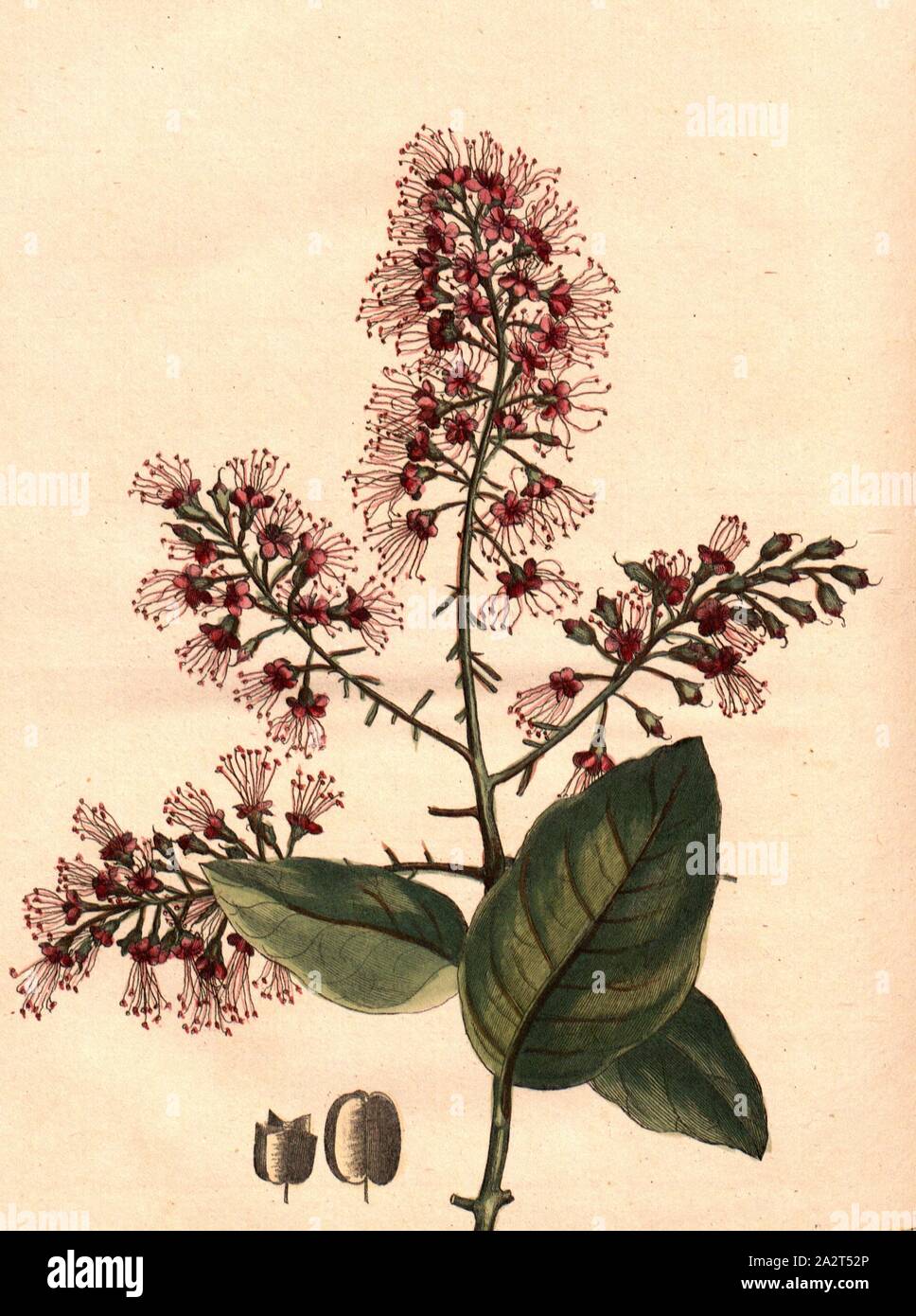 Aigrette, Scarlet-bush (Cristaria coccinea), Signed: P. Sonnerat pinx, Milsan sculp, Pl. 140, before p. 247 (Vol. 2), Sonnerat, Pierre M. (pinx.); Milsan (sculp.), 1782, Sonnerat, Pierre Stock Photohttps://www.alamy.com/image-license-details/?v=1https://www.alamy.com/aigrette-scarlet-bush-cristaria-coccinea-signed-p-sonnerat-pinx-milsan-sculp-pl-140-before-p-247-vol-2-sonnerat-pierre-m-pinx-milsan-sculp-1782-sonnerat-pierre-image328757150.html
Aigrette, Scarlet-bush (Cristaria coccinea), Signed: P. Sonnerat pinx, Milsan sculp, Pl. 140, before p. 247 (Vol. 2), Sonnerat, Pierre M. (pinx.); Milsan (sculp.), 1782, Sonnerat, Pierre Stock Photohttps://www.alamy.com/image-license-details/?v=1https://www.alamy.com/aigrette-scarlet-bush-cristaria-coccinea-signed-p-sonnerat-pinx-milsan-sculp-pl-140-before-p-247-vol-2-sonnerat-pierre-m-pinx-milsan-sculp-1782-sonnerat-pierre-image328757150.htmlRM2A2T52P–Aigrette, Scarlet-bush (Cristaria coccinea), Signed: P. Sonnerat pinx, Milsan sculp, Pl. 140, before p. 247 (Vol. 2), Sonnerat, Pierre M. (pinx.); Milsan (sculp.), 1782, Sonnerat, Pierre
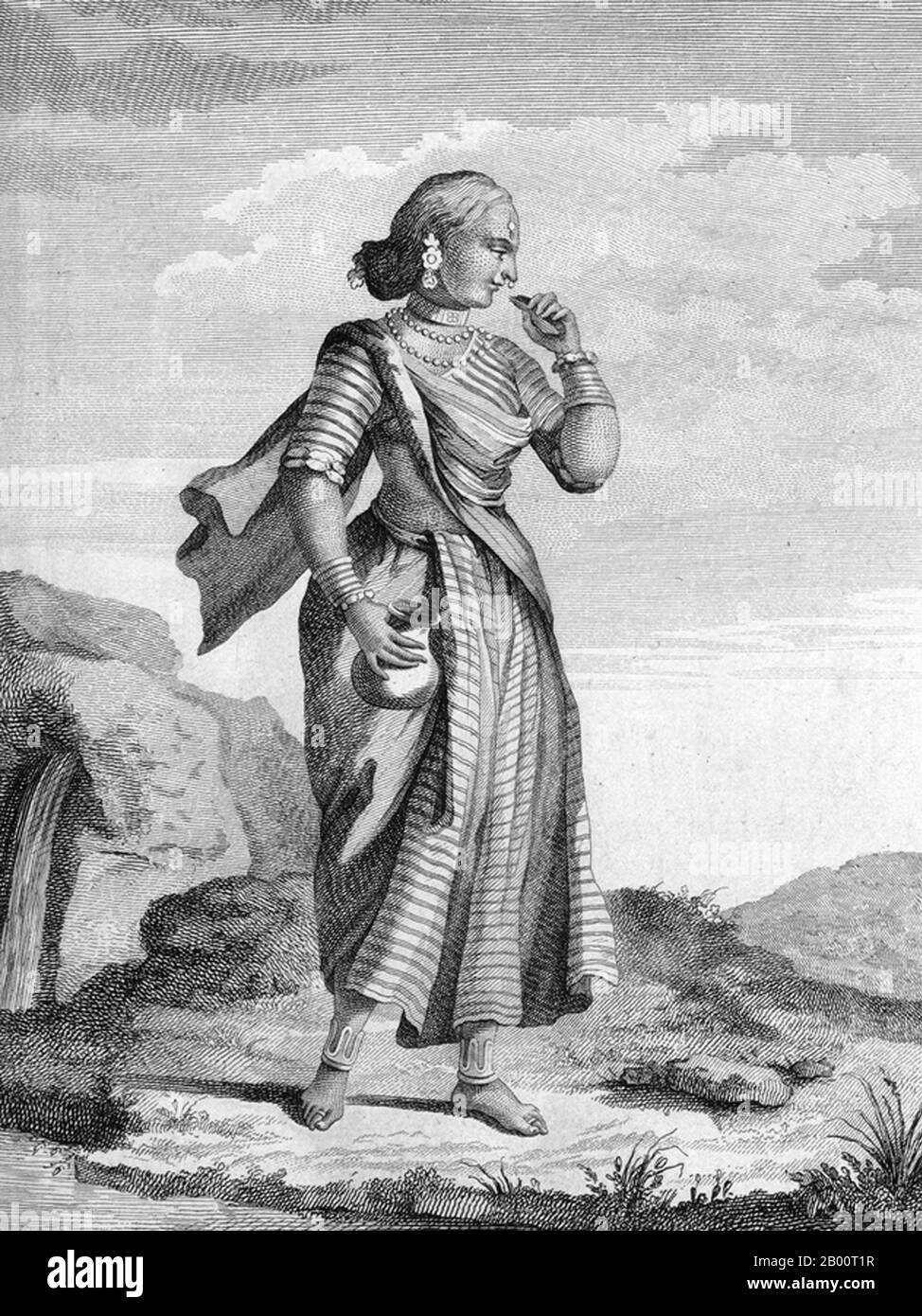 India/France: 'An Indian Woman'. Engraving by Pierre Sonnerat (1748-1814), 1782. Pierre Sonnerat (1748-1814) was a French naturalist and explorer who made several voyages to Southeast Asia between 1769 and 1781. He published this two-volume account of his voyage in 1782. Volume 1 deals exclusively with India, whose culture Sonnerat very much admired, and is especially noteworthy for its extended discussion of religion in India, Hinduism in particular. Volume 2 covers Sonnerat’s travels to China, Burma, Madagascar, the Maldives, Mauritius, Ceylon, Indonesia and the Philippines. Stock Photohttps://www.alamy.com/image-license-details/?v=1https://www.alamy.com/indiafrance-an-indian-woman-engraving-by-pierre-sonnerat-1748-1814-1782-pierre-sonnerat-1748-1814-was-a-french-naturalist-and-explorer-who-made-several-voyages-to-southeast-asia-between-1769-and-1781-he-published-this-two-volume-account-of-his-voyage-in-1782-volume-1-deals-exclusively-with-india-whose-culture-sonnerat-very-much-admired-and-is-especially-noteworthy-for-its-extended-discussion-of-religion-in-india-hinduism-in-particular-volume-2-covers-sonnerats-travels-to-china-burma-madagascar-the-maldives-mauritius-ceylon-indonesia-and-the-philippines-image344226227.html
India/France: 'An Indian Woman'. Engraving by Pierre Sonnerat (1748-1814), 1782. Pierre Sonnerat (1748-1814) was a French naturalist and explorer who made several voyages to Southeast Asia between 1769 and 1781. He published this two-volume account of his voyage in 1782. Volume 1 deals exclusively with India, whose culture Sonnerat very much admired, and is especially noteworthy for its extended discussion of religion in India, Hinduism in particular. Volume 2 covers Sonnerat’s travels to China, Burma, Madagascar, the Maldives, Mauritius, Ceylon, Indonesia and the Philippines. Stock Photohttps://www.alamy.com/image-license-details/?v=1https://www.alamy.com/indiafrance-an-indian-woman-engraving-by-pierre-sonnerat-1748-1814-1782-pierre-sonnerat-1748-1814-was-a-french-naturalist-and-explorer-who-made-several-voyages-to-southeast-asia-between-1769-and-1781-he-published-this-two-volume-account-of-his-voyage-in-1782-volume-1-deals-exclusively-with-india-whose-culture-sonnerat-very-much-admired-and-is-especially-noteworthy-for-its-extended-discussion-of-religion-in-india-hinduism-in-particular-volume-2-covers-sonnerats-travels-to-china-burma-madagascar-the-maldives-mauritius-ceylon-indonesia-and-the-philippines-image344226227.htmlRM2B00T1R–India/France: 'An Indian Woman'. Engraving by Pierre Sonnerat (1748-1814), 1782. Pierre Sonnerat (1748-1814) was a French naturalist and explorer who made several voyages to Southeast Asia between 1769 and 1781. He published this two-volume account of his voyage in 1782. Volume 1 deals exclusively with India, whose culture Sonnerat very much admired, and is especially noteworthy for its extended discussion of religion in India, Hinduism in particular. Volume 2 covers Sonnerat’s travels to China, Burma, Madagascar, the Maldives, Mauritius, Ceylon, Indonesia and the Philippines.
 Flocky maucauco or macauco, woolly lemur or indri. . Lemur laniger . . Illustration copied from Sonnerat. A type of lemur found only in Madagascar.. . Handcoloured copperplate engraving from 'The Naturalist's Pocket Magazine; or, Complete Cabinet of the Curiosities and Beauties of Nature' (17981802) published by Harrison, London. Stock Photohttps://www.alamy.com/image-license-details/?v=1https://www.alamy.com/flocky-maucauco-or-macauco-woolly-lemur-or-indri-lemur-laniger-illustration-copied-from-sonnerat-a-type-of-lemur-found-only-in-madagascar-handcoloured-copperplate-engraving-from-the-naturalists-pocket-magazine-or-complete-cabinet-of-the-curiosities-and-beauties-of-nature-17981802-published-by-harrison-london-image220442189.html
Flocky maucauco or macauco, woolly lemur or indri. . Lemur laniger . . Illustration copied from Sonnerat. A type of lemur found only in Madagascar.. . Handcoloured copperplate engraving from 'The Naturalist's Pocket Magazine; or, Complete Cabinet of the Curiosities and Beauties of Nature' (17981802) published by Harrison, London. Stock Photohttps://www.alamy.com/image-license-details/?v=1https://www.alamy.com/flocky-maucauco-or-macauco-woolly-lemur-or-indri-lemur-laniger-illustration-copied-from-sonnerat-a-type-of-lemur-found-only-in-madagascar-handcoloured-copperplate-engraving-from-the-naturalists-pocket-magazine-or-complete-cabinet-of-the-curiosities-and-beauties-of-nature-17981802-published-by-harrison-london-image220442189.htmlRMPPJ079–Flocky maucauco or macauco, woolly lemur or indri. . Lemur laniger . . Illustration copied from Sonnerat. A type of lemur found only in Madagascar.. . Handcoloured copperplate engraving from 'The Naturalist's Pocket Magazine; or, Complete Cabinet of the Curiosities and Beauties of Nature' (17981802) published by Harrison, London.
 373 Litchi Sonnerat Stock Photohttps://www.alamy.com/image-license-details/?v=1https://www.alamy.com/373-litchi-sonnerat-image213924083.html
373 Litchi Sonnerat Stock Photohttps://www.alamy.com/image-license-details/?v=1https://www.alamy.com/373-litchi-sonnerat-image213924083.htmlRMPC129R–373 Litchi Sonnerat
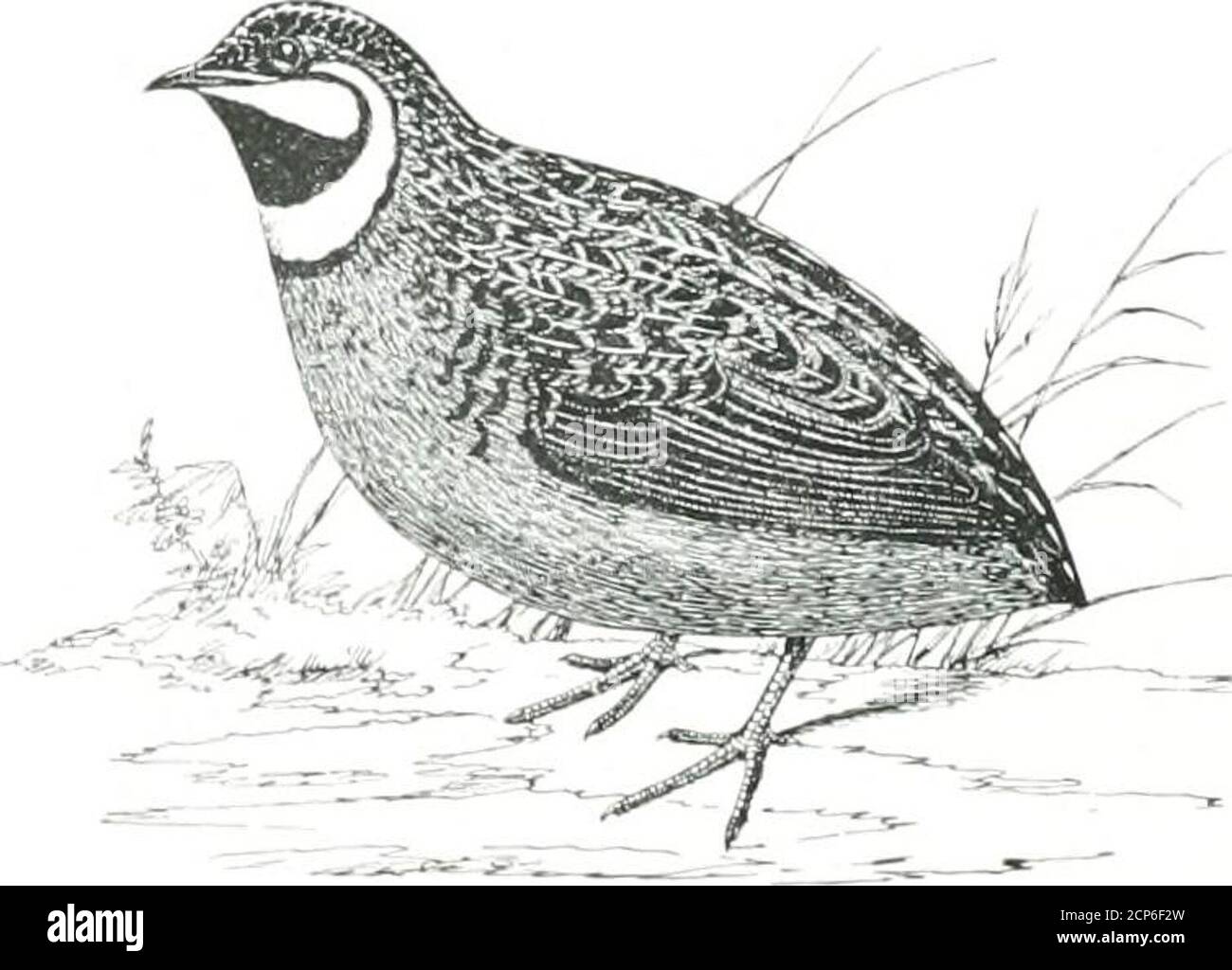 . Nests and eggs of birds found breeding in Australia and Tasmania . of Excal-fatoria auitralis. By this name it has beenscientifically l<nown to Australians for manyyears, but more recent research has revealed thefact that Giovanni Scopoli described it as OviolusUucatus, so far back as lySfi, in his Delicia?Flora et Fauna- Insubricy from specimensobtained by Sonnerat. In the latter naturalistswork Voyage a la Nouvelle Guinee, publishedat Paris in 1776, a figure of the female of thisspecies is there referred to and described as theLittle Quail of the island of Luzon. According to Ogilvie Gr Stock Photohttps://www.alamy.com/image-license-details/?v=1https://www.alamy.com/nests-and-eggs-of-birds-found-breeding-in-australia-and-tasmania-of-excal-fatoria-auitralis-by-this-name-it-has-beenscientifically-lltnown-to-australians-for-manyyears-but-more-recent-research-has-revealed-thefact-that-giovanni-scopoli-described-it-as-oviolusuucatus-so-far-back-as-lysfi-in-his-deliciaflora-et-fauna-insubricy-from-specimensobtained-by-sonnerat-in-the-latter-naturalistswork-voyage-a-la-nouvelle-guinee-publishedat-paris-in-1776-a-figure-of-the-female-of-thisspecies-is-there-referred-to-and-described-as-thelittle-quail-of-the-island-of-luzon-according-to-ogilvie-gr-image375083713.html
. Nests and eggs of birds found breeding in Australia and Tasmania . of Excal-fatoria auitralis. By this name it has beenscientifically l<nown to Australians for manyyears, but more recent research has revealed thefact that Giovanni Scopoli described it as OviolusUucatus, so far back as lySfi, in his Delicia?Flora et Fauna- Insubricy from specimensobtained by Sonnerat. In the latter naturalistswork Voyage a la Nouvelle Guinee, publishedat Paris in 1776, a figure of the female of thisspecies is there referred to and described as theLittle Quail of the island of Luzon. According to Ogilvie Gr Stock Photohttps://www.alamy.com/image-license-details/?v=1https://www.alamy.com/nests-and-eggs-of-birds-found-breeding-in-australia-and-tasmania-of-excal-fatoria-auitralis-by-this-name-it-has-beenscientifically-lltnown-to-australians-for-manyyears-but-more-recent-research-has-revealed-thefact-that-giovanni-scopoli-described-it-as-oviolusuucatus-so-far-back-as-lysfi-in-his-deliciaflora-et-fauna-insubricy-from-specimensobtained-by-sonnerat-in-the-latter-naturalistswork-voyage-a-la-nouvelle-guinee-publishedat-paris-in-1776-a-figure-of-the-female-of-thisspecies-is-there-referred-to-and-described-as-thelittle-quail-of-the-island-of-luzon-according-to-ogilvie-gr-image375083713.htmlRM2CP6F2W–. Nests and eggs of birds found breeding in Australia and Tasmania . of Excal-fatoria auitralis. By this name it has beenscientifically l<nown to Australians for manyyears, but more recent research has revealed thefact that Giovanni Scopoli described it as OviolusUucatus, so far back as lySfi, in his Delicia?Flora et Fauna- Insubricy from specimensobtained by Sonnerat. In the latter naturalistswork Voyage a la Nouvelle Guinee, publishedat Paris in 1776, a figure of the female of thisspecies is there referred to and described as theLittle Quail of the island of Luzon. According to Ogilvie Gr
 Sonnerat Stock Photohttps://www.alamy.com/image-license-details/?v=1https://www.alamy.com/stock-photo-sonnerat-136604231.html
Sonnerat Stock Photohttps://www.alamy.com/image-license-details/?v=1https://www.alamy.com/stock-photo-sonnerat-136604231.htmlRMHX6T2F–Sonnerat
 Group of Lychee fruit, food still-life Stock Photohttps://www.alamy.com/image-license-details/?v=1https://www.alamy.com/group-of-lychee-fruit-food-still-life-image233815288.html
Group of Lychee fruit, food still-life Stock Photohttps://www.alamy.com/image-license-details/?v=1https://www.alamy.com/group-of-lychee-fruit-food-still-life-image233815288.htmlRMRGB5P0–Group of Lychee fruit, food still-life
 Meerkat or suricate, Suricata suricatta. Zenik des Hottentots, Viverra tetradactyla, Mus zenik. Copperplate engraving by Desmoulins after an illustration by Pierre Sonnerat from his Voyage aux Indes Orientales et à la Chine (Voyage to the East Indies and China, Dentu, Paris, 1806. Stock Photohttps://www.alamy.com/image-license-details/?v=1https://www.alamy.com/meerkat-or-suricate-suricata-suricatta-zenik-des-hottentots-viverra-tetradactyla-mus-zenik-copperplate-engraving-by-desmoulins-after-an-illustration-by-pierre-sonnerat-from-his-voyage-aux-indes-orientales-et-la-chine-voyage-to-the-east-indies-and-china-dentu-paris-1806-image618518711.html
Meerkat or suricate, Suricata suricatta. Zenik des Hottentots, Viverra tetradactyla, Mus zenik. Copperplate engraving by Desmoulins after an illustration by Pierre Sonnerat from his Voyage aux Indes Orientales et à la Chine (Voyage to the East Indies and China, Dentu, Paris, 1806. Stock Photohttps://www.alamy.com/image-license-details/?v=1https://www.alamy.com/meerkat-or-suricate-suricata-suricatta-zenik-des-hottentots-viverra-tetradactyla-mus-zenik-copperplate-engraving-by-desmoulins-after-an-illustration-by-pierre-sonnerat-from-his-voyage-aux-indes-orientales-et-la-chine-voyage-to-the-east-indies-and-china-dentu-paris-1806-image618518711.htmlRM2XX7XWY–Meerkat or suricate, Suricata suricatta. Zenik des Hottentots, Viverra tetradactyla, Mus zenik. Copperplate engraving by Desmoulins after an illustration by Pierre Sonnerat from his Voyage aux Indes Orientales et à la Chine (Voyage to the East Indies and China, Dentu, Paris, 1806.
 Litchi, Branch with fruits of a lychee tree, Signed: P. Sonnerat pinx, Milsan sculp, Pl. 129, after p. 230 (vol. 2), Sonnerat, Pierre M. (pinx.); Milsan (sculp.), 1782, Sonnerat, Pierre Stock Photohttps://www.alamy.com/image-license-details/?v=1https://www.alamy.com/litchi-branch-with-fruits-of-a-lychee-tree-signed-p-sonnerat-pinx-milsan-sculp-pl-129-after-p-230-vol-2-sonnerat-pierre-m-pinx-milsan-sculp-1782-sonnerat-pierre-image328757138.html
Litchi, Branch with fruits of a lychee tree, Signed: P. Sonnerat pinx, Milsan sculp, Pl. 129, after p. 230 (vol. 2), Sonnerat, Pierre M. (pinx.); Milsan (sculp.), 1782, Sonnerat, Pierre Stock Photohttps://www.alamy.com/image-license-details/?v=1https://www.alamy.com/litchi-branch-with-fruits-of-a-lychee-tree-signed-p-sonnerat-pinx-milsan-sculp-pl-129-after-p-230-vol-2-sonnerat-pierre-m-pinx-milsan-sculp-1782-sonnerat-pierre-image328757138.htmlRM2A2T52A–Litchi, Branch with fruits of a lychee tree, Signed: P. Sonnerat pinx, Milsan sculp, Pl. 129, after p. 230 (vol. 2), Sonnerat, Pierre M. (pinx.); Milsan (sculp.), 1782, Sonnerat, Pierre
 India/France: 'An Indian Follower of Siva'. Engraving by Pierre Sonnerat (1748-1814), 1782. Pierre Sonnerat (1748-1814) was a French naturalist and explorer who made several voyages to Southeast Asia between 1769 and 1781. He published this two-volume account of his voyage in 1782. Volume 1 deals exclusively with India, whose culture Sonnerat very much admired, and is especially noteworthy for its extended discussion of religion in India, Hinduism in particular. Volume 2 covers Sonnerat’s travels to China, Burma, Madagascar, the Maldives, Mauritius, Ceylon, Indonesia and the Philippines. Stock Photohttps://www.alamy.com/image-license-details/?v=1https://www.alamy.com/indiafrance-an-indian-follower-of-siva-engraving-by-pierre-sonnerat-1748-1814-1782-pierre-sonnerat-1748-1814-was-a-french-naturalist-and-explorer-who-made-several-voyages-to-southeast-asia-between-1769-and-1781-he-published-this-two-volume-account-of-his-voyage-in-1782-volume-1-deals-exclusively-with-india-whose-culture-sonnerat-very-much-admired-and-is-especially-noteworthy-for-its-extended-discussion-of-religion-in-india-hinduism-in-particular-volume-2-covers-sonnerats-travels-to-china-burma-madagascar-the-maldives-mauritius-ceylon-indonesia-and-the-philippines-image344226225.html
India/France: 'An Indian Follower of Siva'. Engraving by Pierre Sonnerat (1748-1814), 1782. Pierre Sonnerat (1748-1814) was a French naturalist and explorer who made several voyages to Southeast Asia between 1769 and 1781. He published this two-volume account of his voyage in 1782. Volume 1 deals exclusively with India, whose culture Sonnerat very much admired, and is especially noteworthy for its extended discussion of religion in India, Hinduism in particular. Volume 2 covers Sonnerat’s travels to China, Burma, Madagascar, the Maldives, Mauritius, Ceylon, Indonesia and the Philippines. Stock Photohttps://www.alamy.com/image-license-details/?v=1https://www.alamy.com/indiafrance-an-indian-follower-of-siva-engraving-by-pierre-sonnerat-1748-1814-1782-pierre-sonnerat-1748-1814-was-a-french-naturalist-and-explorer-who-made-several-voyages-to-southeast-asia-between-1769-and-1781-he-published-this-two-volume-account-of-his-voyage-in-1782-volume-1-deals-exclusively-with-india-whose-culture-sonnerat-very-much-admired-and-is-especially-noteworthy-for-its-extended-discussion-of-religion-in-india-hinduism-in-particular-volume-2-covers-sonnerats-travels-to-china-burma-madagascar-the-maldives-mauritius-ceylon-indonesia-and-the-philippines-image344226225.htmlRM2B00T1N–India/France: 'An Indian Follower of Siva'. Engraving by Pierre Sonnerat (1748-1814), 1782. Pierre Sonnerat (1748-1814) was a French naturalist and explorer who made several voyages to Southeast Asia between 1769 and 1781. He published this two-volume account of his voyage in 1782. Volume 1 deals exclusively with India, whose culture Sonnerat very much admired, and is especially noteworthy for its extended discussion of religion in India, Hinduism in particular. Volume 2 covers Sonnerat’s travels to China, Burma, Madagascar, the Maldives, Mauritius, Ceylon, Indonesia and the Philippines.
 Endangered aye-aye, Daubentonia madagascariensis, and Eastern woolly lemur, eastern avahi or Gmelin's woolly lemur, Avahi laniger. As long-fingered lemur, Lemur psilodactylus, and flocky lemur, Lemur laniger. After illustrations by Pierre Sonnerat. Copperplate engraving by James Heath from George Shaws General Zoology: Mammalia, G. Kearsley, Fleet Street, London, 1800. Stock Photohttps://www.alamy.com/image-license-details/?v=1https://www.alamy.com/endangered-aye-aye-daubentonia-madagascariensis-and-eastern-woolly-lemur-eastern-avahi-or-gmelins-woolly-lemur-avahi-laniger-as-long-fingered-lemur-lemur-psilodactylus-and-flocky-lemur-lemur-laniger-after-illustrations-by-pierre-sonnerat-copperplate-engraving-by-james-heath-from-george-shaws-general-zoology-mammalia-g-kearsley-fleet-street-london-1800-image571825188.html
Endangered aye-aye, Daubentonia madagascariensis, and Eastern woolly lemur, eastern avahi or Gmelin's woolly lemur, Avahi laniger. As long-fingered lemur, Lemur psilodactylus, and flocky lemur, Lemur laniger. After illustrations by Pierre Sonnerat. Copperplate engraving by James Heath from George Shaws General Zoology: Mammalia, G. Kearsley, Fleet Street, London, 1800. Stock Photohttps://www.alamy.com/image-license-details/?v=1https://www.alamy.com/endangered-aye-aye-daubentonia-madagascariensis-and-eastern-woolly-lemur-eastern-avahi-or-gmelins-woolly-lemur-avahi-laniger-as-long-fingered-lemur-lemur-psilodactylus-and-flocky-lemur-lemur-laniger-after-illustrations-by-pierre-sonnerat-copperplate-engraving-by-james-heath-from-george-shaws-general-zoology-mammalia-g-kearsley-fleet-street-london-1800-image571825188.htmlRM2T68TT4–Endangered aye-aye, Daubentonia madagascariensis, and Eastern woolly lemur, eastern avahi or Gmelin's woolly lemur, Avahi laniger. As long-fingered lemur, Lemur psilodactylus, and flocky lemur, Lemur laniger. After illustrations by Pierre Sonnerat. Copperplate engraving by James Heath from George Shaws General Zoology: Mammalia, G. Kearsley, Fleet Street, London, 1800.
 212 Forgeron sonnerat Stock Photohttps://www.alamy.com/image-license-details/?v=1https://www.alamy.com/212-forgeron-sonnerat-image213870800.html
212 Forgeron sonnerat Stock Photohttps://www.alamy.com/image-license-details/?v=1https://www.alamy.com/212-forgeron-sonnerat-image213870800.htmlRMPBXJAT–212 Forgeron sonnerat
 . The geography of mammals. Fig. 22.—The Ruffed Lemur. (Lemur varius.) the Chiromyidtz. The Indrises (Indrisinw) form adistinct sub-family of Lemuridze with three genera, all re- THE ETHIOPIAN REGION 107 stricted to Madagascar (see Fig. 21, p. 105). The typicalLemurs (Lemwrida?) are also only found in this island(see Fig. 22, p. 106). The second family of the Lemurine Order (Chiromyidx)contains only a single genus and species, the extremely. Fig. 23.—The Aye-aye.(Chiromys madagascariensis.) anomalous Aye-aye, discovered by the traveller Sonnerat in1780 (see Fig. 23). There are generally exampl Stock Photohttps://www.alamy.com/image-license-details/?v=1https://www.alamy.com/the-geography-of-mammals-fig-22the-ruffed-lemur-lemur-varius-the-chiromyidtz-the-indrises-indrisinw-form-adistinct-sub-family-of-lemuridze-with-three-genera-all-re-the-ethiopian-region-107-stricted-to-madagascar-see-fig-21-p-105-the-typicallemurs-lemwrida-are-also-only-found-in-this-islandsee-fig-22-p-106-the-second-family-of-the-lemurine-order-chiromyidxcontains-only-a-single-genus-and-species-the-extremely-fig-23the-aye-ayechiromys-madagascariensis-anomalous-aye-aye-discovered-by-the-traveller-sonnerat-in1780-see-fig-23-there-are-generally-exampl-image370507699.html
. The geography of mammals. Fig. 22.—The Ruffed Lemur. (Lemur varius.) the Chiromyidtz. The Indrises (Indrisinw) form adistinct sub-family of Lemuridze with three genera, all re- THE ETHIOPIAN REGION 107 stricted to Madagascar (see Fig. 21, p. 105). The typicalLemurs (Lemwrida?) are also only found in this island(see Fig. 22, p. 106). The second family of the Lemurine Order (Chiromyidx)contains only a single genus and species, the extremely. Fig. 23.—The Aye-aye.(Chiromys madagascariensis.) anomalous Aye-aye, discovered by the traveller Sonnerat in1780 (see Fig. 23). There are generally exampl Stock Photohttps://www.alamy.com/image-license-details/?v=1https://www.alamy.com/the-geography-of-mammals-fig-22the-ruffed-lemur-lemur-varius-the-chiromyidtz-the-indrises-indrisinw-form-adistinct-sub-family-of-lemuridze-with-three-genera-all-re-the-ethiopian-region-107-stricted-to-madagascar-see-fig-21-p-105-the-typicallemurs-lemwrida-are-also-only-found-in-this-islandsee-fig-22-p-106-the-second-family-of-the-lemurine-order-chiromyidxcontains-only-a-single-genus-and-species-the-extremely-fig-23the-aye-ayechiromys-madagascariensis-anomalous-aye-aye-discovered-by-the-traveller-sonnerat-in1780-see-fig-23-there-are-generally-exampl-image370507699.htmlRM2CEP29R–. The geography of mammals. Fig. 22.—The Ruffed Lemur. (Lemur varius.) the Chiromyidtz. The Indrises (Indrisinw) form adistinct sub-family of Lemuridze with three genera, all re- THE ETHIOPIAN REGION 107 stricted to Madagascar (see Fig. 21, p. 105). The typicalLemurs (Lemwrida?) are also only found in this island(see Fig. 22, p. 106). The second family of the Lemurine Order (Chiromyidx)contains only a single genus and species, the extremely. Fig. 23.—The Aye-aye.(Chiromys madagascariensis.) anomalous Aye-aye, discovered by the traveller Sonnerat in1780 (see Fig. 23). There are generally exampl
 Litchi Sonnerat Stock Photohttps://www.alamy.com/image-license-details/?v=1https://www.alamy.com/stock-photo-litchi-sonnerat-136538051.html
Litchi Sonnerat Stock Photohttps://www.alamy.com/image-license-details/?v=1https://www.alamy.com/stock-photo-litchi-sonnerat-136538051.htmlRMHX3RJY–Litchi Sonnerat
 Lychees, fruit food still-life photograph Stock Photohttps://www.alamy.com/image-license-details/?v=1https://www.alamy.com/lychees-fruit-food-still-life-photograph-image233815394.html
Lychees, fruit food still-life photograph Stock Photohttps://www.alamy.com/image-license-details/?v=1https://www.alamy.com/lychees-fruit-food-still-life-photograph-image233815394.htmlRMRGB5WP–Lychees, fruit food still-life photograph
 Blue-winged pitta, Pitta moluccensis. Breve de Malacca, Turdus malaccensis. Copperplate engraving by J. J. Avril after an illustration by Pierre Sonnerat from his Voyage aux Indes Orientales et à la Chine (Voyage to the East Indies and China, Dentu, Paris, 1806. Stock Photohttps://www.alamy.com/image-license-details/?v=1https://www.alamy.com/blue-winged-pitta-pitta-moluccensis-breve-de-malacca-turdus-malaccensis-copperplate-engraving-by-j-j-avril-after-an-illustration-by-pierre-sonnerat-from-his-voyage-aux-indes-orientales-et-la-chine-voyage-to-the-east-indies-and-china-dentu-paris-1806-image618518790.html
Blue-winged pitta, Pitta moluccensis. Breve de Malacca, Turdus malaccensis. Copperplate engraving by J. J. Avril after an illustration by Pierre Sonnerat from his Voyage aux Indes Orientales et à la Chine (Voyage to the East Indies and China, Dentu, Paris, 1806. Stock Photohttps://www.alamy.com/image-license-details/?v=1https://www.alamy.com/blue-winged-pitta-pitta-moluccensis-breve-de-malacca-turdus-malaccensis-copperplate-engraving-by-j-j-avril-after-an-illustration-by-pierre-sonnerat-from-his-voyage-aux-indes-orientales-et-la-chine-voyage-to-the-east-indies-and-china-dentu-paris-1806-image618518790.htmlRM2XX7Y0P–Blue-winged pitta, Pitta moluccensis. Breve de Malacca, Turdus malaccensis. Copperplate engraving by J. J. Avril after an illustration by Pierre Sonnerat from his Voyage aux Indes Orientales et à la Chine (Voyage to the East Indies and China, Dentu, Paris, 1806.
 Ravenala fruit diet, Fruits of the Traveler's Tree, Signed: P. Sonnerat pinx, Milsan sculp, Pl. 126, before p. 223 (vol. 2), Sonnerat, Pierre M. (pinx.); Milsan (sculp.), 1782, Sonnerat, Pierre Stock Photohttps://www.alamy.com/image-license-details/?v=1https://www.alamy.com/ravenala-fruit-diet-fruits-of-the-travelers-tree-signed-p-sonnerat-pinx-milsan-sculp-pl-126-before-p-223-vol-2-sonnerat-pierre-m-pinx-milsan-sculp-1782-sonnerat-pierre-image328757133.html
Ravenala fruit diet, Fruits of the Traveler's Tree, Signed: P. Sonnerat pinx, Milsan sculp, Pl. 126, before p. 223 (vol. 2), Sonnerat, Pierre M. (pinx.); Milsan (sculp.), 1782, Sonnerat, Pierre Stock Photohttps://www.alamy.com/image-license-details/?v=1https://www.alamy.com/ravenala-fruit-diet-fruits-of-the-travelers-tree-signed-p-sonnerat-pinx-milsan-sculp-pl-126-before-p-223-vol-2-sonnerat-pierre-m-pinx-milsan-sculp-1782-sonnerat-pierre-image328757133.htmlRM2A2T525–Ravenala fruit diet, Fruits of the Traveler's Tree, Signed: P. Sonnerat pinx, Milsan sculp, Pl. 126, before p. 223 (vol. 2), Sonnerat, Pierre M. (pinx.); Milsan (sculp.), 1782, Sonnerat, Pierre
 India/France: 'An Indian Follower of Vishnu'. Engraving by Pierre Sonnerat (1748-1814), 1782. Pierre Sonnerat (1748-1814) was a French naturalist and explorer who made several voyages to Southeast Asia between 1769 and 1781. He published this two-volume account of his voyage in 1782. Volume 1 deals exclusively with India, whose culture Sonnerat very much admired, and is especially noteworthy for its extended discussion of religion in India, Hinduism in particular. Volume 2 covers Sonnerat’s travels to China, Burma, Madagascar, the Maldives, Mauritius, Ceylon, Indonesia and the Philippines. Stock Photohttps://www.alamy.com/image-license-details/?v=1https://www.alamy.com/indiafrance-an-indian-follower-of-vishnu-engraving-by-pierre-sonnerat-1748-1814-1782-pierre-sonnerat-1748-1814-was-a-french-naturalist-and-explorer-who-made-several-voyages-to-southeast-asia-between-1769-and-1781-he-published-this-two-volume-account-of-his-voyage-in-1782-volume-1-deals-exclusively-with-india-whose-culture-sonnerat-very-much-admired-and-is-especially-noteworthy-for-its-extended-discussion-of-religion-in-india-hinduism-in-particular-volume-2-covers-sonnerats-travels-to-china-burma-madagascar-the-maldives-mauritius-ceylon-indonesia-and-the-philippines-image344226226.html
India/France: 'An Indian Follower of Vishnu'. Engraving by Pierre Sonnerat (1748-1814), 1782. Pierre Sonnerat (1748-1814) was a French naturalist and explorer who made several voyages to Southeast Asia between 1769 and 1781. He published this two-volume account of his voyage in 1782. Volume 1 deals exclusively with India, whose culture Sonnerat very much admired, and is especially noteworthy for its extended discussion of religion in India, Hinduism in particular. Volume 2 covers Sonnerat’s travels to China, Burma, Madagascar, the Maldives, Mauritius, Ceylon, Indonesia and the Philippines. Stock Photohttps://www.alamy.com/image-license-details/?v=1https://www.alamy.com/indiafrance-an-indian-follower-of-vishnu-engraving-by-pierre-sonnerat-1748-1814-1782-pierre-sonnerat-1748-1814-was-a-french-naturalist-and-explorer-who-made-several-voyages-to-southeast-asia-between-1769-and-1781-he-published-this-two-volume-account-of-his-voyage-in-1782-volume-1-deals-exclusively-with-india-whose-culture-sonnerat-very-much-admired-and-is-especially-noteworthy-for-its-extended-discussion-of-religion-in-india-hinduism-in-particular-volume-2-covers-sonnerats-travels-to-china-burma-madagascar-the-maldives-mauritius-ceylon-indonesia-and-the-philippines-image344226226.htmlRM2B00T1P–India/France: 'An Indian Follower of Vishnu'. Engraving by Pierre Sonnerat (1748-1814), 1782. Pierre Sonnerat (1748-1814) was a French naturalist and explorer who made several voyages to Southeast Asia between 1769 and 1781. He published this two-volume account of his voyage in 1782. Volume 1 deals exclusively with India, whose culture Sonnerat very much admired, and is especially noteworthy for its extended discussion of religion in India, Hinduism in particular. Volume 2 covers Sonnerat’s travels to China, Burma, Madagascar, the Maldives, Mauritius, Ceylon, Indonesia and the Philippines.
 Egyptian vulture, Neophron percnopterus ginginianus. Gingi vulture, le vautour de gingi, coast of Coromandel. Handcoloured copperplate drawn and engraved by John Latham from his own A General History of Birds, Winchester, 1824. Stock Photohttps://www.alamy.com/image-license-details/?v=1https://www.alamy.com/egyptian-vulture-neophron-percnopterus-ginginianus-gingi-vulture-le-vautour-de-gingi-coast-of-coromandel-handcoloured-copperplate-drawn-and-engraved-by-john-latham-from-his-own-a-general-history-of-birds-winchester-1824-image571907611.html
Egyptian vulture, Neophron percnopterus ginginianus. Gingi vulture, le vautour de gingi, coast of Coromandel. Handcoloured copperplate drawn and engraved by John Latham from his own A General History of Birds, Winchester, 1824. Stock Photohttps://www.alamy.com/image-license-details/?v=1https://www.alamy.com/egyptian-vulture-neophron-percnopterus-ginginianus-gingi-vulture-le-vautour-de-gingi-coast-of-coromandel-handcoloured-copperplate-drawn-and-engraved-by-john-latham-from-his-own-a-general-history-of-birds-winchester-1824-image571907611.htmlRM2T6CHYR–Egyptian vulture, Neophron percnopterus ginginianus. Gingi vulture, le vautour de gingi, coast of Coromandel. Handcoloured copperplate drawn and engraved by John Latham from his own A General History of Birds, Winchester, 1824.
 462 Pagapate Sonnerat Stock Photohttps://www.alamy.com/image-license-details/?v=1https://www.alamy.com/462-pagapate-sonnerat-image213931365.html
462 Pagapate Sonnerat Stock Photohttps://www.alamy.com/image-license-details/?v=1https://www.alamy.com/462-pagapate-sonnerat-image213931365.htmlRMPC1BHW–462 Pagapate Sonnerat
 . Illustrations of Indian ornithology : containing fifty figures of new, unfigured and interesting species of birds, chiefly from the south of India . s not found in the continent of India, but occurs in the south of the Malaypeninsula, and thence extends eastward to the Isles. The Kingfisher described by Sonnerat in his voyage pi. 32, as Le Martin-pecheur de Iisle de Lutjon, the Luzonian K. of Latham No. 58, is perhaps the same as thesubject of our present plate. If not, it will form a third and closely allied species. The New Holland 3 toed Kingfishers have been separated from Ceyx by Swains Stock Photohttps://www.alamy.com/image-license-details/?v=1https://www.alamy.com/illustrations-of-indian-ornithology-containing-fifty-figures-of-new-unfigured-and-interesting-species-of-birds-chiefly-from-the-south-of-india-s-not-found-in-the-continent-of-india-but-occurs-in-the-south-of-the-malaypeninsula-and-thence-extends-eastward-to-the-isles-the-kingfisher-described-by-sonnerat-in-his-voyage-pi-32-as-le-martin-pecheur-de-iisle-de-lutjon-the-luzonian-k-of-latham-no-58-is-perhaps-the-same-as-thesubject-of-our-present-plate-if-not-it-will-form-a-third-and-closely-allied-species-the-new-holland-3-toed-kingfishers-have-been-separated-from-ceyx-by-swains-image375187027.html
. Illustrations of Indian ornithology : containing fifty figures of new, unfigured and interesting species of birds, chiefly from the south of India . s not found in the continent of India, but occurs in the south of the Malaypeninsula, and thence extends eastward to the Isles. The Kingfisher described by Sonnerat in his voyage pi. 32, as Le Martin-pecheur de Iisle de Lutjon, the Luzonian K. of Latham No. 58, is perhaps the same as thesubject of our present plate. If not, it will form a third and closely allied species. The New Holland 3 toed Kingfishers have been separated from Ceyx by Swains Stock Photohttps://www.alamy.com/image-license-details/?v=1https://www.alamy.com/illustrations-of-indian-ornithology-containing-fifty-figures-of-new-unfigured-and-interesting-species-of-birds-chiefly-from-the-south-of-india-s-not-found-in-the-continent-of-india-but-occurs-in-the-south-of-the-malaypeninsula-and-thence-extends-eastward-to-the-isles-the-kingfisher-described-by-sonnerat-in-his-voyage-pi-32-as-le-martin-pecheur-de-iisle-de-lutjon-the-luzonian-k-of-latham-no-58-is-perhaps-the-same-as-thesubject-of-our-present-plate-if-not-it-will-form-a-third-and-closely-allied-species-the-new-holland-3-toed-kingfishers-have-been-separated-from-ceyx-by-swains-image375187027.htmlRM2CPB6TK–. Illustrations of Indian ornithology : containing fifty figures of new, unfigured and interesting species of birds, chiefly from the south of India . s not found in the continent of India, but occurs in the south of the Malaypeninsula, and thence extends eastward to the Isles. The Kingfisher described by Sonnerat in his voyage pi. 32, as Le Martin-pecheur de Iisle de Lutjon, the Luzonian K. of Latham No. 58, is perhaps the same as thesubject of our present plate. If not, it will form a third and closely allied species. The New Holland 3 toed Kingfishers have been separated from Ceyx by Swains
 Pagapate Sonnerat Stock Photohttps://www.alamy.com/image-license-details/?v=1https://www.alamy.com/stock-photo-pagapate-sonnerat-136649257.html
Pagapate Sonnerat Stock Photohttps://www.alamy.com/image-license-details/?v=1https://www.alamy.com/stock-photo-pagapate-sonnerat-136649257.htmlRMHX8WEH–Pagapate Sonnerat
 Lychees, fruit food still-life photograph Stock Photohttps://www.alamy.com/image-license-details/?v=1https://www.alamy.com/lychees-fruit-food-still-life-photograph-image233815456.html
Lychees, fruit food still-life photograph Stock Photohttps://www.alamy.com/image-license-details/?v=1https://www.alamy.com/lychees-fruit-food-still-life-photograph-image233815456.htmlRMRGB600–Lychees, fruit food still-life photograph
 Madagascar harrier-hawk, Polyboroides radiatus. Autour gris a ventre raye de Madagascar. Copperplate engraving by Fessart after an illustration by Pierre Sonnerat from his Voyage aux Indes Orientales et à la Chine (Voyage to the East Indies and China, Dentu, Paris, 1806. Stock Photohttps://www.alamy.com/image-license-details/?v=1https://www.alamy.com/madagascar-harrier-hawk-polyboroides-radiatus-autour-gris-a-ventre-raye-de-madagascar-copperplate-engraving-by-fessart-after-an-illustration-by-pierre-sonnerat-from-his-voyage-aux-indes-orientales-et-la-chine-voyage-to-the-east-indies-and-china-dentu-paris-1806-image618518771.html
Madagascar harrier-hawk, Polyboroides radiatus. Autour gris a ventre raye de Madagascar. Copperplate engraving by Fessart after an illustration by Pierre Sonnerat from his Voyage aux Indes Orientales et à la Chine (Voyage to the East Indies and China, Dentu, Paris, 1806. Stock Photohttps://www.alamy.com/image-license-details/?v=1https://www.alamy.com/madagascar-harrier-hawk-polyboroides-radiatus-autour-gris-a-ventre-raye-de-madagascar-copperplate-engraving-by-fessart-after-an-illustration-by-pierre-sonnerat-from-his-voyage-aux-indes-orientales-et-la-chine-voyage-to-the-east-indies-and-china-dentu-paris-1806-image618518771.htmlRM2XX7Y03–Madagascar harrier-hawk, Polyboroides radiatus. Autour gris a ventre raye de Madagascar. Copperplate engraving by Fessart after an illustration by Pierre Sonnerat from his Voyage aux Indes Orientales et à la Chine (Voyage to the East Indies and China, Dentu, Paris, 1806.
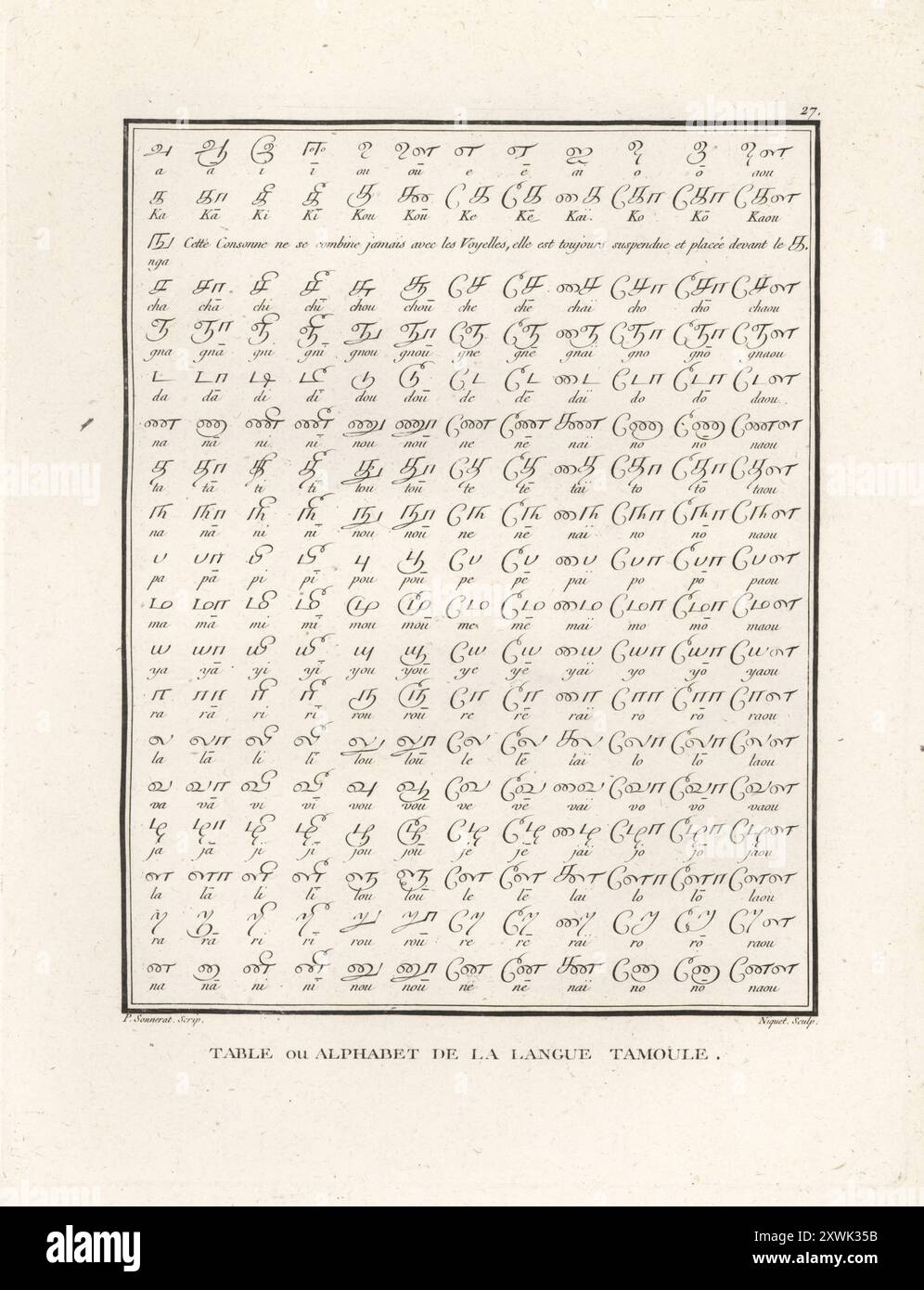 Alphabet of the Tamil language, 18th century. Table ou Alphabet de la langue Tamoule. Copperplate engraving by Niquet after an illustration by Pierre Sonnerat from his Voyage aux Indes Orientales et à la Chine (Voyage to the East Indies and China, Dentu, Paris, 1806. Stock Photohttps://www.alamy.com/image-license-details/?v=1https://www.alamy.com/alphabet-of-the-tamil-language-18th-century-table-ou-alphabet-de-la-langue-tamoule-copperplate-engraving-by-niquet-after-an-illustration-by-pierre-sonnerat-from-his-voyage-aux-indes-orientales-et-la-chine-voyage-to-the-east-indies-and-china-dentu-paris-1806-image618148871.html
Alphabet of the Tamil language, 18th century. Table ou Alphabet de la langue Tamoule. Copperplate engraving by Niquet after an illustration by Pierre Sonnerat from his Voyage aux Indes Orientales et à la Chine (Voyage to the East Indies and China, Dentu, Paris, 1806. Stock Photohttps://www.alamy.com/image-license-details/?v=1https://www.alamy.com/alphabet-of-the-tamil-language-18th-century-table-ou-alphabet-de-la-langue-tamoule-copperplate-engraving-by-niquet-after-an-illustration-by-pierre-sonnerat-from-his-voyage-aux-indes-orientales-et-la-chine-voyage-to-the-east-indies-and-china-dentu-paris-1806-image618148871.htmlRM2XWK35B–Alphabet of the Tamil language, 18th century. Table ou Alphabet de la langue Tamoule. Copperplate engraving by Niquet after an illustration by Pierre Sonnerat from his Voyage aux Indes Orientales et à la Chine (Voyage to the East Indies and China, Dentu, Paris, 1806.
 India/France: 'An Indian Widow'. Engraving by Pierre Sonnerat (1748-1814), 1782. Pierre Sonnerat (1748-1814) was a French naturalist and explorer who made several voyages to Southeast Asia between 1769 and 1781. He published this two-volume account of his voyage in 1782. Volume 1 deals exclusively with India, whose culture Sonnerat very much admired, and is especially noteworthy for its extended discussion of religion in India, Hinduism in particular. Volume 2 covers Sonnerat’s travels to China, Burma, Madagascar, the Maldives, Mauritius, Ceylon, Indonesia and the Philippines. Stock Photohttps://www.alamy.com/image-license-details/?v=1https://www.alamy.com/indiafrance-an-indian-widow-engraving-by-pierre-sonnerat-1748-1814-1782-pierre-sonnerat-1748-1814-was-a-french-naturalist-and-explorer-who-made-several-voyages-to-southeast-asia-between-1769-and-1781-he-published-this-two-volume-account-of-his-voyage-in-1782-volume-1-deals-exclusively-with-india-whose-culture-sonnerat-very-much-admired-and-is-especially-noteworthy-for-its-extended-discussion-of-religion-in-india-hinduism-in-particular-volume-2-covers-sonnerats-travels-to-china-burma-madagascar-the-maldives-mauritius-ceylon-indonesia-and-the-philippines-image344226228.html
India/France: 'An Indian Widow'. Engraving by Pierre Sonnerat (1748-1814), 1782. Pierre Sonnerat (1748-1814) was a French naturalist and explorer who made several voyages to Southeast Asia between 1769 and 1781. He published this two-volume account of his voyage in 1782. Volume 1 deals exclusively with India, whose culture Sonnerat very much admired, and is especially noteworthy for its extended discussion of religion in India, Hinduism in particular. Volume 2 covers Sonnerat’s travels to China, Burma, Madagascar, the Maldives, Mauritius, Ceylon, Indonesia and the Philippines. Stock Photohttps://www.alamy.com/image-license-details/?v=1https://www.alamy.com/indiafrance-an-indian-widow-engraving-by-pierre-sonnerat-1748-1814-1782-pierre-sonnerat-1748-1814-was-a-french-naturalist-and-explorer-who-made-several-voyages-to-southeast-asia-between-1769-and-1781-he-published-this-two-volume-account-of-his-voyage-in-1782-volume-1-deals-exclusively-with-india-whose-culture-sonnerat-very-much-admired-and-is-especially-noteworthy-for-its-extended-discussion-of-religion-in-india-hinduism-in-particular-volume-2-covers-sonnerats-travels-to-china-burma-madagascar-the-maldives-mauritius-ceylon-indonesia-and-the-philippines-image344226228.htmlRM2B00T1T–India/France: 'An Indian Widow'. Engraving by Pierre Sonnerat (1748-1814), 1782. Pierre Sonnerat (1748-1814) was a French naturalist and explorer who made several voyages to Southeast Asia between 1769 and 1781. He published this two-volume account of his voyage in 1782. Volume 1 deals exclusively with India, whose culture Sonnerat very much admired, and is especially noteworthy for its extended discussion of religion in India, Hinduism in particular. Volume 2 covers Sonnerat’s travels to China, Burma, Madagascar, the Maldives, Mauritius, Ceylon, Indonesia and the Philippines.
 Aye-aye, Daubentonia madagascariensis. Endangered four-fingered species of lemur native to Madagascar. L'aye-aye. Copperplate engraving by Desmoulins after an illustration by Pierre Sonnerat from his Voyage aux Indes Orientales et à la Chine (Voyage to the East Indies and China, Dentu, Paris, 1806. Stock Photohttps://www.alamy.com/image-license-details/?v=1https://www.alamy.com/aye-aye-daubentonia-madagascariensis-endangered-four-fingered-species-of-lemur-native-to-madagascar-laye-aye-copperplate-engraving-by-desmoulins-after-an-illustration-by-pierre-sonnerat-from-his-voyage-aux-indes-orientales-et-la-chine-voyage-to-the-east-indies-and-china-dentu-paris-1806-image618518715.html
Aye-aye, Daubentonia madagascariensis. Endangered four-fingered species of lemur native to Madagascar. L'aye-aye. Copperplate engraving by Desmoulins after an illustration by Pierre Sonnerat from his Voyage aux Indes Orientales et à la Chine (Voyage to the East Indies and China, Dentu, Paris, 1806. Stock Photohttps://www.alamy.com/image-license-details/?v=1https://www.alamy.com/aye-aye-daubentonia-madagascariensis-endangered-four-fingered-species-of-lemur-native-to-madagascar-laye-aye-copperplate-engraving-by-desmoulins-after-an-illustration-by-pierre-sonnerat-from-his-voyage-aux-indes-orientales-et-la-chine-voyage-to-the-east-indies-and-china-dentu-paris-1806-image618518715.htmlRM2XX7XX3–Aye-aye, Daubentonia madagascariensis. Endangered four-fingered species of lemur native to Madagascar. L'aye-aye. Copperplate engraving by Desmoulins after an illustration by Pierre Sonnerat from his Voyage aux Indes Orientales et à la Chine (Voyage to the East Indies and China, Dentu, Paris, 1806.
 India/France: 'A Weaver'. Engraving by Pierre Sonnerat (1748-1814), 1782. Pierre Sonnerat (1748-1814) was a French naturalist and explorer who made several voyages to Southeast Asia between 1769 and 1781. He published this two-volume account of his voyage in 1782. Volume 1 deals exclusively with India, whose culture Sonnerat very much admired, and is especially noteworthy for its extended discussion of religion in India, Hinduism in particular. Volume 2 covers Sonnerat’s travels to China, Burma, Madagascar, the Maldives, Mauritius, Ceylon, Indonesia and the Philippines. Stock Photohttps://www.alamy.com/image-license-details/?v=1https://www.alamy.com/indiafrance-a-weaver-engraving-by-pierre-sonnerat-1748-1814-1782-pierre-sonnerat-1748-1814-was-a-french-naturalist-and-explorer-who-made-several-voyages-to-southeast-asia-between-1769-and-1781-he-published-this-two-volume-account-of-his-voyage-in-1782-volume-1-deals-exclusively-with-india-whose-culture-sonnerat-very-much-admired-and-is-especially-noteworthy-for-its-extended-discussion-of-religion-in-india-hinduism-in-particular-volume-2-covers-sonnerats-travels-to-china-burma-madagascar-the-maldives-mauritius-ceylon-indonesia-and-the-philippines-image344226244.html
India/France: 'A Weaver'. Engraving by Pierre Sonnerat (1748-1814), 1782. Pierre Sonnerat (1748-1814) was a French naturalist and explorer who made several voyages to Southeast Asia between 1769 and 1781. He published this two-volume account of his voyage in 1782. Volume 1 deals exclusively with India, whose culture Sonnerat very much admired, and is especially noteworthy for its extended discussion of religion in India, Hinduism in particular. Volume 2 covers Sonnerat’s travels to China, Burma, Madagascar, the Maldives, Mauritius, Ceylon, Indonesia and the Philippines. Stock Photohttps://www.alamy.com/image-license-details/?v=1https://www.alamy.com/indiafrance-a-weaver-engraving-by-pierre-sonnerat-1748-1814-1782-pierre-sonnerat-1748-1814-was-a-french-naturalist-and-explorer-who-made-several-voyages-to-southeast-asia-between-1769-and-1781-he-published-this-two-volume-account-of-his-voyage-in-1782-volume-1-deals-exclusively-with-india-whose-culture-sonnerat-very-much-admired-and-is-especially-noteworthy-for-its-extended-discussion-of-religion-in-india-hinduism-in-particular-volume-2-covers-sonnerats-travels-to-china-burma-madagascar-the-maldives-mauritius-ceylon-indonesia-and-the-philippines-image344226244.htmlRM2B00T2C–India/France: 'A Weaver'. Engraving by Pierre Sonnerat (1748-1814), 1782. Pierre Sonnerat (1748-1814) was a French naturalist and explorer who made several voyages to Southeast Asia between 1769 and 1781. He published this two-volume account of his voyage in 1782. Volume 1 deals exclusively with India, whose culture Sonnerat very much admired, and is especially noteworthy for its extended discussion of religion in India, Hinduism in particular. Volume 2 covers Sonnerat’s travels to China, Burma, Madagascar, the Maldives, Mauritius, Ceylon, Indonesia and the Philippines.
 Rouloul de Malacca, Ostrich quail from Malacca, Signed: P. Sonnerat pinx, Féssart sculp, pl. 100, after p. 174 (vol. 2), Sonnerat, Pierre M. (pinx.); Féssart (sculp.), 1782, Sonnerat, Pierre Stock Photohttps://www.alamy.com/image-license-details/?v=1https://www.alamy.com/rouloul-de-malacca-ostrich-quail-from-malacca-signed-p-sonnerat-pinx-fssart-sculp-pl-100-after-p-174-vol-2-sonnerat-pierre-m-pinx-fssart-sculp-1782-sonnerat-pierre-image328757107.html
Rouloul de Malacca, Ostrich quail from Malacca, Signed: P. Sonnerat pinx, Féssart sculp, pl. 100, after p. 174 (vol. 2), Sonnerat, Pierre M. (pinx.); Féssart (sculp.), 1782, Sonnerat, Pierre Stock Photohttps://www.alamy.com/image-license-details/?v=1https://www.alamy.com/rouloul-de-malacca-ostrich-quail-from-malacca-signed-p-sonnerat-pinx-fssart-sculp-pl-100-after-p-174-vol-2-sonnerat-pierre-m-pinx-fssart-sculp-1782-sonnerat-pierre-image328757107.htmlRM2A2T517–Rouloul de Malacca, Ostrich quail from Malacca, Signed: P. Sonnerat pinx, Féssart sculp, pl. 100, after p. 174 (vol. 2), Sonnerat, Pierre M. (pinx.); Féssart (sculp.), 1782, Sonnerat, Pierre
 India/France: 'Metal Forgers'. Engraving by Pierre Sonnerat (1748-1814), 1782. Pierre Sonnerat (1748-1814) was a French naturalist and explorer who made several voyages to Southeast Asia between 1769 and 1781. He published this two-volume account of his voyage in 1782. Volume 1 deals exclusively with India, whose culture Sonnerat very much admired, and is especially noteworthy for its extended discussion of religion in India, Hinduism in particular. Volume 2 covers Sonnerat’s travels to China, Burma, Madagascar, the Maldives, Mauritius, Ceylon, Indonesia and the Philippines. Stock Photohttps://www.alamy.com/image-license-details/?v=1https://www.alamy.com/indiafrance-metal-forgers-engraving-by-pierre-sonnerat-1748-1814-1782-pierre-sonnerat-1748-1814-was-a-french-naturalist-and-explorer-who-made-several-voyages-to-southeast-asia-between-1769-and-1781-he-published-this-two-volume-account-of-his-voyage-in-1782-volume-1-deals-exclusively-with-india-whose-culture-sonnerat-very-much-admired-and-is-especially-noteworthy-for-its-extended-discussion-of-religion-in-india-hinduism-in-particular-volume-2-covers-sonnerats-travels-to-china-burma-madagascar-the-maldives-mauritius-ceylon-indonesia-and-the-philippines-image344226241.html
India/France: 'Metal Forgers'. Engraving by Pierre Sonnerat (1748-1814), 1782. Pierre Sonnerat (1748-1814) was a French naturalist and explorer who made several voyages to Southeast Asia between 1769 and 1781. He published this two-volume account of his voyage in 1782. Volume 1 deals exclusively with India, whose culture Sonnerat very much admired, and is especially noteworthy for its extended discussion of religion in India, Hinduism in particular. Volume 2 covers Sonnerat’s travels to China, Burma, Madagascar, the Maldives, Mauritius, Ceylon, Indonesia and the Philippines. Stock Photohttps://www.alamy.com/image-license-details/?v=1https://www.alamy.com/indiafrance-metal-forgers-engraving-by-pierre-sonnerat-1748-1814-1782-pierre-sonnerat-1748-1814-was-a-french-naturalist-and-explorer-who-made-several-voyages-to-southeast-asia-between-1769-and-1781-he-published-this-two-volume-account-of-his-voyage-in-1782-volume-1-deals-exclusively-with-india-whose-culture-sonnerat-very-much-admired-and-is-especially-noteworthy-for-its-extended-discussion-of-religion-in-india-hinduism-in-particular-volume-2-covers-sonnerats-travels-to-china-burma-madagascar-the-maldives-mauritius-ceylon-indonesia-and-the-philippines-image344226241.htmlRM2B00T29–India/France: 'Metal Forgers'. Engraving by Pierre Sonnerat (1748-1814), 1782. Pierre Sonnerat (1748-1814) was a French naturalist and explorer who made several voyages to Southeast Asia between 1769 and 1781. He published this two-volume account of his voyage in 1782. Volume 1 deals exclusively with India, whose culture Sonnerat very much admired, and is especially noteworthy for its extended discussion of religion in India, Hinduism in particular. Volume 2 covers Sonnerat’s travels to China, Burma, Madagascar, the Maldives, Mauritius, Ceylon, Indonesia and the Philippines.
 630 Vichnou 1ere incarnation Sonnerat Stock Photohttps://www.alamy.com/image-license-details/?v=1https://www.alamy.com/630-vichnou-1ere-incarnation-sonnerat-image213939647.html
630 Vichnou 1ere incarnation Sonnerat Stock Photohttps://www.alamy.com/image-license-details/?v=1https://www.alamy.com/630-vichnou-1ere-incarnation-sonnerat-image213939647.htmlRMPC1P5K–630 Vichnou 1ere incarnation Sonnerat
RM2B00TXT–India: 'Third Avatar (Incarnation) of Vishnu as Varaaha, the Boar'. Illustration by Pierre Sonnerat (1748-1814), 1782. Pierre Sonnerat (1748-1814) was a French naturalist and explorer who made several voyages to southeast Asia between 1769 and 1781. He published this two-volume account of his voyage of 1774-81 in 1782. Volume 1 deals exclusively with India, whose culture Sonnerat very much admired, and is especially noteworthy for its extended discussion of religion in India, Hinduism in particular. The book is illustrated with engravings based on Sonnerat’s drawings.
 Forgeron sonnerat Stock Photohttps://www.alamy.com/image-license-details/?v=1https://www.alamy.com/stock-photo-forgeron-sonnerat-136482031.html
Forgeron sonnerat Stock Photohttps://www.alamy.com/image-license-details/?v=1https://www.alamy.com/stock-photo-forgeron-sonnerat-136482031.htmlRMHX1867–Forgeron sonnerat
 . Illustrations of ornithology . e Verdin, Vieill. Ois. dOr, h. 77, 78. Long. Sk pollices. Hab. In Cochinchina et India. In museis plerisque. 2. C. malabaricus.—C. viridis, nitens, fronte aurantio, mento gulaque hyacinthinis, loris jugulo-que nigris, sub jugulo lunula aurea; flexuris nitide coeruleis. Turdus malabaricus, Gmel. 13th ed. ii. 837- 125—Lath. Ind. Ornith. i. 34>9. 77. Yellow-fronted Thrush, Lath. Gen. Hist. v. 64. 50. Le Petit Merle de la cote de Malabar, Voy. Sonnerat, ii. 192. Long. 6| pollices. Hab. In India. In museo Gclielmi Jaedine Baronetti, et Parisiensi. 3. C. Sonneeati Stock Photohttps://www.alamy.com/image-license-details/?v=1https://www.alamy.com/illustrations-of-ornithology-e-verdin-vieill-ois-dor-h-77-78-long-sk-pollices-hab-in-cochinchina-et-india-in-museis-plerisque-2-c-malabaricusc-viridis-nitens-fronte-aurantio-mento-gulaque-hyacinthinis-loris-jugulo-que-nigris-sub-jugulo-lunula-aurea-flexuris-nitide-coeruleis-turdus-malabaricus-gmel-13th-ed-ii-837-125lath-ind-ornith-i-34gt9-77-yellow-fronted-thrush-lath-gen-hist-v-64-50-le-petit-merle-de-la-cote-de-malabar-voy-sonnerat-ii-192-long-6-pollices-hab-in-india-in-museo-gclielmi-jaedine-baronetti-et-parisiensi-3-c-sonneeati-image374928231.html
. Illustrations of ornithology . e Verdin, Vieill. Ois. dOr, h. 77, 78. Long. Sk pollices. Hab. In Cochinchina et India. In museis plerisque. 2. C. malabaricus.—C. viridis, nitens, fronte aurantio, mento gulaque hyacinthinis, loris jugulo-que nigris, sub jugulo lunula aurea; flexuris nitide coeruleis. Turdus malabaricus, Gmel. 13th ed. ii. 837- 125—Lath. Ind. Ornith. i. 34>9. 77. Yellow-fronted Thrush, Lath. Gen. Hist. v. 64. 50. Le Petit Merle de la cote de Malabar, Voy. Sonnerat, ii. 192. Long. 6| pollices. Hab. In India. In museo Gclielmi Jaedine Baronetti, et Parisiensi. 3. C. Sonneeati Stock Photohttps://www.alamy.com/image-license-details/?v=1https://www.alamy.com/illustrations-of-ornithology-e-verdin-vieill-ois-dor-h-77-78-long-sk-pollices-hab-in-cochinchina-et-india-in-museis-plerisque-2-c-malabaricusc-viridis-nitens-fronte-aurantio-mento-gulaque-hyacinthinis-loris-jugulo-que-nigris-sub-jugulo-lunula-aurea-flexuris-nitide-coeruleis-turdus-malabaricus-gmel-13th-ed-ii-837-125lath-ind-ornith-i-34gt9-77-yellow-fronted-thrush-lath-gen-hist-v-64-50-le-petit-merle-de-la-cote-de-malabar-voy-sonnerat-ii-192-long-6-pollices-hab-in-india-in-museo-gclielmi-jaedine-baronetti-et-parisiensi-3-c-sonneeati-image374928231.htmlRM2CNYCNY–. Illustrations of ornithology . e Verdin, Vieill. Ois. dOr, h. 77, 78. Long. Sk pollices. Hab. In Cochinchina et India. In museis plerisque. 2. C. malabaricus.—C. viridis, nitens, fronte aurantio, mento gulaque hyacinthinis, loris jugulo-que nigris, sub jugulo lunula aurea; flexuris nitide coeruleis. Turdus malabaricus, Gmel. 13th ed. ii. 837- 125—Lath. Ind. Ornith. i. 34>9. 77. Yellow-fronted Thrush, Lath. Gen. Hist. v. 64. 50. Le Petit Merle de la cote de Malabar, Voy. Sonnerat, ii. 192. Long. 6| pollices. Hab. In India. In museo Gclielmi Jaedine Baronetti, et Parisiensi. 3. C. Sonneeati
